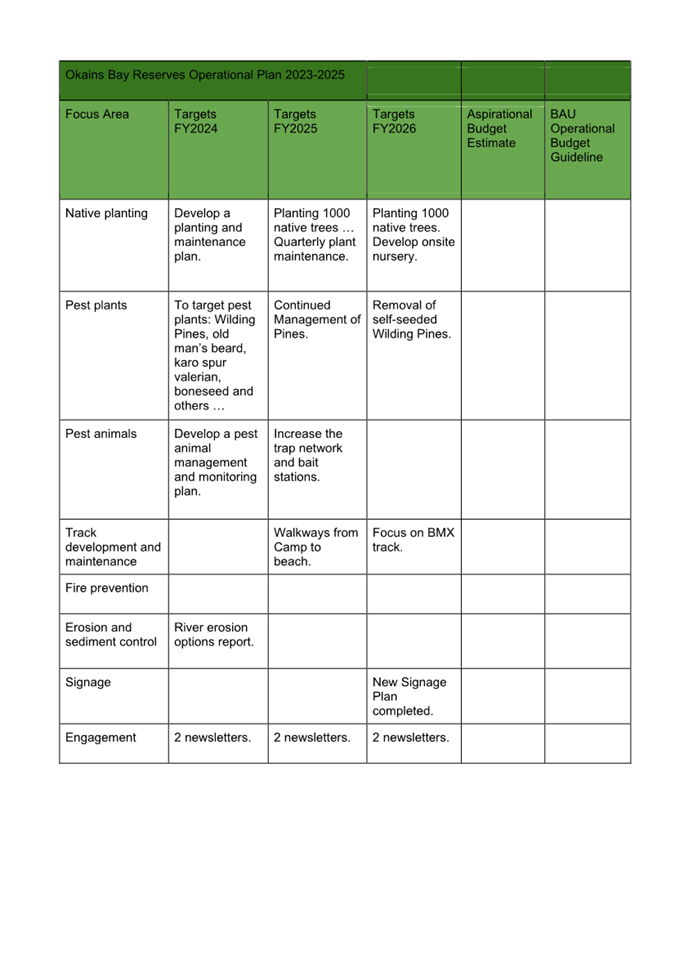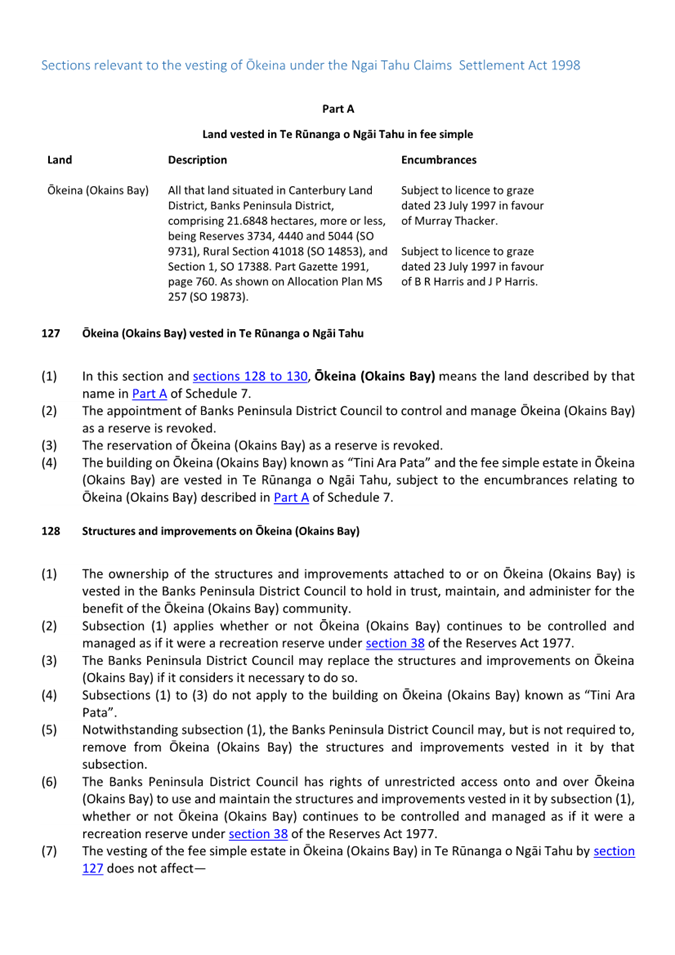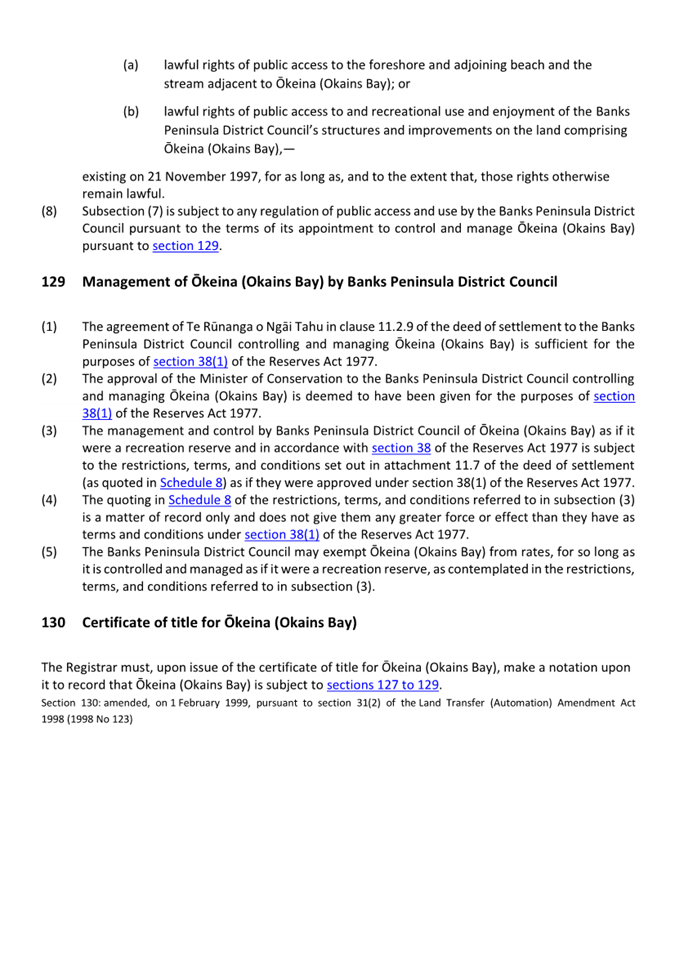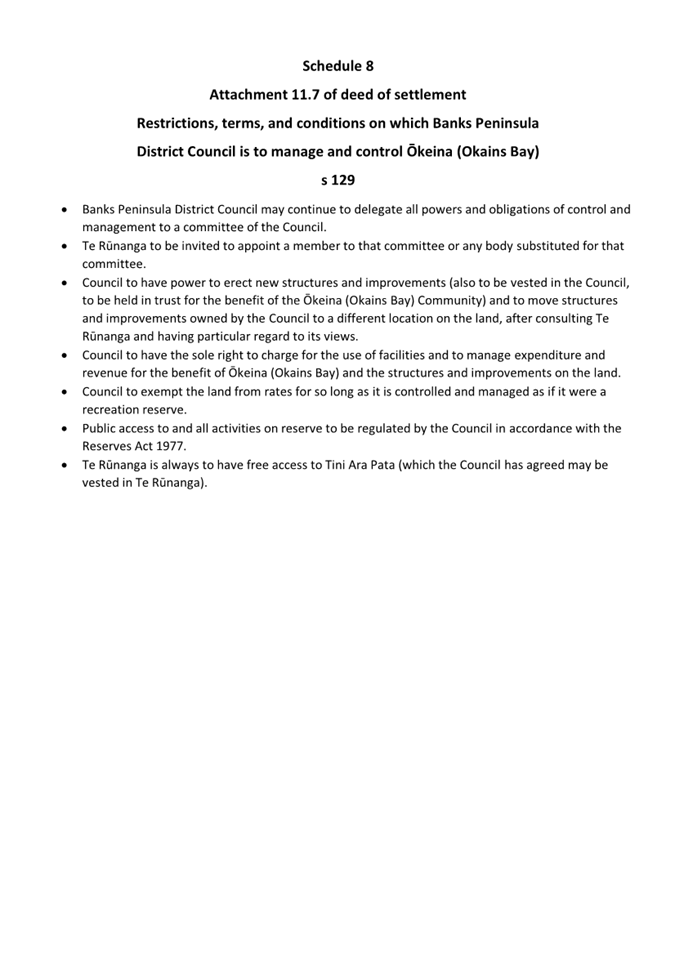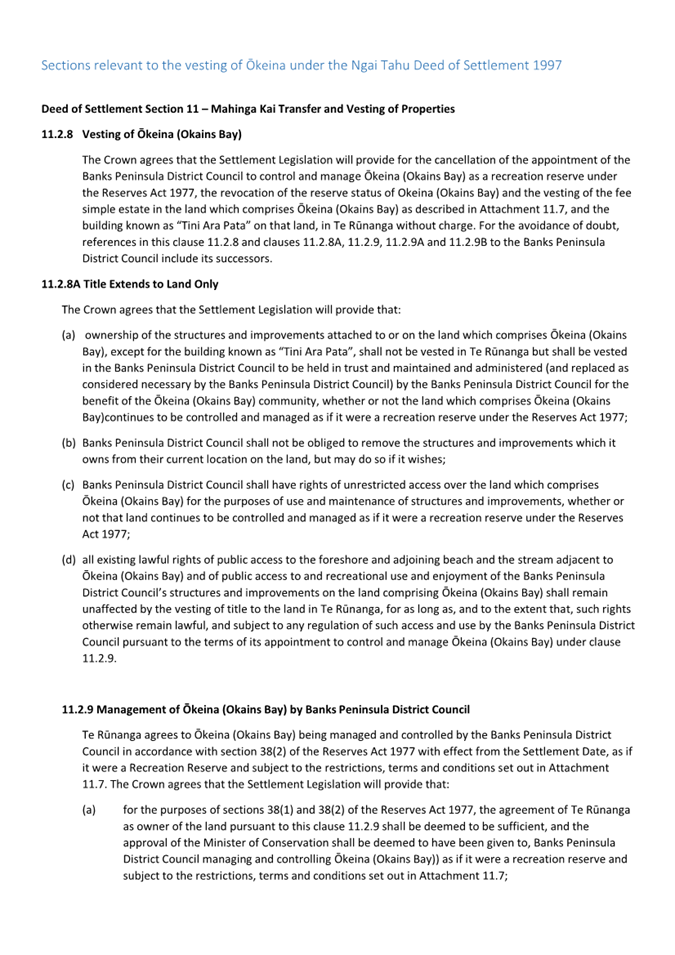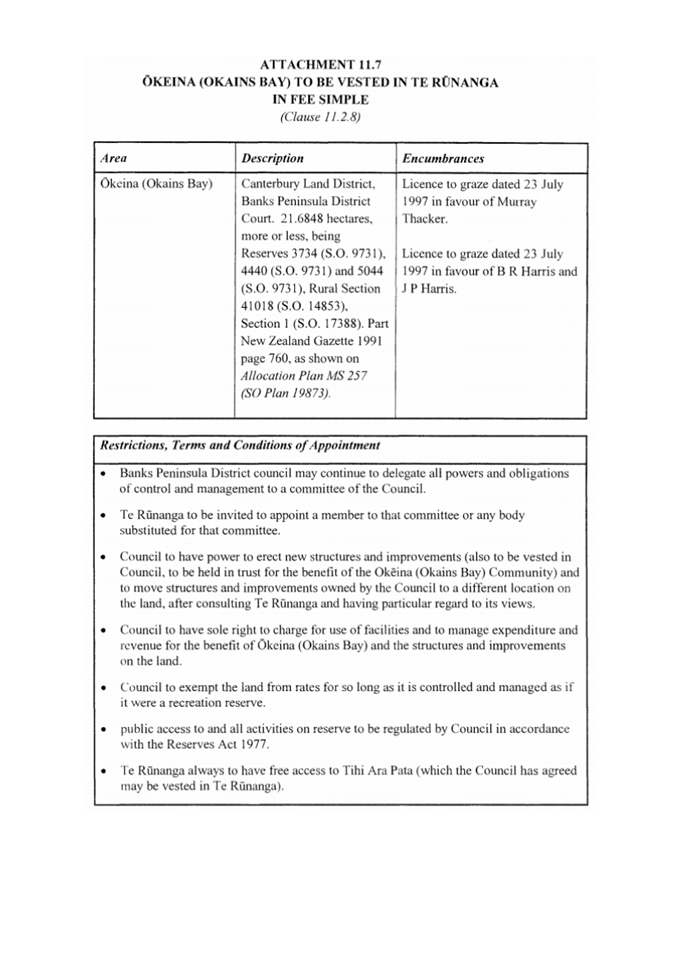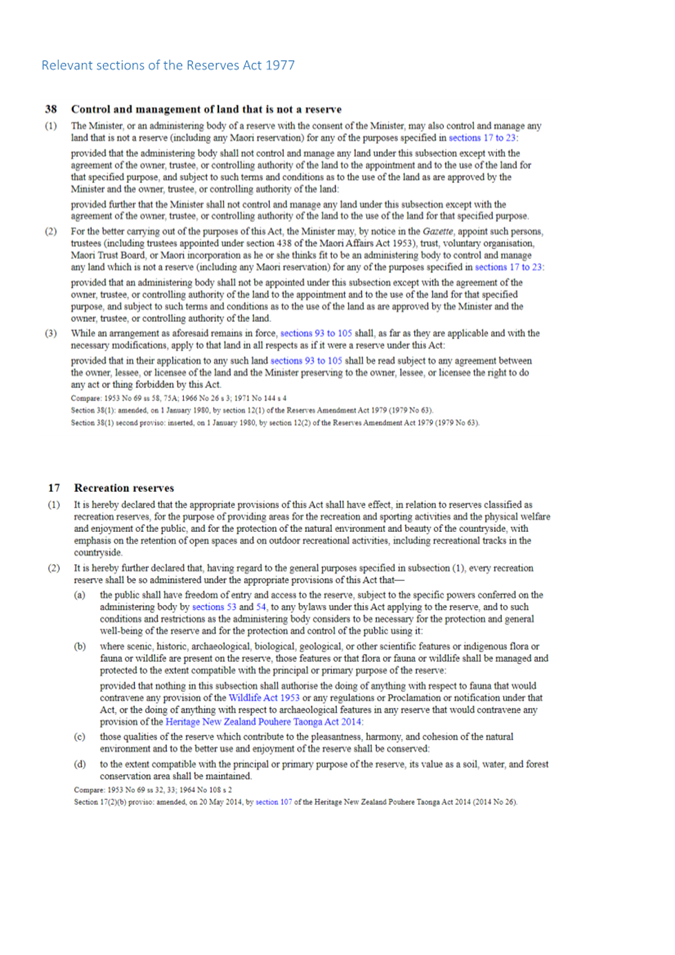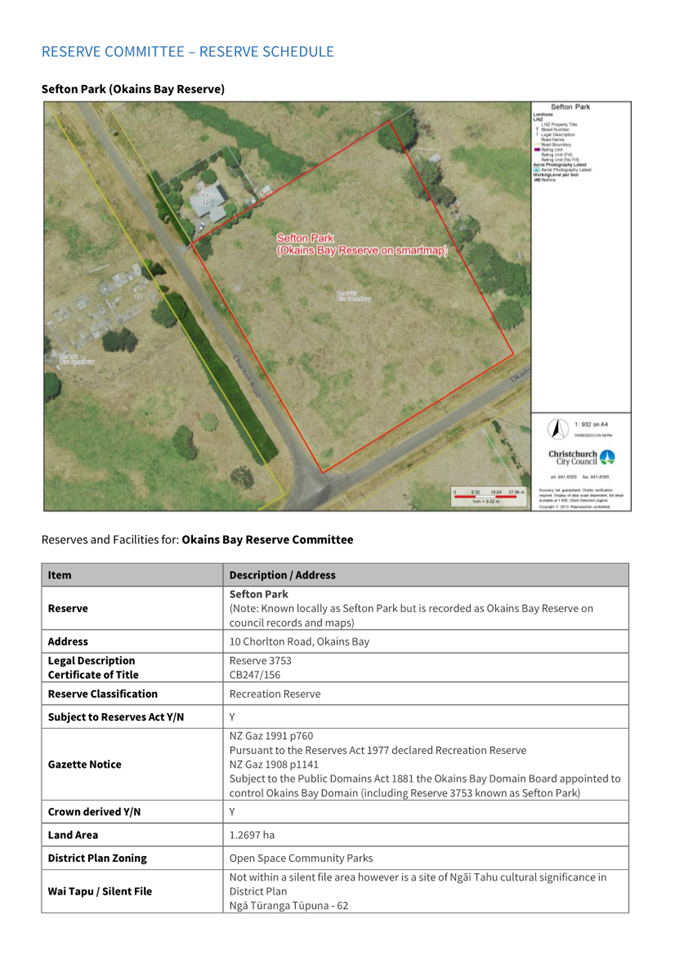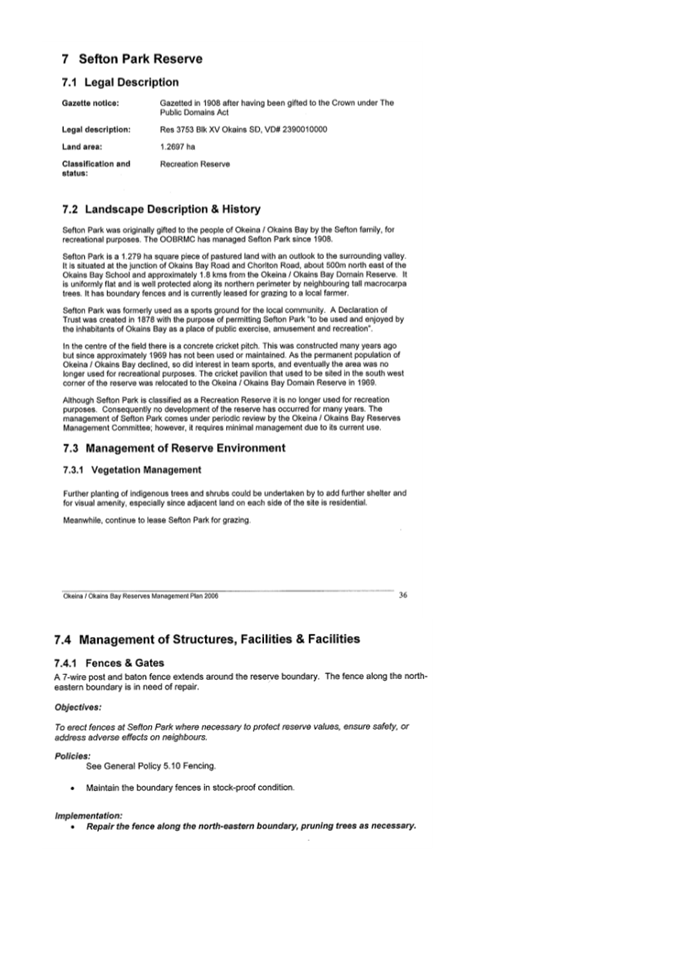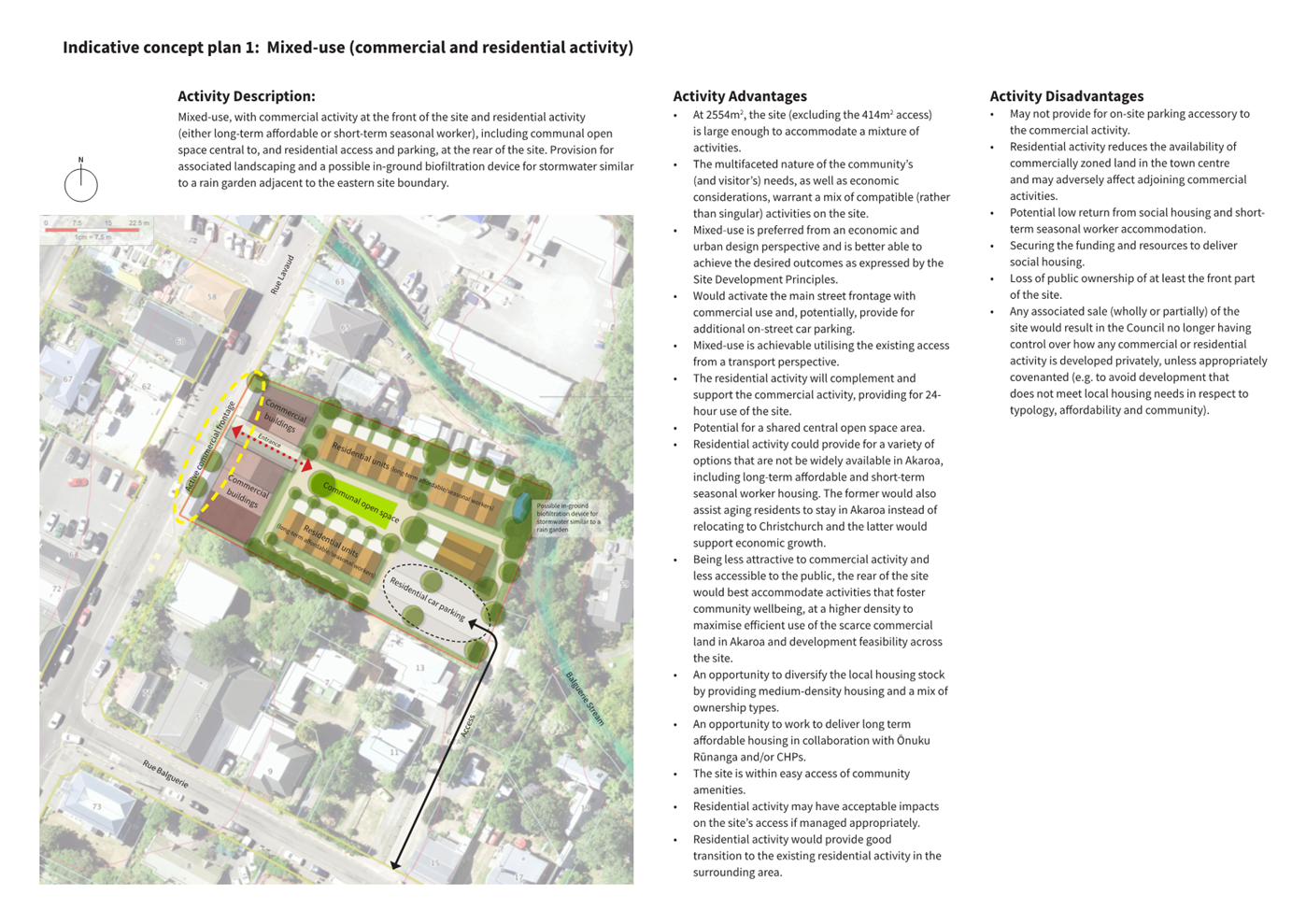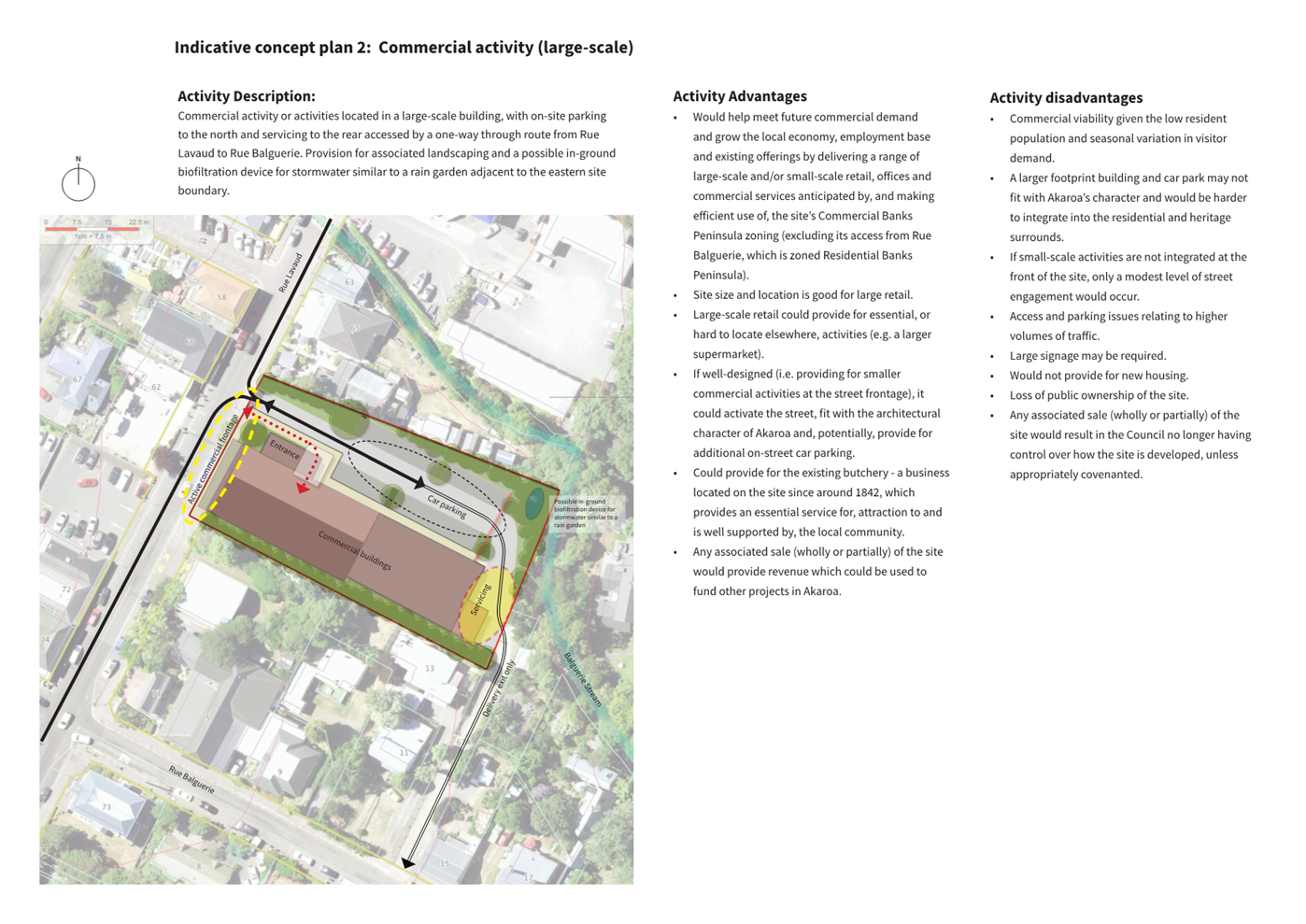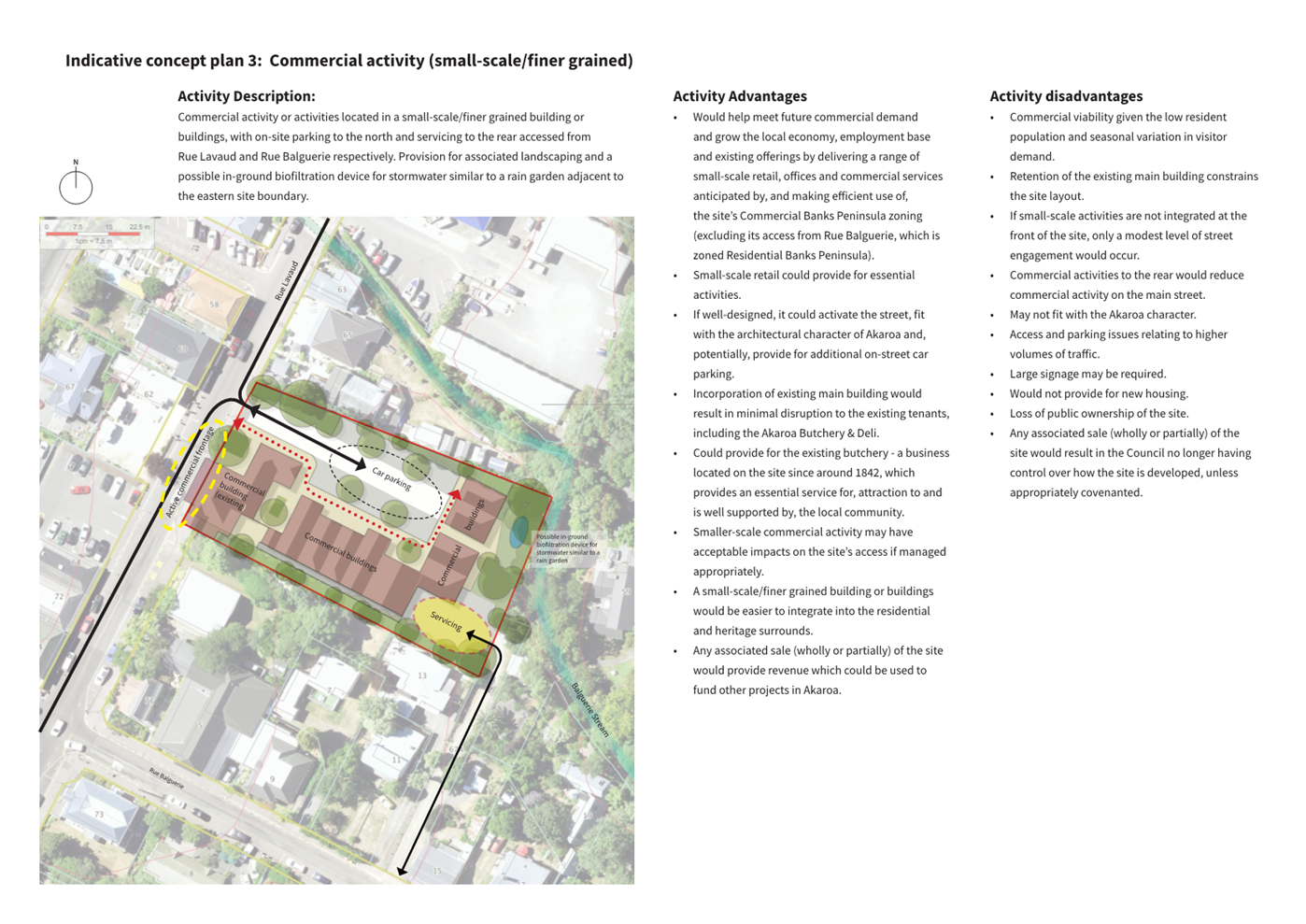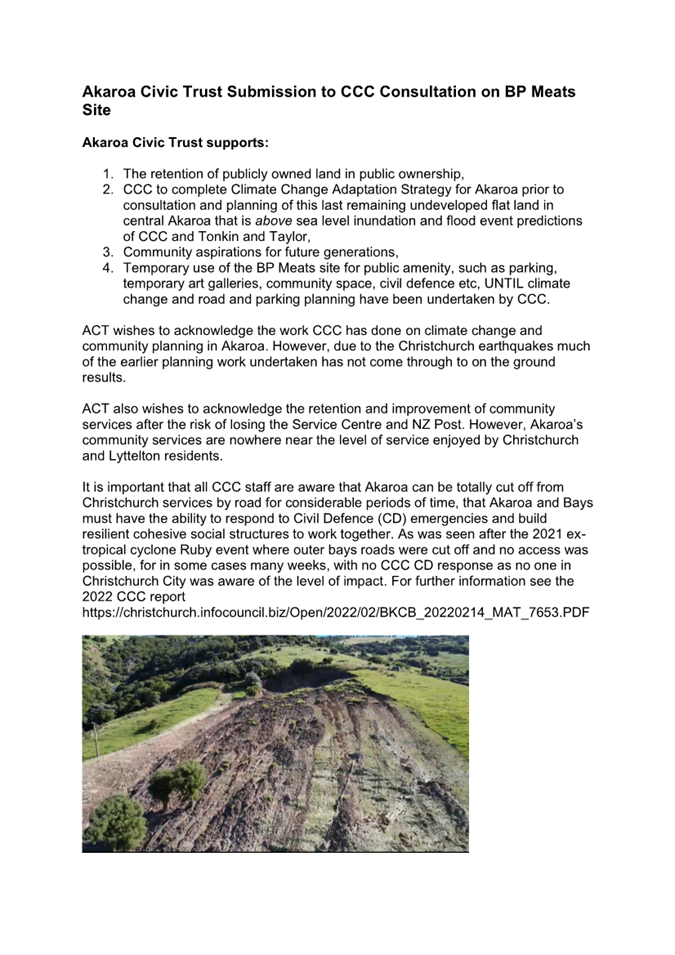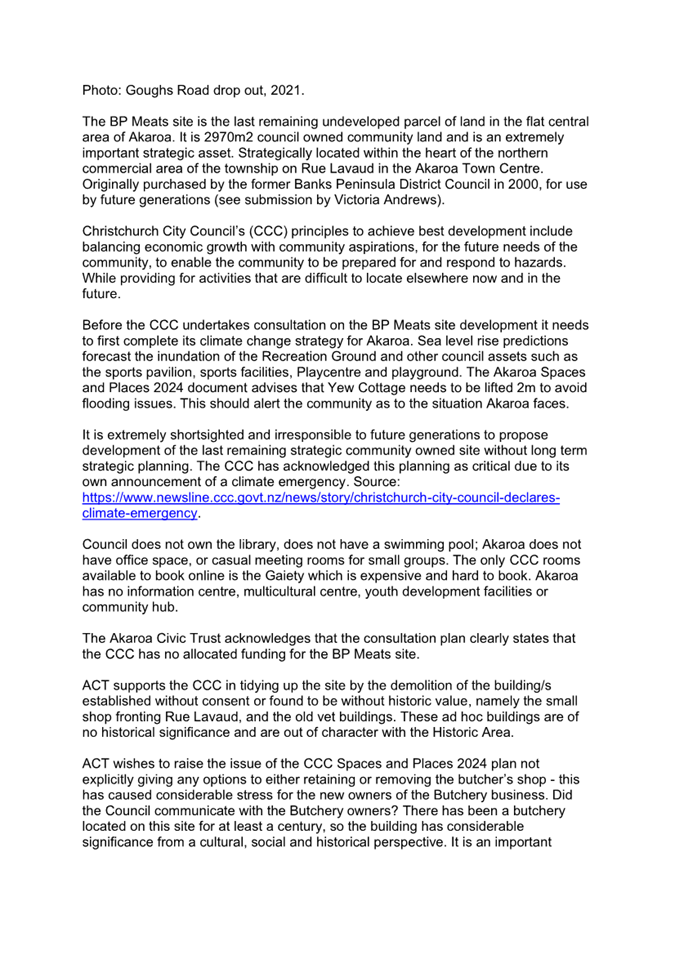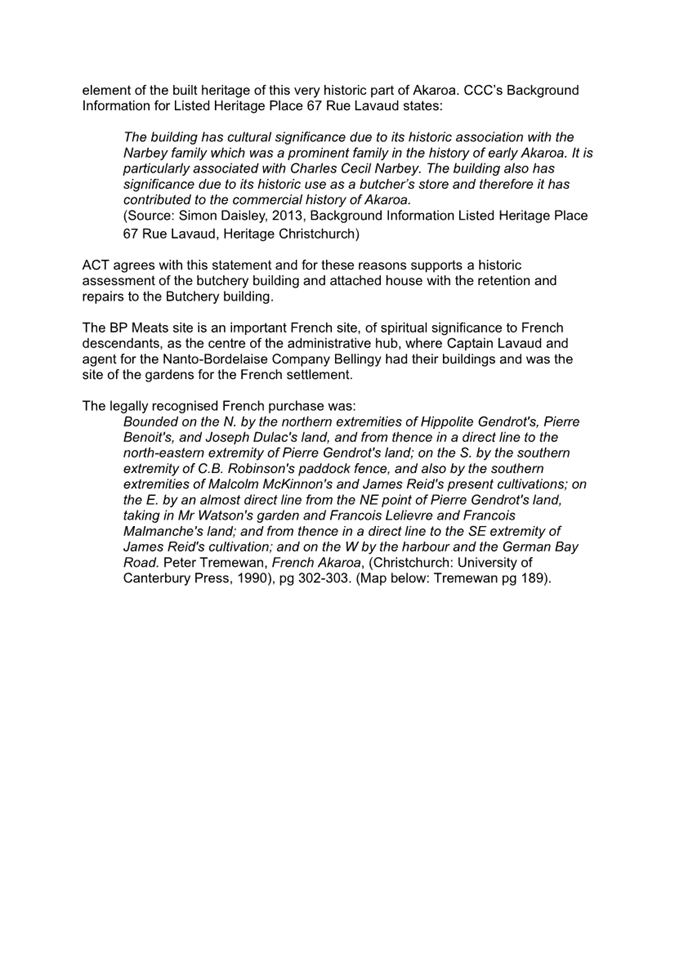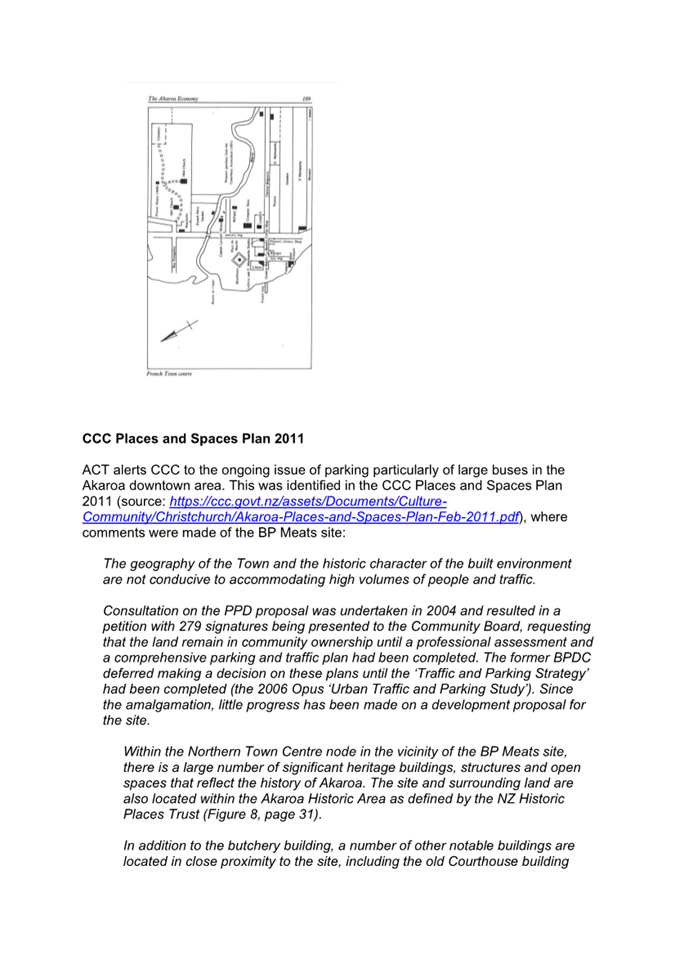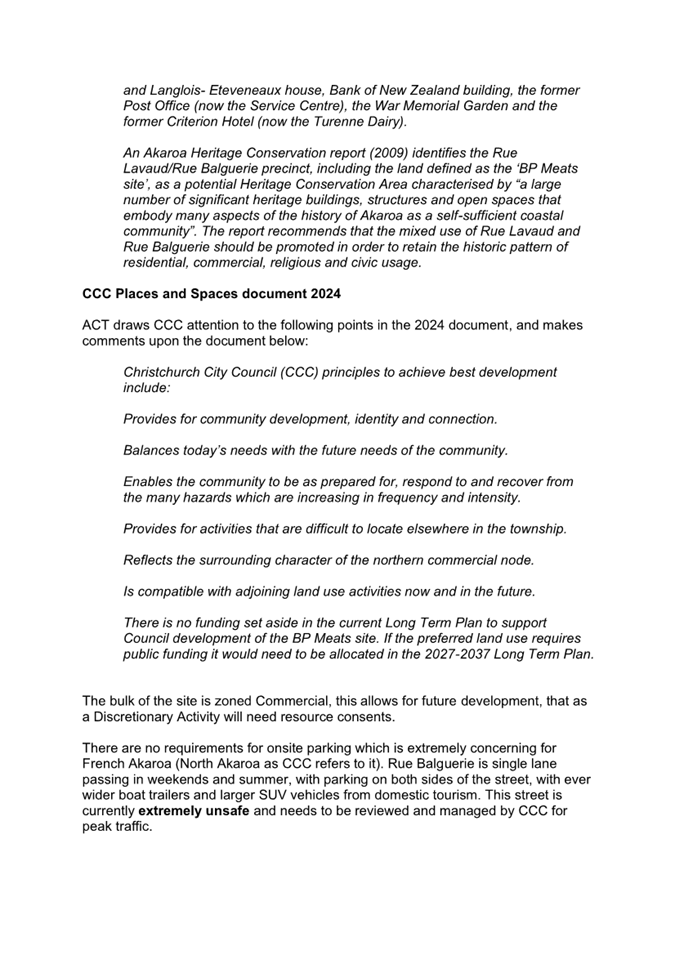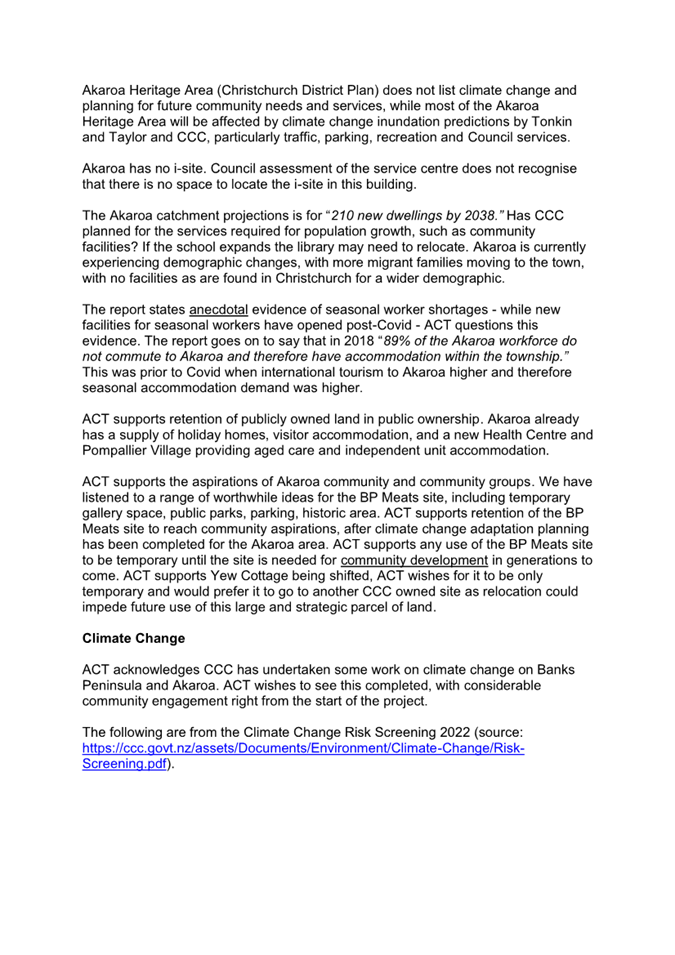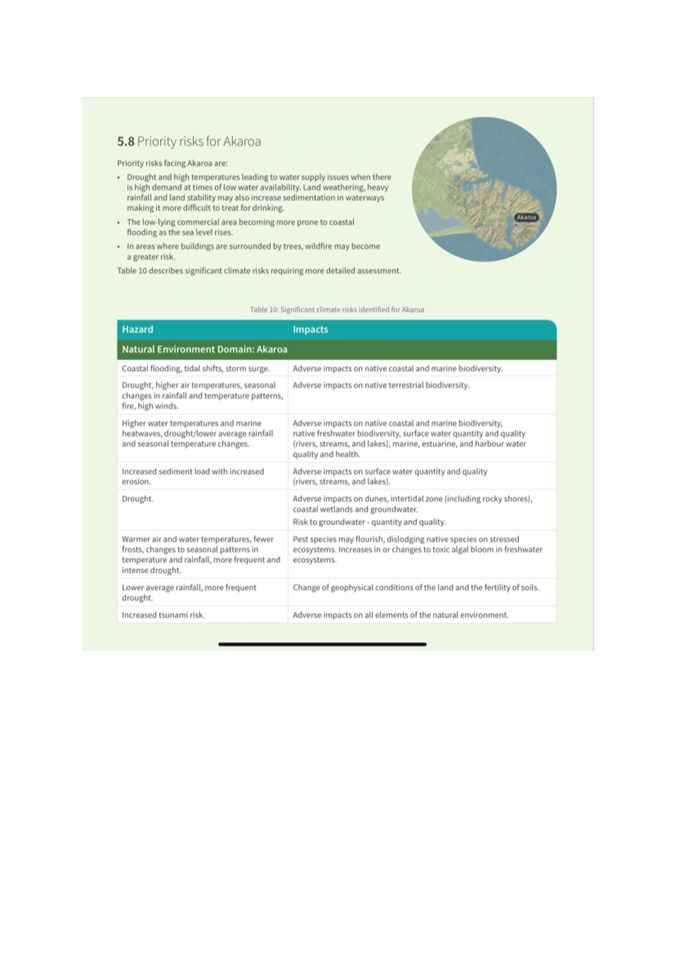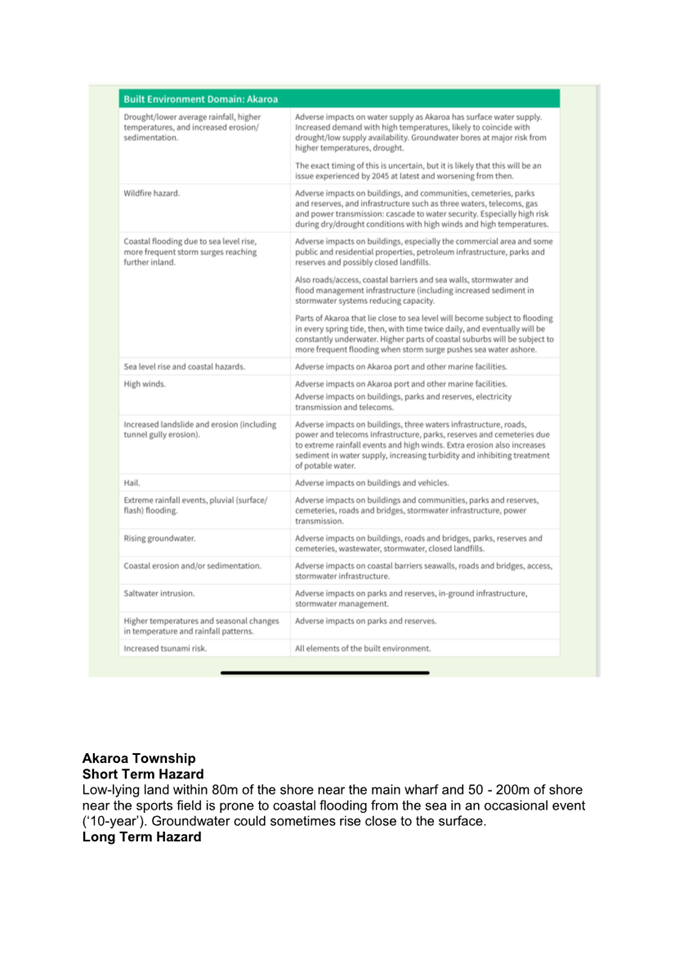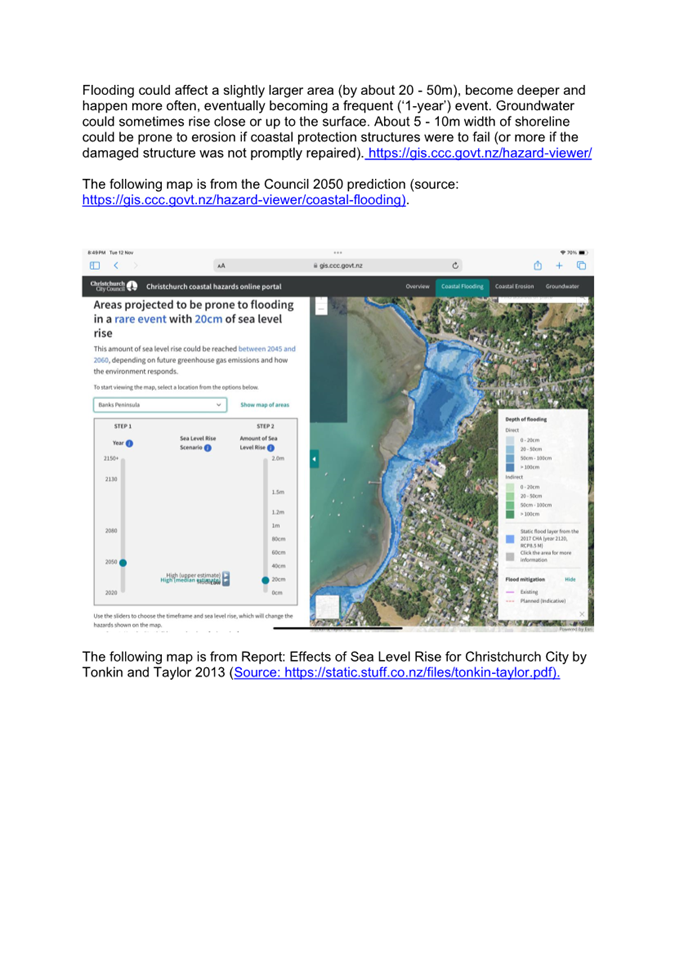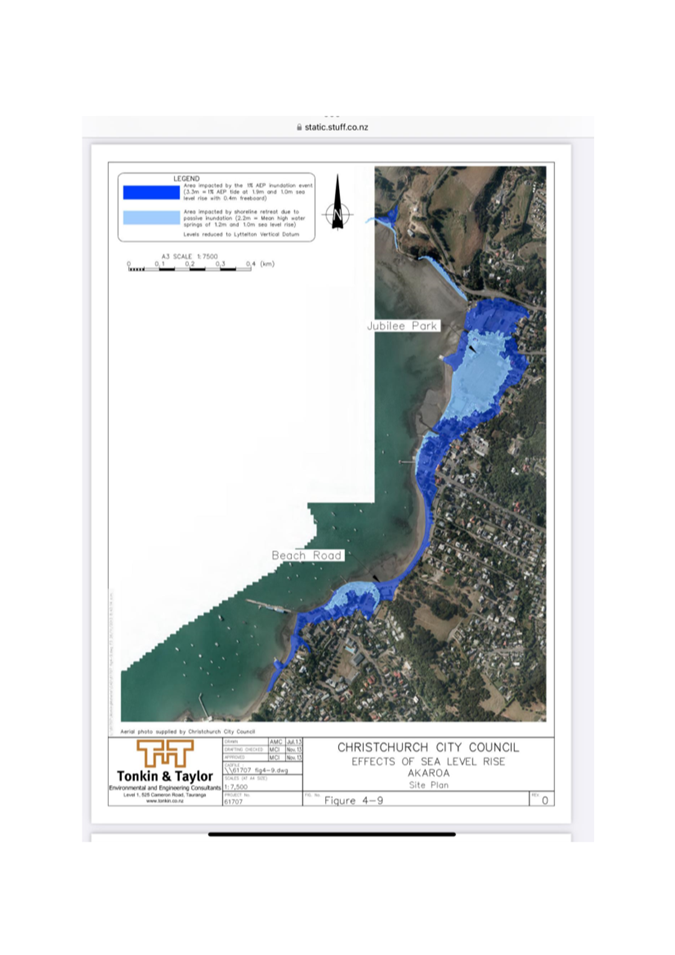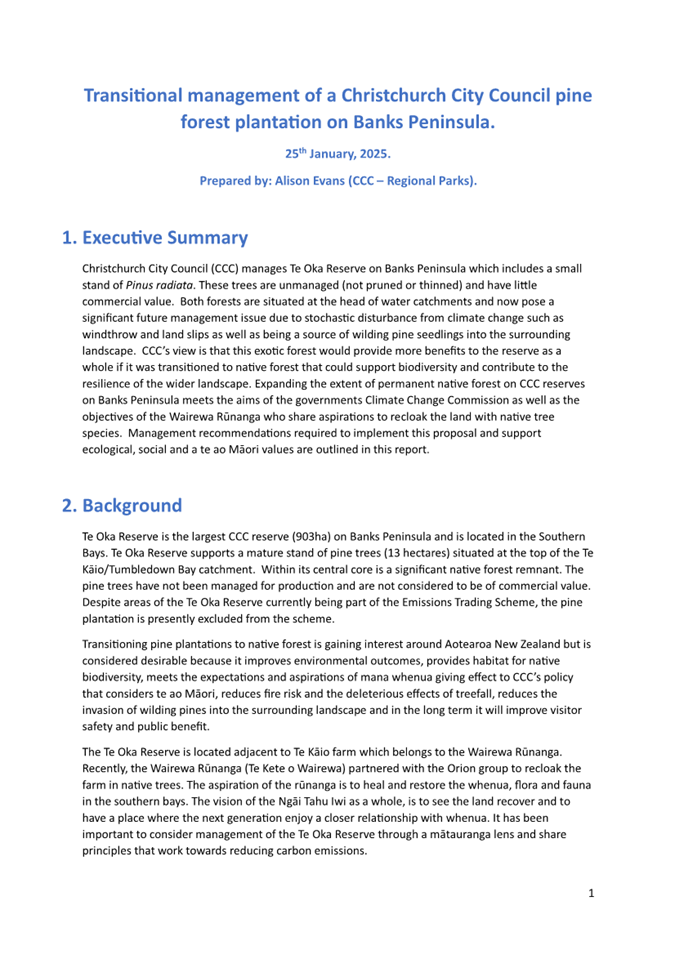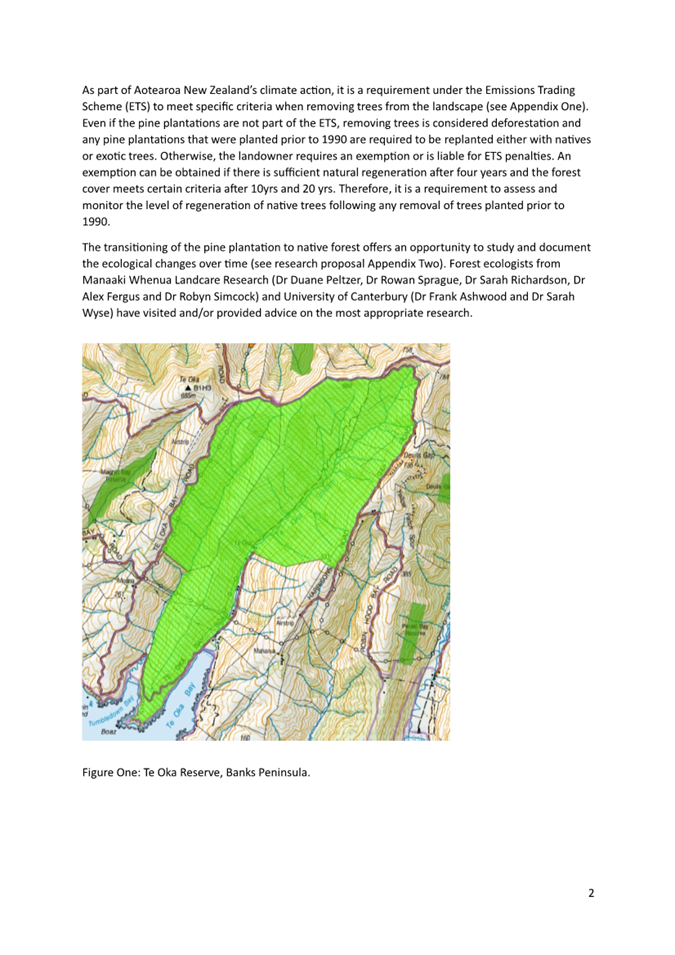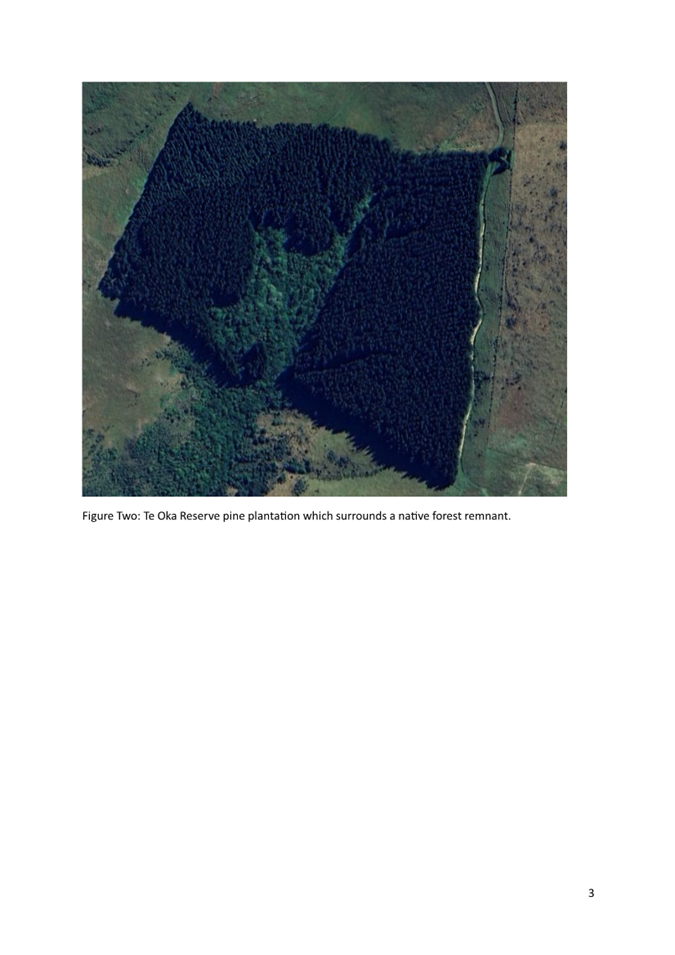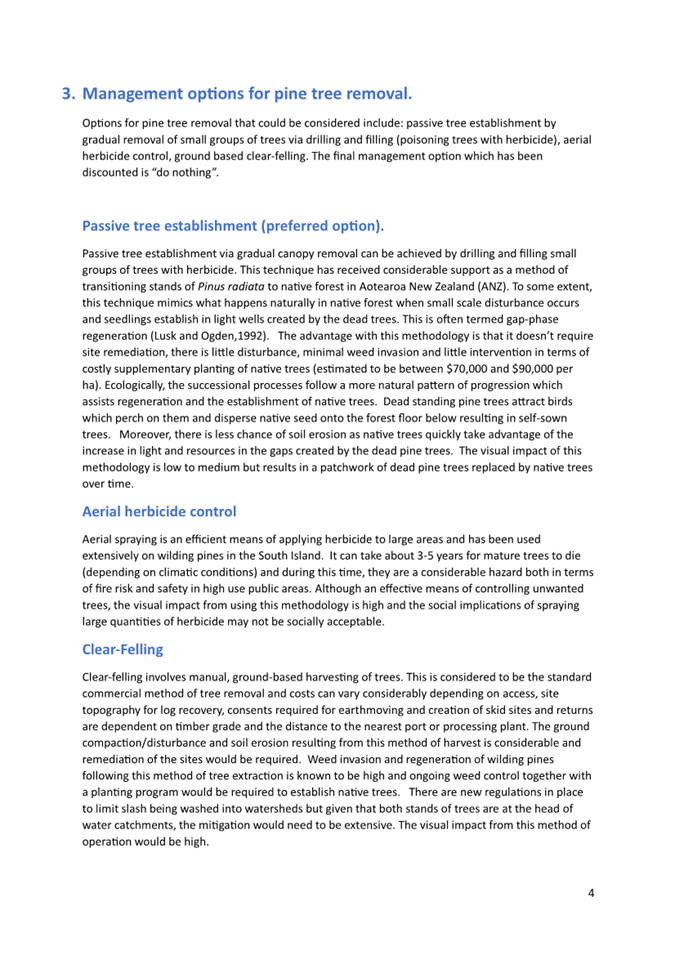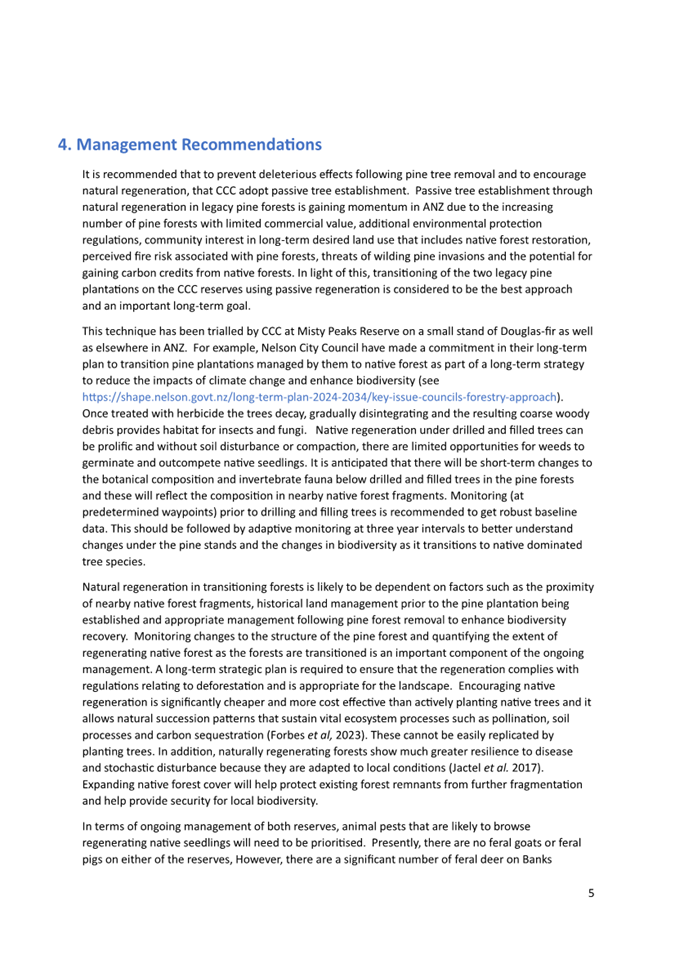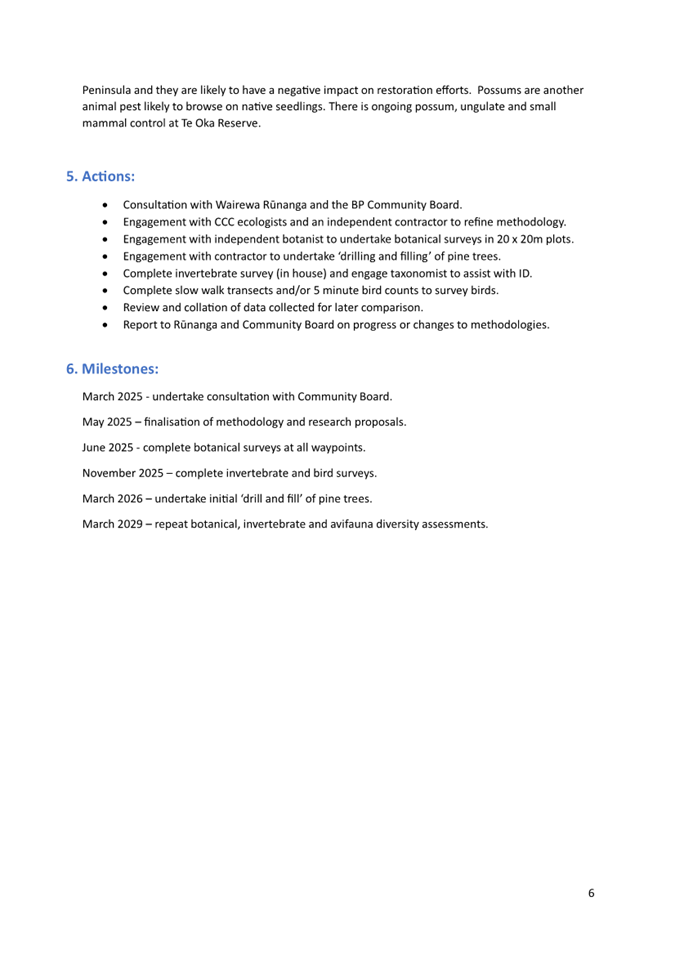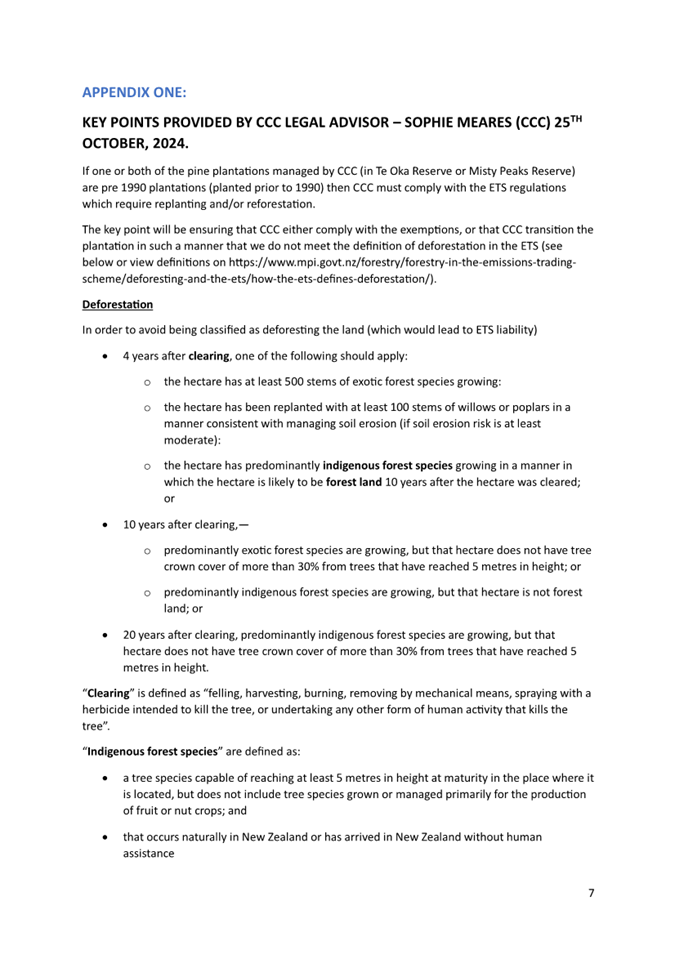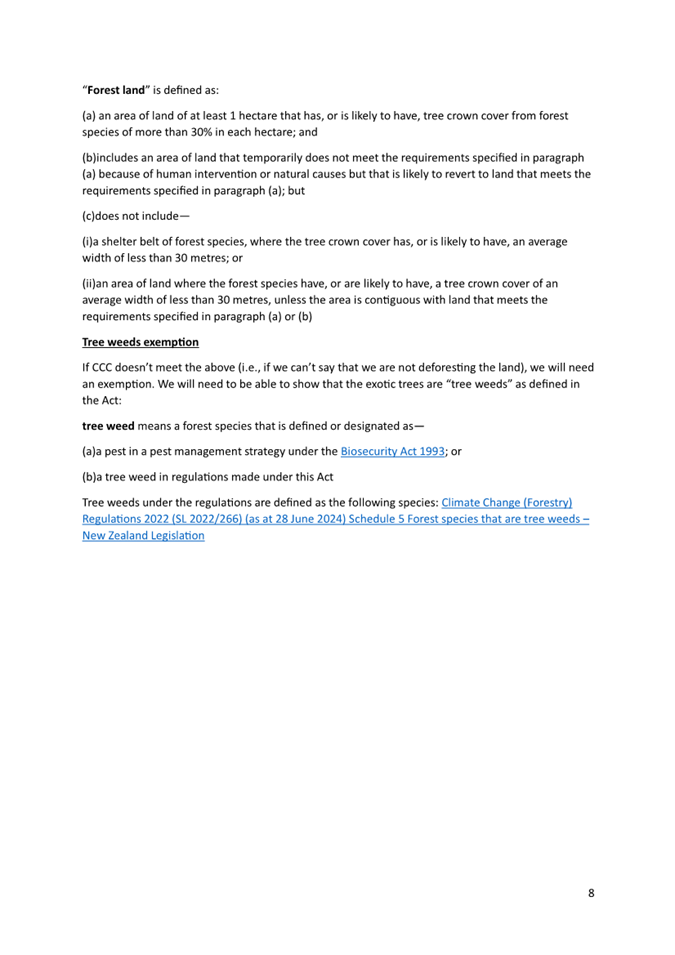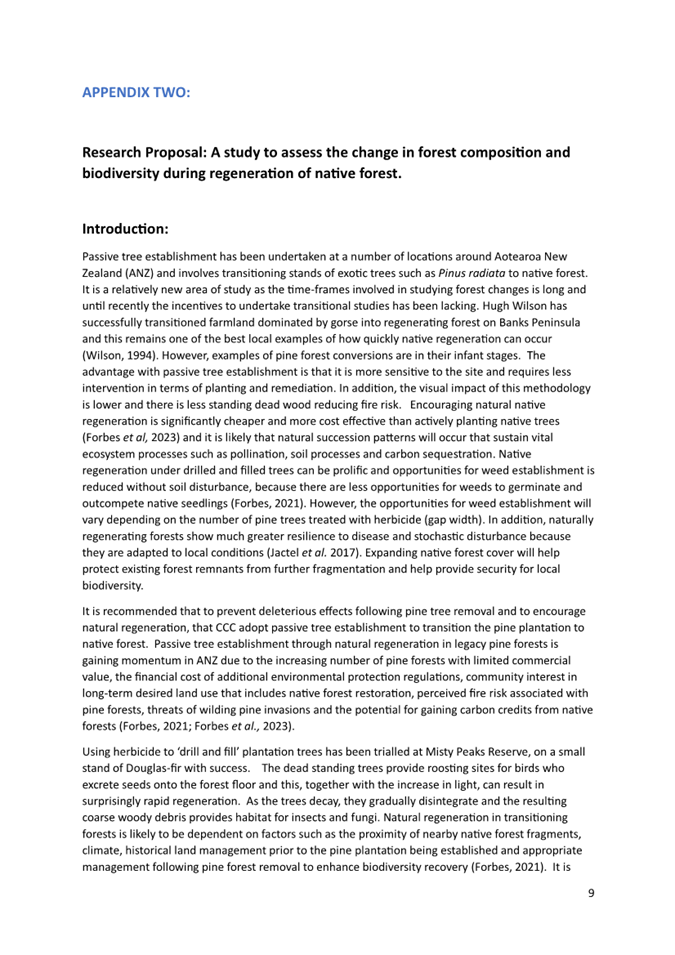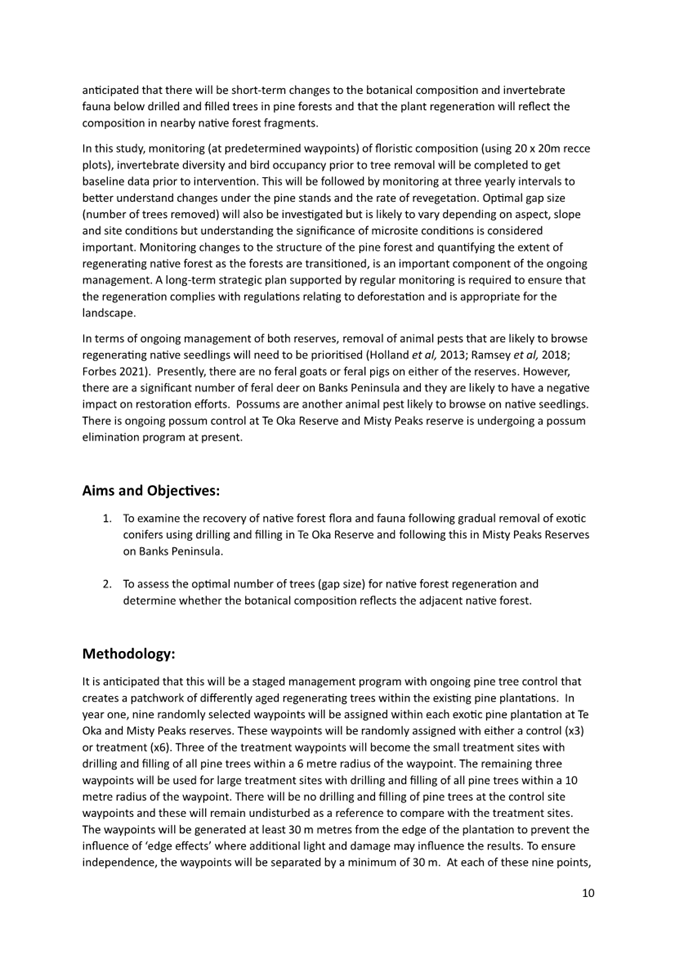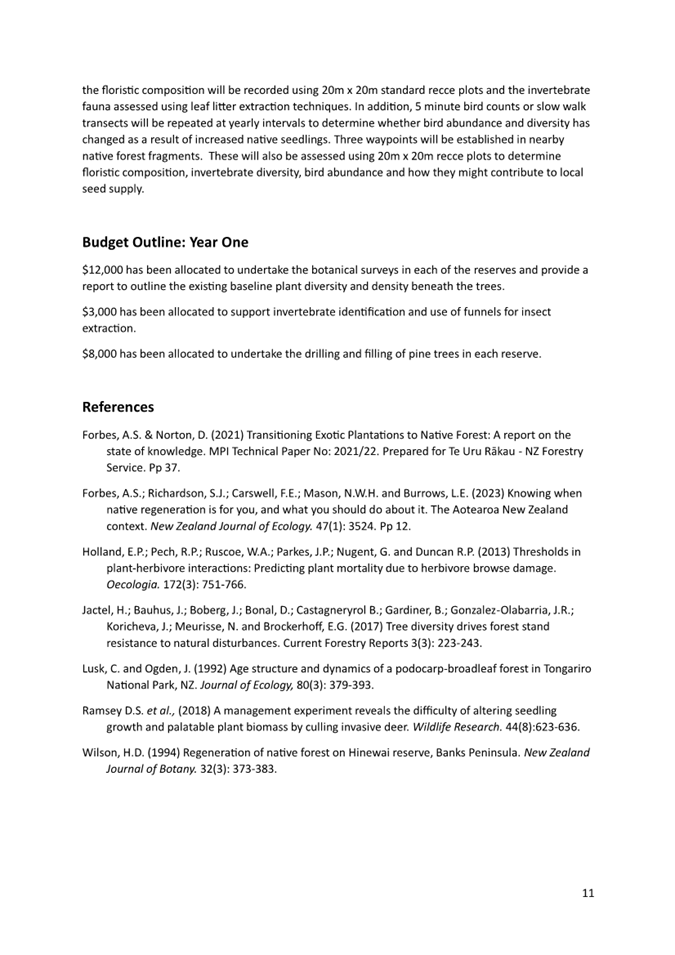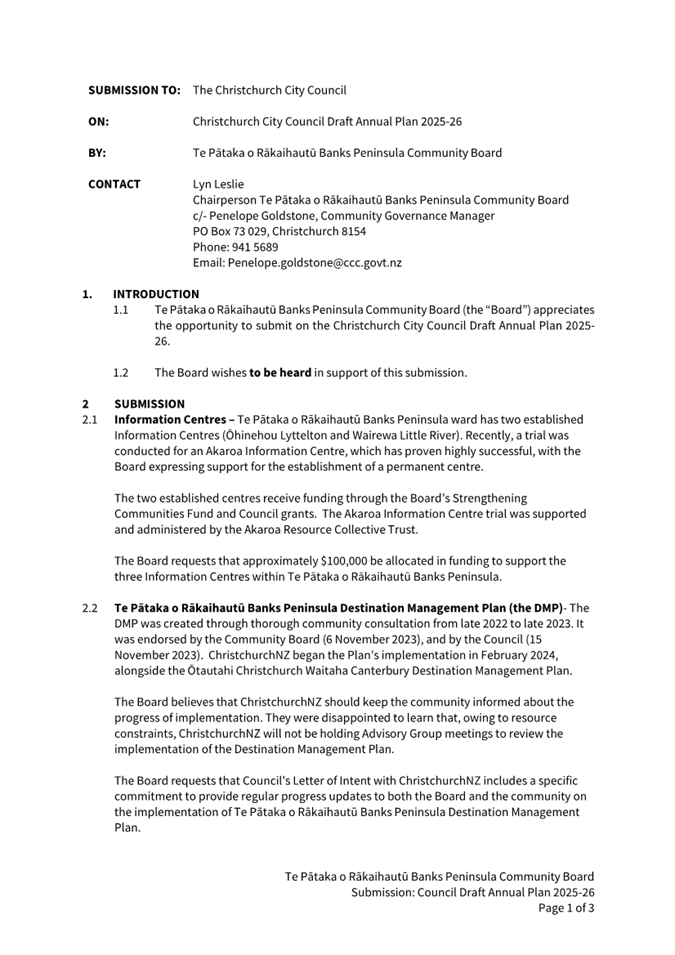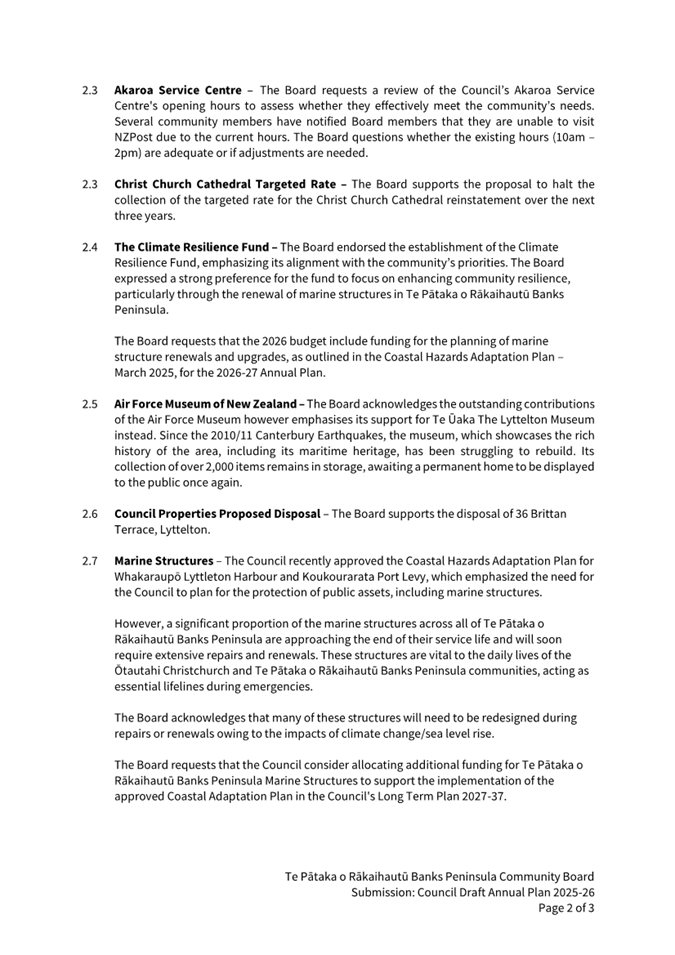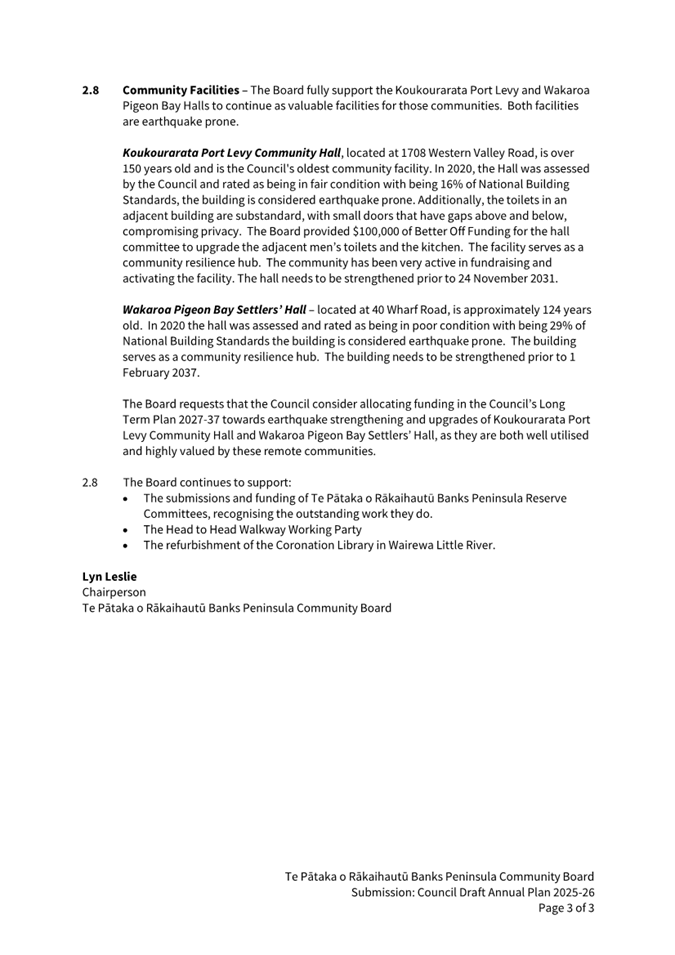
Te Pātaka o Rākaihautū
Banks Peninsula Community Board
Agenda
Notice of Meeting Te Pānui o te Hui:
An ordinary meeting of Te Pātaka o
Rākaihautū Banks Peninsula Community Board will be held
on:
Date: Monday 7 April 2025
Time: 10 am
Venue: Akaroa Boardroom, 78 Rue Lavaud Akaroa
Membership Ngā
Mema
|
Chairperson
Deputy Chairperson
Members
|
Lyn Leslie
Nigel Harrison
Tyrone Fields
Jillian Frater
Asif Hussain
Cathy Lum-Webb
Howard Needham
Luana Swindells
|
2 April 2025
Website: www.ccc.govt.nz


Part A Matters
Requiring a Council Decision
Part B Reports
for Information
Part C Decisions
Under Delegation
TABLE OF CONTENTS NGĀ IHIRANGI
Karakia Tīmatanga................................................................................................... 4
C 1. Apologies Ngā Whakapāha.......................................................................... 4
B 2. Declarations of Interest Ngā Whakapuaki Aronga........................................... 4
C 3. Confirmation of Previous Minutes Te Whakaāe o te
hui o mua.......................... 4
B 4. Public Forum Te Huinga Whānui.................................................................. 4
B 5. Deputations by Appointment Ngā Huinga
Whakaritenga................................. 4
B 6. Presentation
of Petitions Ngā
Pākikitanga.................................................... 4
B 7. Reserve
Committee Meeting Minutes.......................................................... 15
B 8. Head
to Head Walkway Working Party Notes............................................... 29
Staff Reports
C 9. Okains
Bay Reserve Committee Triennial Plan and Reserve Schedule 2023 - 26 45
C 10. 67 and
67A Rue Lavaud (BP Meats site) - Phase 1 Community Feedback & Confirming
Phase 2 Engagement Plan......................................................................... 69
C 11. Akaroa
Recreation Ground - Akaroa Playcentre New Lease........................... 105
C 12. Te Oka
Reserve - Pine plantation conversion to native forest....................... 113
C 13. Leading
Light Lane - Transition of Pine Block to Native Forest...................... 129
C 14. 2024/25
Discretionary Response Fund Applications - Akaroa Resource Collective Trust, Te
Whare Tapere O Te Mata Hapuku Society Incorporated.................. 135
C 15. Te
Pātaka o Rākaihautū Banks Peninsula Community Board Area Report
- April 2025............................................................................................................ 141
B 16. Elected Members’
Information Exchange Te Whakawhiti
Whakaaro o Te Kāhui Amorangi............................................................................................................ 151
Karakia Whakamutunga
Karakia Tīmatanga
|
Whakataka te hau ki te uru
Whakataka te hau ki te tonga
Kia mākinakina ki uta
Kia mātaratara ki tai
E hī ake ana te atakura
He tio, he huka, he hau hū
Tīhei Mauri Ora
|
Cease the winds from the west
Cease the winds from the south
Let the breeze blow over the land
Let the breeze blow over the ocean
Let the red-tipped dawn come with a sharpened air.
A touch of frost, a promise of a glorious day.
|
1. Apologies Ngā Whakapāha
Apologies will
be recorded at the meeting.
2. Declarations of Interest Ngā
Whakapuaki Aronga
Members are
reminded of the need to be vigilant and to stand aside from decision-making
when a conflict arises between their role as an elected representative and any
private or other external interest they might have.
3. Confirmation of Previous Minutes Te
Whakaāe o te hui o mua
That the
minutes of Te Pātaka o Rākaihautū Banks Peninsula Community
Board meeting held on Monday, 10 March 2025 be confirmed
(refer page 5).
4. Public Forum Te Huinga Whānui
A period of up
to 30 minutes will be available for people to speak for up to five minutes on
any issue that is not the subject of a separate hearing process.
Public Forum presentations will be
recorded in the meeting minutes.
5. Deputations by Appointment Ngā Huinga
Whakaritenga
Deputations may
be heard on a matter or matters covered by a report on this agenda and approved
by the Chairperson.
Deputations will be recorded in the
meeting minutes.
6. Presentation of Petitions Ngā
Pākikitanga
There were no petitions
received at the time the agenda was prepared.

Te Pātaka o Rākaihautū
Banks Peninsula Community Board
Open Minutes
Date: Monday 10 March 2025
Time: 10.01am
Venue: Lyttelton Community Boardroom,
25 Canterbury Street, Ōhinehou Lyttelton.
Present
|
Chairperson
Deputy Chairperson
Members
|
Lyn Leslie
Nigel Harrison
Tyrone Fields
Jillian Frater
Asif Hussain
Cathy Lum-Webb
|
Website: www.ccc.govt.nz

Part A Matters
Requiring a Council Decision
Part B Reports
for Information
Part C Decisions
Under Delegation
Karakia Tīmatanga
The agenda was dealt with in the following
order.
1. Apologies
Ngā Whakapāha
Part C
|
Community Board Resolved BKCB/2025/00010
That the apologies for lateness from Asif
Hussain and Nigel Harrison be accepted and the apologies for absence from
Luana Swindells and Howard Needham be accepted.
Lyn Leslie/Cathy
Lum-Webb Carried
|
2. Declarations
of Interest Ngā Whakapuaki Aronga
Part B
There were no
declarations of interest recorded.
Nigel Harrison
joined the meeting at 10:03am during consideration of Item 2 -Declarations of
Interest.
3. Confirmation
of Previous Minutes Te Whakaāe o te hui o mua
Part C
|
Community Board Resolved BKCB/2025/00011
That the
minutes of Te Pātaka o Rākaihautū Banks Peninsula Community
Board meeting held on Monday, 10 February 2025 be confirmed.
Lyn
Leslie/Tyrone Fields Carried
|
Asif Hussian
joined the meeting at 10:04am during consideration of Item 3 – Confirmation
of Previous Minutes.
4. Public
Forum Te Huinga Whānui
Part B
|
4.1
|
NIWA Canterbury Science Fair
Application
Leonor de la
Maza Macpherson, student, spoke to the Board regarding her recent success at
the NIWA Canterbury Science Fair.
After
questions, the Board thanked Ms de la Maza Macpherson for her presentation.
|
|
4.2
|
Proposed Matariki Awards Event
Maui Stuart,
kaumatua, spoke to the Board regarding a proposed Matariki Awards Event.
After
questions, the Board thanked Mr Stuart for his presentation
|
|
4.3 Lyttelton Harbour
Business Association
|
|
Sabrina Sauders,
Chairperson, spoke to the Board regarding the Lyttelton Harbour Business
Association’s support for the proposed Matariki Awards (refer Item 4.2
of these minutes).
Ms Saunders outlined
recent and proposed activities of the Association.
After questions, the
Board thanked Ms Saunders for her presentation.
|
|
13. Resolution to Include Supplementary
Report
|
|
|
Community Board Resolved BKCB/2025/00012
That the
report be received and considered at Te Pātaka o Rākaihautū
Banks Peninsula Community Board meeting on Monday, 10 March 2025.
Open Items
14. Koukourarata
Port Levy - Bach on Public Land (Road Reserve)
Tyrone
Fields/Asif Hussain Carried
|
5. Deputations
by Appointment Ngā Huinga Whakaritenga
Part B
|
5.1
|
Port Levy Bach on Public Land
Lindsay
Woodward, owner, spoke to the Board regarding Item 13 - Port Levy Bach on
Public Land report.
After
questions, the Board thanked Mr Woodward for his presentation.
|
|
5.2
|
Port Levy Bach on Public Land
Ian Culpan,
local resident spoke to the Board regarding Item 13 - Port Levy Bach on
Public Land report.
After
questions, the Board thanked Mr Culpan for his presentation.
|
|
14. Koukourarata Port Levy - Bach on
Public Land (Road Reserve)
|
|
|
Community Board Comment
1. The
Board took into consideration the deputations made by Lindsay Woodward and
Ian Culpan. (Item 5 of these minutes refers).
2. Tyrone
Fields moved the original officer’s recommendations with an amendment
to recommendation 2, which was seconded by Nigel Harrison:
That Te Pātaka o Rākaihautū Banks
Peninsula Community Board recommends that the Council:
2. Delegates
authority to the Property Consultancy Manager to negotiate and enter into the
Deed of Licence on Council’s standard terms and conditions, including
but not limited to:
a. A
term of 10 years less one day.
b. A
negotiated licence fee.
c. The
requirement for the licensee to hold public liability insurance of at least
$2m. d. The public’s right of access must not be obstructed, the
macrocarpa hedge must be removed, and the retaining wall must be
removed and the foreshore returned to its natural form and this must be
resolved within six months.
e. Reassessment
of the licence if the structure is reconstructed or altered.
f. Council
will not be responsible to repair or retain the structure in the event of
coastal sea level rise or other natural hazard.
3. The
meeting debated the amendment and when put to the vote the amended motion was
declared tied. The Chairperson exercised her casting vote against the
amendment therefore the amendment was lost.
4. The
original officer’s recommendations, both Part A and C, were moved by
Asif Hussain and seconded by Lyn Leslie and when put to the vote, a division
was called, and the motion was declared carried.
|
|
|
Community Board Recommendation
Amended Motion moved by Tyrone Fields
and seconded by Nigel Harrison
That Te Pātaka o Rākaihautū Banks
Peninsula Community Board recommends that the Council:
1. Approves
the granting of a licence over unformed legal road adjoining 23 and 3B Puari
Road, Port Levy to legitimise the legacy encroachment of the dwelling (the
bach) as shown in Attachment A attached to the meeting agenda report.
2. Delegates
authority to the Property Consultancy Manager to negotiate and enter into the
Deed of Licence on Council’s standard terms and conditions, including
but not limited to:
a. A
term of 10 years less one day.
b. A
negotiated licence fee.
c. The
requirement for the licensee to hold public liability insurance of at least
$2m. d. The public’s right of access must not be obstructed, and the
macrocarpa hedge must be removed, and the retaining wall must be
removed and the foreshore returned to its natural form and this must be
resolved within six months.
e. Reassessment
of the licence if the structure is reconstructed or altered.
f. Council
will not be responsible to repair or retain the structure in the event of
coastal sea level rise or other natural hazard.
That Te Pātaka o
Rākaihautū Banks Peninsula Community Board:
3. Receives the information contained within
this report for the Koukourarata /Port Levy Bach, located on the foreshore,
adjacent to properties on Puari Road.
4. Notes that the decision in this report is assessed as low
significance based on the Christchurch City Council’s Significance and
Engagement Policy.
Tyrone Fields/Nigel Harrison Lost
|
|
|
Community Board Resolved BKCB/2025/00013 Officer
recommendations accepted without change
That Te Pātaka o
Rākaihautū Banks Peninsula Community Board:
3. Receives the information contained within
this report for the Koukourarata /Port Levy Bach, located on the foreshore,
adjacent to properties on Puari Road.
4. Notes that the decision in this report is assessed as low
significance based on the Christchurch City Council’s Significance and
Engagement Policy.
The division was declared carried
by 4 votes to 2 votes the voting being as follows:
For: Lyn Leslie, Nigel Harrison, Jillian Frater and Asif Hussain
Against:
Tyrone Fields and Cathy Lum-Webb
Asif Hussain/Lyn
Leslie Carried
|
|
Community Board Decided BKCB/2025/00014 Officer
recommendations accepted without change
That Te
Pātaka o Rākaihautū Banks Peninsula Community Board recommends
that the Council recommends that the Council:
1. Approves the granting of a licence over unformed legal road
adjoining 23 and 3B Puari Road, Port Levy to legitimise the legacy
encroachment of the dwelling (the bach) as shown in Attachment A attached
to the meeting agenda report.
2. Delegates authority to the Property Consultancy Manager to
negotiate and enter into the Deed of Licence on Council’s standard
terms and conditions, including but not limited to:
a. A term of 25 years less one day.
b. A negotiated licence fee.
c. The requirement for the licensee to hold public liability
insurance of at least $2m.
d. The public’s right of access must not be obstructed, and the
macrocarpa hedge must be trimmed to the Council’s satisfaction or
removed and the retaining wall must be removed and the foreshore returned to
its natural form.
e. Reassessment of the licence if the structure is reconstructed or
altered.
f. Council will not be responsible to repair or retain the structure
in the event of coastal sea level rise or other natural hazard.
The division was declared carried
by 4 votes to 2 votes the voting being as follows:
For: Lyn Leslie, Nigel Harrison, Jillian Frater and Asif Hussain
Against:
Tyrone Fields and Cathy Lum-Webb
Asif Hussain/Lyn
Leslie Carried
|
Tyrone Fields left the meeting at 10:51 am
during consideration of item 14 - Koukourarata Port Levy - Bach on Public Land
(Road Reserve).
Tyrone Fields returned to the meeting at
10:55 am during consideration of item 14 - Koukourarata Port Levy - Bach on
Public Land (Road Reserve).
The meeting adjourned at 11:25am and
reconvened at 11:35am.
The meeting adjourned at 12:15 pm and
reconvened at 12:45 pm.
6. Presentation
of Petitions Ngā Pākikitanga
Part B
There was no
presentation of petitions.
|
7. Reserve Committee Meeting Minutes
|
|
|
Community Board Resolved BKCB/2025/00015 Officer
recommendations accepted without change
Part B
That Te
Pātaka o Rākaihautū Banks Peninsula Community Board:
1. Receives the unconfirmed minutes of the
following Reserve Committees:
a. Duvauchelle Reserve
Committee 20 January 2025
b. Duvauchelle Reserve
Committee 17 February 2025
c. Pigeon Bay Reserve
Committee 24 January 2025
d. Lyttelton Reserves
Committee 10 February 2025
e. Cass Bay Reserve
Committee 5 February 2025
f. Robinsons Bay
Reserve Committee 16 February 2025
g. Okains Bay Reserve
Committee 19 February 2025
h. Stanley Park Reserve
Committee 19 February 2025
Lyn Leslie/Nigel
Harrison Carried
|
|
8. Akaroa
Museum Advisory Committee Meeting Minutes
|
|
|
Community Board Resolved BKCB/2025/00016 Officer
recommendation accepted without change
Part B
That Te
Pātaka o Rākaihautū Banks Peninsula Community Board:
1. Receives the Akaroa Museum Advisory Committee 19 February 2025 unconfirmed
minutes.
Jillian
Frater/Cathy Lum-Webb Carried
|
|
9. Mānawa
Kāwhiu Lyttelton Recreation Centre Update
|
|
|
Community Board Comment
1. Eve
Mickell, Mānawa Kāwhiu Lyttelton Recreation Centre Trust Manager,
co-presented with staff on the Mānawa Kāwhiu Lyttelton Recreation
Centre Trust Update report, advising the Board of recent events and future
projects.
2. The
Mānawa Kāwhiu Lyttelton Recreation Centre Trust asked the Board to
consider a liaison Board member for the Trust.
|
|
|
Officer Recommendations Ngā
Tūtohu
That Te
Pātaka o Rākaihautū Banks Peninsula Community Board:
1. Receives the information in the Mānawa Kāwhiu Lyttelton
Recreation Centre Update Report.
|
|
|
Community Board Resolved BKCB/2025/00017
Part C
That Te
Pātaka o Rākaihautū Banks Peninsula Community Board:
1. Receives the information in the Mānawa Kāwhiu Lyttelton
Recreation Centre Update Report.
2. Appoints Cathy Lum-Webb and Jillian
Frater as liaison Board member to Mānawa
Kāwhiu Lyttelton Recreation Centre Trust.
Nigel
Harrison/Tyrone Fields Carried
|
Nigel Harrison left the meeting at 1:15 pm
during consideration of Item 10 - Mānawa Kāwhiu Lyttelton Recreation
Centre Trust Update report.
Nigel Harrison returned to the meeting at
1:19 pm during consideration of Item 10 Mānawa Kāwhiu Lyttelton
Recreation Centre Trust.
|
10. Te
Pātaka o Rākaihautū Banks Peninsula Community Board Plan
Monitoring
|
|
|
Community Board Resolved BKCB/2025/00018
Officer recommendation accepted without change
Part C
That Te
Pātaka o Rākaihautū Banks Peninsula Community Board:
1. Receives the information in Te Pātaka o Rākaihautū Banks Peninsula Community Board Plan Monitoring Report.
Lyn Leslie/Nigel
Harrison Carried
|
|
11. Te
Pātaka o Rākaihautū Banks Peninsula Community Board Area
Report - March 2025
|
|
|
Board Comment
1. The Board considered confirming a
delegation to two Board members to authorise the submitting of the Board
submission to the Council’s Draft Annual Plan 2025-26,
|
|
|
Officer Recommendations Ngā
Tūtohu
That Te
Pātaka o Rākaihautū Banks Peninsula Community Board:
1. Receives the information in Te Pātaka o Rākaihautū
Banks Peninsula Community Board Area Report - March 2025.
|
|
|
Community Board Resolved BKCB/2025/00019
Part B
That Te Pātaka
o Rākaihautū Banks Peninsula Community Board:
1. Receives the information in Te Pātaka o Rākaihautū
Banks Peninsula Community Board Area Report - March 2025.
2. Delegates to the Board Chairperson and
Asif Hussain to authorise the submitting of Te Pātaka o
Rākaihautū Banks Peninsula Community Board’s submission to
the Council’s Draft Annual Plan 2025-26.
Nigel
Harrison/Cathy Lum-Webb Carried
|
12. Elected
Members’ Information Exchange Te Whakawhiti Whakaaro o Te
Kāhui Amorangi
Part B
|
Board
members exchanged the following information:
· Some Board members
recently attended the reopening of Drummonds Jetty in Akaroa.
· A meeting has been
held with the Friends of the Britomart Memorial reserve in Akaroa. The
Friends will be entering into an agreement with the Council’s
Parks Unit to ensure they are involved in matters relating to the reserve.
· It was noted that
there had been an algae bloom in Akaroa Harbour.
· The Board were
advised that the Coastal Hazards Adaption Plan for Whakaraupō and
Koukourarata was adopted by the Council on 5 March 2025.
· Lyttelton recently
hosted the Port Noise Festival which was well supported.
· One Board member
attended Live at the Point music and art festival and the FLARE festival.
· Council has
released several consultations and hearings have been booked in. The
Board will be making an oral submission on the Dog Control Bylaw Review.
· The Board were
advised that some community members have enquired about having fitness
equipment installed at the Lyttelton Recreation Ground.
· The Port Liaison
Committee has recently met.
· Te Ūaka The
Lyttelton Museum recently reviewed their strategy.
· The Cass Bay
Residents’ Association is holding their Annual General Meeting on 26
March 2025.
· The
Whakaraupō Lyttelton Harbour Community Resilience groups successfully
tested a new walkie talkie system.
· The Board
Chairperson presented the Board’s submission on Council’s Draft Ōtautahi Christchurch Future Transport.
|
Karakia
Whakamutunga
Meeting
concluded at 2 pm
CONFIRMED THIS 7th DAY OF APRIL 2025
Lyn Leslie
Chairperson
|
7. Reserve
Committee Meeting Minutes
|
|
Reference Te Tohutoro:
|
25/442642
|
|
Responsible Officer(s) Te Pou Matua:
|
Linda
Burkes, Banks Peninsula Governance Advisor
|
|
Accountable ELT Member Pouwhakarae:
|
Andrew
Rutledge, General Manager Citizens and Community
|
1. Purpose of Report Te Pūtake Pūrongo
To receive Reserve Committee minutes
from:
|
Minutes Received
|
Date
|
|
Awaiti Reserve Committee Unconfirmed
Minutes
|
26 February 2025
|
|
Lyttelton Reserves Committee Unconfirmed Minutes
|
3 March 2025
|
|
Pigeon Bay Reserve Committee Unconfirmed
Minutes
|
3 March 2025
|
|
Garden of Tane Reserve Committee
Unconfirmed Minutes
|
4 March 2025
|
2. Officer
Recommendations Ngā Tūtohu
That Te Pātaka
o Rākaihautū Banks Peninsula Community Board:
1. Receive the unconfirmed minutes of the following Reserve Committees:
a. Awaiti Reserve Committee 26 February 2025
Unconfirmed Minutes
b. Lyttelton Reserves Committee 3 March 2025
Unconfirmed Minutes
c. Pigeon Bay Reserve Committee 3 March 2025
Unconfirmed Minutes
d. Garden of Tane Reserve Committee 4 March 2025
Unconfirmed Minutes
Attachments
Ngā
Tāpirihanga
|
No.
|
Title
|
Reference
|
Page
|
|
a ⇩
|
Awaiti Reserve Committee 26 February 2025 Unconfirmed Minutes
|
25/444796
|
16
|
|
b ⇩
|
Lyttelton Reserves Committee 3 March 2025 Unconfirmed Minutes
|
25/479838
|
18
|
|
c ⇩
|
Pigeon Bay Reserve Committee 3 March 2025 Unconfirmed Minutes
|
25/486197
|
23
|
|
d ⇩
|
Garden of Tane Reserve Committee 4 March 2025 Unconfirmed Minutes
|
25/553963
|
26
|


|
8. Head
to Head Walkway Working Party Notes
|
|
Reference Te Tohutoro:
|
25/500368
|
|
Responsible Officer(s) Te Pou Matua:
|
Linda
Burkes, Banks Peninsula Governance Advisor
|
|
Accountable ELT Member Pouwhakarae:
|
Andrew
Rutledge, Acting General Manager Citizens and Community
|
1. Purpose of Report Te Pūtake Pūrongo
Head to Head Walkway Working Party notes
have been received:
|
Name
|
Subject
|
|
Head to Head Walkway Working Party
Meeting Notes
|
10 March 2025
|
2. Officer Recommendations Ngā Tūtohu
That Te Pātaka
o Rākaihautū Banks Peninsula Community Board:
1. Receive the notes and respective attachments of the Head to Head
Walkway Working Party:
a. 10 March 2025 Meeting Notes
b. 10 March 2025 Notes Attachments
2. Note the recommendation to Te Pātaka o
Rākaihautū Banks Peninsula Community Board in respect to the
memorandum from staff (attachment A) to approve Option 3: Localised
widening of the informal track on the seaward side of Purau Avenue.
3. Note the recommendation to Te Pātaka o Rākaihautū Banks Peninsula Community Board
to request Annual Plan funding to enable staff resource to look into the
integration of various walking and mountain biking track brochures so that
comprehensive Information is readily available in one place and to make improvements
on the information where appropriate.
Attachments Ngā Tāpirihanga
|
No.
|
Title
|
Reference
|
Page
|
|
a ⇩
|
Head to Head Walkway
Working Party Meeting Notes 10 March 2025
|
25/500369
|
30
|
|
b ⇩
|
Head to Head Walkway
Working Party Notes Attachments 10 March 2025
|
25/500370
|
35
|

|
9. Okains Bay Reserve Committee
Triennial Plan and Reserve Schedule 2023 - 26
|
|
Reference Te Tohutoro:
|
24/1754002
|
|
Responsible Officer(s) Te Pou Matua:
|
Linda
Burkes, Banks Peninsula Governance Advisor
|
|
Accountable ELT Member Pouwhakarae:
|
Andrew
Rutledge, General Manager Citizens and Community
|
1. Purpose and Origin of the Report Te Pūtake Pūrongo
1.1 This report is to bring the Okains Bay Reserve Committee
Triennial Plan (Attachment A) to Te Pātaka o Rākaihautū
Banks Peninsula Community Board for its acceptance and support; and to bring
the Okains Bay Reserve Schedules (Attachments B and C) to Te Pātaka
o Rākaihautū Banks Peninsula Community Board for its endorsement.
1.2 As stated in clause 13 of Te Pātaka o Rākaihautū Banks Peninsula Reserve Committees Terms of Reference, a Triennial Plan identifies the Reserve
Committees priorities and can be used to report on progress, and to support
submissions to the Long-Term Plan (LTP) and Annual Plan (AP) processes for
funding.
1.3 As stated in clause 1.2 of Te Pātaka o Rākaihautū Banks Peninsula Reserve Committees Terms of Reference, a Reserve Schedule will outline such
things as: the reserves they are to co-manage, the facilities and assets on the
reserve, the local community relating to the reserve, user groups and
organisations, and the local rūnanga that has kaitiakitanga of the
reserve. Okains Bay Reserve Committee co-manage two reserves: Ōkeina and
Sefton Park.
2. Officer
Recommendations Ngā Tūtohu
That Te Pātaka
o Rākaihautū Banks Peninsula Community Board:
1. Receive the information in the Okains Bay
Reserve Committee Triennial Plan and Reserve Schedule 2023 - 26 Report.
2. Accept and support the Okains Bay Reserve Committee Triennial Plan
through the Long-Term Plan (LTP) and Annual Plan (AP) processes.
3. Endorse the Okains Bay Reserve Schedules for Ōkeina and Sefton
Park Reserves.
4. Note that the decision in this report is assessed as low significance
based on the Christchurch City Council’s Significance and Engagement
Policy.
3. Executive Summary Te Whakarāpopoto Matua
3.1 This
report presents the opportunity to support the Reserve Committee’s
priorities and support the Okains Bay Reserve Triennial Plan through the
Long-Term Plan and Annual Plan processes.
3.2 The
preferred option is to accept and support the Okains Bay Reserve Triennial Plan
and endorse the Okains Bay Reserve Schedules.
3.3 This
is the preferred option because the Reserve Committee members have collaborated
with staff to create this plan based off their priorities and have accepted the
Reserve Schedules as a true representation of the reserves they are to
co-manage. Through the collaboration of this work, staff have approved
deliverability for the proposed work subject to available budgets.
3.4 Reserve
Committee members have collaborated with representatives from both Te
Rūnanga o Ngāi Tahu and Te Rūnanga o Koukourarata, who have
agreed to the inclusion of their logos on the Triennial Plan.
4. Background/Context Te Horopaki
4.1 In
alignment with Te Pātaka o Rākaihautū
Banks Peninsula Reserve Committee Terms of Reference, every Reserve
Committee is encouraged to create their Triennial Plan, and confirm their
Reserve Schedules, in collaboration with staff.
4.2 Okains
Bay Reserve Committee has collaborated with staff and Rūnanga
representatives to create the attached Okains Bay Reserve Triennial Plan which
is now being placed in front of the Board for the Boards acceptance and support
through the Long-Term Plan and Annual Plan processes.
4.3 Okains
Bay Reserve Committee has accepted the attached Reserve Schedules outlining the reserves they are to co-manage,
the facilities and assets on the reserve, the local community relating to the
reserve, user groups and organisations, and the local rūnanga that has
kaitiakitanga of the reserve.
Options Considered Ngā
Kōwhiringa Whaiwhakaaro
4.4 The
following reasonably practicable options were considered and are assessed in
this report:
4.4.1 Accept and support
the Okains Bay Reserve Committee Triennial Plan through the Long-Term Plan
(LTP) and Annual Plan (AP) processes.
4.4.2 Do not accept and
support the Okains Bay Reserve Committee Triennial Plan through the Long-Term
Plan (LTP) and Annual Plan (AP) processes.
4.4.3 Endorse the Okains
Bay Reserve Schedules for Ōkeina and Sefton Park Reserves.
4.4.4 Do not endorse the
Okains Bay Reserve Schedules for Ōkeina and Sefton Park Reserves.
Options Descriptions Ngā
Kōwhiringa
4.5 Preferred
Option: Accept and support the Okains Bay Reserve Committee Triennial
Plan through the Long-Term Plan (LTP) and Annual Plan (AP) processes.
4.5.1 Option
Description: Okains Bay Reserve Committee has worked with staff and
the Rūnanga to outline its operational plans for the term, priorities, and
goals in a clear and collaborative work programme. The Triennial Plan can be
used to report on progress and to support submissions to the Long-Term Plan
(LTP) and Annual Plan (AP) processes for funding.
4.5.2 In alignment with Te Pātaka o Rākaihautū Banks Peninsula Terms
of Reference (6 November 2023), the Triennial Plan will be submitted to the
Board for their acceptance and support through the LTP and AP processes.
4.5.3 Option Advantages
· This option allows the Reserve Committee to have support for funding
through the LTP and AP processes.
· This option allows Okains Bay Reserve Committee to begin their
programme of work.
· No financial implications: The staff who create the Triennial Plan
in collaboration with the Reserve Committee, can do the proposed work subject
to available operational budgets. As such, by staff co-creating the Triennial
Plan they are offering deliverability subject to their approved budgets.
4.5.4 Option
Disadvantages
· There are no disadvantages to this option.
4.6 Preferred
Option: Endorse the Okains Bay Reserve Schedules.
4.6.1 Option
Description: Okains Bay Reserve Committee has accepted the Reserve
Schedules as a true representation of the reserves
they are to co-manage, the facilities and assets on the reserve, the local
community relating to the reserve, user groups and organisations, and the local
rūnanga that has kaitiakitanga of the reserve.
4.6.2 In alignment with Te Pātaka o Rākaihautū Banks Peninsula Terms
of Reference (6 November 2023), the Reserve Schedules will be endorsed by the
Board on a triennial basis.
4.6.3 Option Advantages
· This option outlines the scope of responsibility for Okains Bay
Reserve Committee and enacts the Terms of Reference for reserve committees.
4.6.4 Option
Disadvantages
· There are no disadvantages to this option.
5. Financial Implications Ngā Hīraunga Rauemi
Capex/Opex Ngā Utu Whakahaere
5.1 Staff
that create the Triennial Plan in collaboration with the Reserve Committee, do
so knowing the proposed work is deliverable subject to the available
operational budgets.
5.2 There
are no financial implications associated with endorsement of the Reserve
Schedules.
6. Considerations Ngā Whai Whakaaro
Risks and Mitigations Ngā
Mōrearea me ngā Whakamātautau
6.1 There
are no applicable risk management implications.
Legal Considerations Ngā
Hīraunga ā-Ture
6.2 Statutory
and/or delegated authority to undertake proposals in the report:
6.2.1 Te Pātaka o Rākaihautū Banks Peninsula Reserve
Committee Terms of Reference, clause 13.3 states:
The Committee is responsible for
preparing a Triennial plan with guidance and support from Council staff. The
plan will identify the Committee’s priorities and can be used to report
on progress and to support submissions to the LTP and AP processes for funding.
6.2.2 Te Pātaka o Rākaihautū Banks Peninsula Reserve
Committee Terms of Reference, clause 1.2 states:
Each
Committee will have a Reserve Schedule, which will be endorsed by the Board on
a Triennial basis.
6.3 Other Legal Implications:
6.3.1 There is no legal
context, issue, or implication relevant to this decision.
Strategy and Policy Considerations Te Whai
Kaupapa here
6.4 The
required decisions:
6.4.1 Strongly align with the Community Outcomes and Strategic Priorities
detailed in Christchurch
City Council’s Strategic Framework, in
particular:
· We can actively participate: Residents and groups in the wider
community are socially and actively engaged and can initiate, influence and
make decisions that affect their lives. Volunteers from the community form the
Reserve Committee and collaborate with Council staff to co-manage the reserve.
· We have a sense of belonging and identity: We support and help build
connections between communities and their places and spaces to foster a sense
of local identity, shared experience, and stewardship. Banks Peninsula reserves
are highly valued spaces where our rural and often isolated residents can
gather for events that promote a sense of connection and community.
· We protect open space, landscape and biodiversity through the
provision of parks and reserves, covenants, sites of ecological significance,
consents, land, waterways and coastal restoration programmes.
6.4.2 Are assessed as low significance based on the Christchurch City
Council’s Significance and Engagement Policy. The level of
significance was determined by considering the criteria set out in the
Council's Significance and Engagement Policy.
6.4.3 Are consistent with Council’s Plans and Policies.
6.5 This
report supports the Council's
Long Term Plan (2024 - 2034):
6.6 Parks, Heritage and Coastal Environment
6.6.1 Activity: Parks and Foreshore
· Level of Service: 6.2.12 Active collaboration on
plant and biodiversity project, including conservation of rare and threatened
species - Actively collaborate with a partner on a conservation project
· Level of Service: 6.3.7.4 Volunteer
participation at community opportunities across parks network - Volunteer hours
– maintain or grow compared to previous year
Community Impacts and Views Ngā Mariu
ā-Hāpori
6.7 The decision affects the following wards/Community Board areas:
6.7.1 Akaroa
subdivision, Te Pātaka o
Rākaihautū Banks Peninsula ward.
Impact on Mana Whenua Ngā Whai Take
Mana Whenua
6.8 The decision relates
in part to Ōkeina (Okains Bay Reserve and Okains Bay Hall Reserve) which
is subject to Sections 127-129 and Schedule 8 of the Ngāi Tahu Claims
Settlement Act 1998, therefore this decision does specifically impact Mana
Whenua, their culture, and traditions.
6.9 The decision involves a matter of interest to Mana Whenua, however, will not impact on our agreed partnership priorities
with Ngā Papatipu Rūnanga.
6.10 The acceptance
and support of this Triennial Plan and endorsement of the Reserve Schedules does
involve or impact mana whenua.
6.11 While the land at Ōkeina is vested in Te Rūnanga o
Ngāi Tahu under the Ngāi Tahu Claims Settlement Act 1998, Te
Rūnanga o Ngāi Tahu agreed to Ōkeina being managed and
controlled by Banks Peninsula District Council, including its successors, now
Christchurch City Council.
6.12 Te Rūnanga o Koukourārata are
tangata whenua, hold rangatiratanga and are the kaitiaki within their rohe.
6.13 Representatives
from both Te Rūnanga o Ngāi Tahu and Te Rūnanga o Koukourarata
sit on the Okains Bay Reserve Committee and support the triennial plan for
Ōkeina, acknowledging that a process is currently in place to complete a
new Management Plan for Ōkeina.
Climate Change Impact Considerations Ngā
Whai Whakaaro mā te Āhuarangi
6.15 The
proposals in this report are unlikely to contribute significantly to adaptation
to the impacts of climate change or emissions reductions.
6.16 No significant impacts are anticipated
because it relates to a continuation of existing reserve management.
7. Next Steps Ngā Mahinga ā-muri
7.1 The
Okains Bay Reserve Committee can continue their programme of work for this term
on Okains Bay Reserve.
7.2 The
Okains Bay Reserve Committee will have support for funding through the LTP and
AP processes.
7.3 The
Okains Bay Reserve Committee has a clear understanding of the scope of their
responsibilities in co-management of the Reserve with Council staff and the
Community Board.
Attachments Ngā Tāpirihanga
|
No.
|
Title
|
Reference
|
Page
|
|
a ⇩
|
Okains Bay
Reserve Committee Triennial Plan 2023-2026
|
25/566512
|
51
|
|
b ⇩
|
Okains Bay
Reserve Schedule for Ōkeina 7 April 2025
|
25/377872
|
55
|
|
c ⇩
|
Okains Bay
Reserve Schedule for Sefton Park 7 April 2025
|
25/515386
|
66
|
In addition to the attached documents, the following background
information is available:
|
Document
Name – Location / File Link
|
|
Not
applicable
|
Signatories Ngā Kaiwaitohu
|
Author
|
Linda Burkes -
Banks Peninsula Governance Advisor
|
|
Approved By
|
Penelope
Goldstone - Manager Community Governance, Banks Peninsula
|
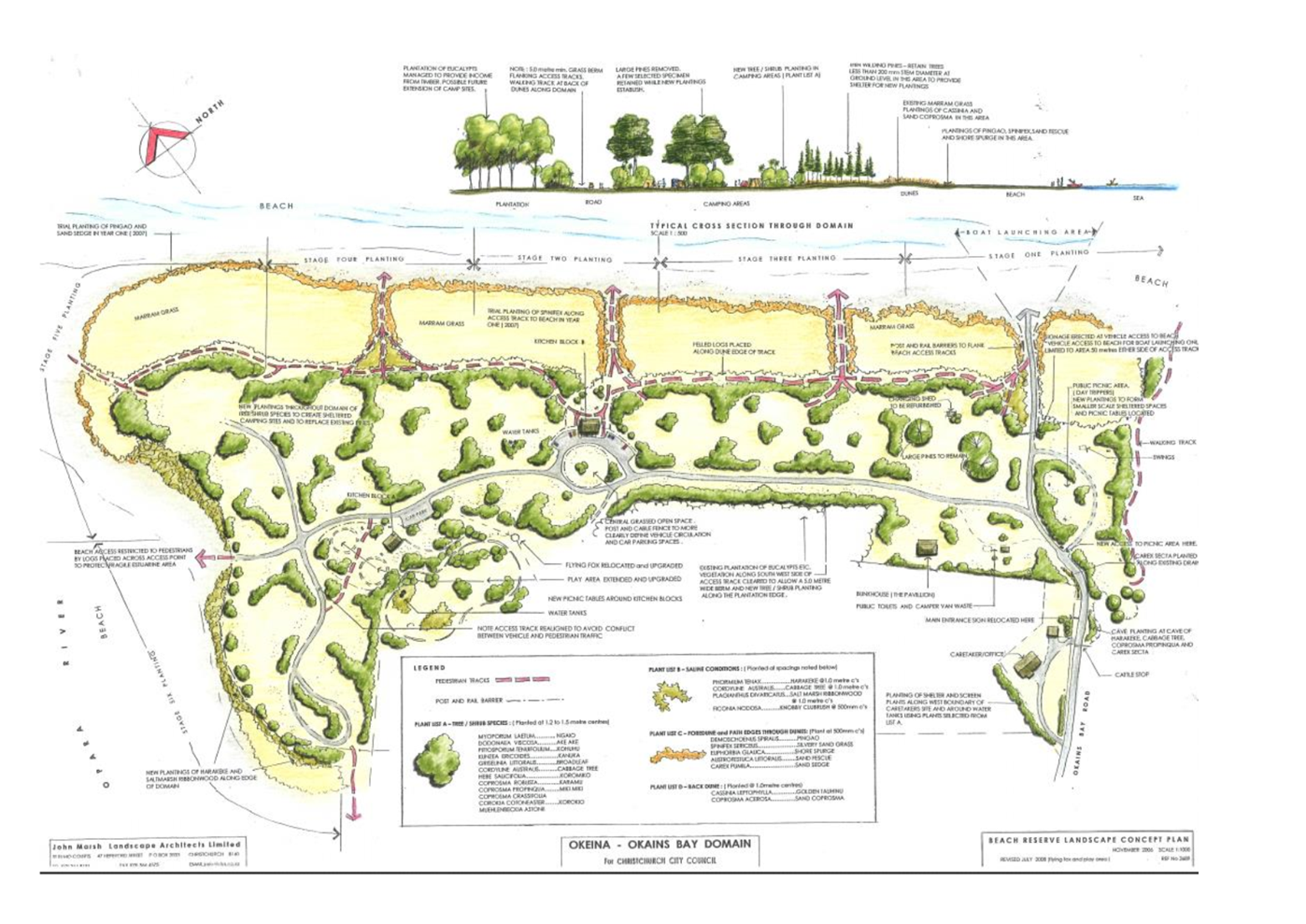
|
10. 67 and 67A
Rue Lavaud (BP Meats site) - Phase 1 Community Feedback & Confirming
Phase 2 Engagement Plan
|
|
Reference Te Tohutoro:
|
25/216920
|
|
Responsible Officer(s) Te Pou Matua:
|
Angus
Smith, Manager Property Consultancy
|
|
Accountable ELT Member Pouwhakarae:
|
Anne
Columbus, General Manager Corporate Services/Chief People Officer
|
1. Purpose and Origin of the Report Te Pūtake Pūrongo
1.1 The
purpose of this report is twofold:
1.1.1 Firstly, to present
the Board with the community feedback from Phase 1 of the community engagement
and assessment of the resulting findings.
1.1.2 Secondly, to use that
information to seek the Board’s decision on and approval to proceed with
community engagement on the recommended short-listed potential future land uses
for 67 and 67A Rue Lavaud (aka the BP Meats site). This also provides the
Community Board with an opportunity to address any areas they consider require
addressing, additional focus or further analysis before proceeding with the
next stage.
1.2 The
report follows a staff project update memo in December 2024.
2. Officer
Recommendations Ngā Tūtohu
That Te Pātaka
o Rākaihautū Banks Peninsula Community Board:
1. Receives the information in the 67 and 67A
Rue Lavaud (BP Meats site) - Phase 1 Community Feedback & Confirming Phase
2 Engagement Plan Report.
2. Notes that the decision in this report is assessed as medium significance
based on the Christchurch City Council’s Significance and Engagement
Policy.
3. Agrees that the best potential future land uses of the site would be
commercial and/or residential activity as set out in Indicative Concept Plans 1
– 3 (Attachment A) in this report.
4. Instructs staff to undertake Phase 2 of community engagement, which
will seek to further refine those into the preferred future land use/s through
continued stakeholder input and public engagement, and report back to the
Community Board with the findings and implementation recommendations for final
sign off and adoption of.
5. Delegates authority to the Manager Property Consultancy do all
things necessary and make any decisions at his sole discretion that are
consistent with the intent of this report to implement the resolutions above.
3. Executive Summary Te Whakarāpopoto Matua
3.1 Staff
have initiated a process signed off by the Community Board on 11 March 2024 to
ensure a balanced approach to the future use of the BP Meats site – one
which integrates community perspectives with a strategic, long-term vision that
considers economic, social, and environmental sustainability.
3.2 Phase
1 of community engagement commenced with targeted early engagement with key
stakeholders to share the project process, gather local intel and obtain early
feedback on potential future land use options for the site. That was followed
by broader consultation with the community, the results of which are the
subject of this report.
3.3 Staff
have formally reviewed and assessed the feedback received, identified key
themes identified and drawn conclusions, ensuring that all stakeholder
perspectives have been adequately considered and that the findings align with
the broader strategic objectives for Akaroa. The assessment also identified
gaps or areas that were further explored before progressing to the next stage.
3.4 While
current stakeholders have voiced strong preferences — from preserving
existing businesses and heritage structures to creating more community and arts
spaces — there is also a need for an informed, future-focused lens to
assess how the site can best serve Akaroa over the coming decades. This means
weighing immediate concerns like retail competition and site maintenance
against broader priorities like housing affordability, climate resilience and
sustainable development. Thoughtful planning must ensure that future use aligns
with community values while addressing evolving demographic trends, economic
shifts and environmental challenges. By combining local insights with expert
analysis and long-term urban planning principles, the site can be transformed
into a space that meets present-day needs and fosters a resilient and thriving
Akaroa for future generations.
3.5 The
consultation process ran from 31 October to 24 November 2024, engaging 151 key
stakeholders, community groups and the public through multiple channels,
including digital platforms, local media and in-person outreach. The Kōrero mai | Let’s Talk
webpage received 902 views, and staff attended the Akaroa Farmers Market to
facilitate discussions.
3.6 Staff
received feedback from nearly 100 people. This rich information helped the
staff inform the recommendations in this report on the shortlisted future uses
of the land.
3.7 After
collecting the community’s views, staff reviewed and assessed it against
the Site Development Principles, updated from those in the Akaroa Places and
Spaces Plan 2011 referencing the Council's current Community Outcomes and
Strategic priorities. The ten Site Development Principles are discussed later
in this report.
3.8 With
the information available, staff shortlisted two worthwhile land use
activities: commercial and residential. From this staff have developed
indicative concept plans (see Attachment A) to help the audience
visualise their possible site layouts, configurations and proportions on the
site.
3.9 This report
seeks the Board’s decision and approval to proceed with consultation on these
short-listed future land uses for 67 and 67A Rue Lavaud (BP Meats site). These draft
uses, refined based on Phase 1 engagement findings and staff analysis,
represent potential future land uses that align with community priorities while
considering long-term sustainability, economic viability, and cultural
significance.
3.9.1 If the Board is satisfied with the
staff's conclusions, staff recommend endorsing Phase 2 consultation to
further refine the shortlisted into preferred future land use/s through
continued stakeholder input and public engagement.
3.9.2 If the Board is not fully satisfied,
staff requests clear direction on any additional focus areas, concerns to be
addressed, or further analysis required before proceeding with the next phase.
3.10 Phase 2 of
community engagement will aim to refine these short-listed options, ensuring
the community is on the same page regarding the site layout, configuration and proportion
of land allocated to different uses. This will obtain the community’s
views on, for example, what they like about each indicative concept plan, what
they do not like about each and how they would prefer we accommodate commercial
and/or residential activity on the site (including through horizontal and/or
vertical mixed-use).
3.11 The next steps
following this Phase 2 community engagement will be to report back to the
Community Board with the consultation findings and, based on those, the
implementation recommendations for final sign off and adoption of:
· The preferred future land use/s; and
· The implementation process, e.g. any sale (unencumbered or not),
Expressions of Interest (EOI), Requests for Proposal (RFP), partnerships,
unilateral dealing, etc.
3.12 The results of
the implementation process will determine the financial feasibility and, among
other factors, determine the successful delivery of the preferred future land
use/s.
4. Background/Context Te Horopaki
4.1 67
and 67A Rue Lavaud (“the site”) is currently leased to several
tenants (as illustrated below), the rental income from whom sufficiently covers
the site’s operational costs.

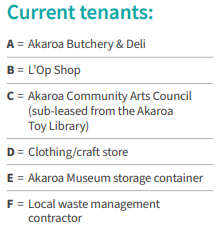
4.2 The
site was purchased by the Banks Peninsula District Council from Banks Peninsula
Meats Ltd in 2000, with the intention of eventually developing it in a way
which supports economic growth and community development in Akaroa. Ownership
of the site was transferred to the Christchurch City Council following their
amalgamation in 2006.
4.3 Although
some work occurred in the past to identify potential future land use/s for the
site, these were never thoroughly consulted on nor refined due to disruption by
the Canterbury earthquakes. Council responses to queries and three proposals
for the site (for housing by Purple Peaks Developments Ltd from 2004 - 2012, a
market square and display of a replica boat from Shackleton’s expedition
by the Christchurch Foundation in 2021 and affordable housing from Ōnuku
Runanga in 2023) have been reactive and ad-hoc in the absence of proactive
planning for the site. None of those proposals progressed for various reasons.
The poor amenity of the site and growing community concern regarding its
underutilisation also resulted in direction from the Te Pātaka o
Rākaihautū Community Board (“the Board”) in April 2019 to
develop viable commercial regeneration options for the site for it to consider
and develop a future process from (resolution BKCB/2019/00036).
4.4 The following related information session/workshops have taken place
for the members of the meeting:
|
Date
|
Subject
|
|
12/6/23
|
Community Board briefing on the various
unsolicited proposals for the site.
|
|
26/2/24
|
Community Board briefing ahead of
presenting the project process for determining the future land use/s for
approval on 11 March 2024.
|
|
24/6/24
|
Community Board information
session/workshop to update the Board on project progress and seek feedback on
the engagement approach.
|
4.5 The following related memo/information was circulated to the meeting
members:
|
Date
|
Subject
|
|
19/12/24
|
Memo to the Community Board regarding the
date of the staff presentation on feedback from the first phase of community
engagement and the shortlisted future land use/s to be consulted on in the
second phase.
|
|
3/3/25
|
Memo to the Community Board regarding the
history, lease arrangement and impact on future land use decisions for the
site of the building known as the ‘Kiosk’.
|
4.6 The
Board endorsed the project process and community engagement approach at
meetings on 11 March and 24 June 2024. When endorsing the project process, the
Board agreed that a wider spatial plan, which would require increased
complexity, resources, community capacity and time, was not needed. The project
process includes at least two phases of community engagement, to:
1. share details of the project, its process and obtain initial
community feedback to help identify the range of, and support for, potential
future land uses (now completed and the subject of this report); and
2. obtain submissions on those potential future land uses shortlisted,
as mentioned above, following their assessment based on the knowledge and views
of the community and evidence-based data and technical information.
4.7 Staff
will undertake the phase 2 community engagement upon adoption of the
resolutions in this report, the findings of which will be reported to the Board
in due course seeking sign-off and adoption of:
· The preferred future land use/s; and
· The implementation process.
4.8 On
7 October 2024, the Board also endorsed canvassing community support for the
relocation of Jeannie’s/Yew Cottage from its current site at 40 Rue Jolie
to the BP Meats site during phase 1 of community engagement on the site.
Options Considered Ngā
Kōwhiringa Whaiwhakaaro
4.9 When
assessed in 2011 against the original Site Development Principles during
development of the Akaroa Places and Spaces Plan 2011, commercial and
residential activity were considered the most compatible potential future land
uses, along with some form of publicly accessible space.
4.10 When assessed
against the updated Site Development Principles, in conjunction with current
expert advice (including an updated land use options economic assessment
undertaken by Property Economics), technical information and anecdotal
corroboration in respect to financial/economic feasibility, need and site
constraints, the following potential future land uses were determined as being
most compatible potential future land uses:
4.10.1 Commercial activity (retail,
offices and commercial services), as:
· Akaroa’s market catchment does not just serve Akaroa but
encompasses areas like Robinsons Bay and Duvauchelle within a 20-minute driving
radius. Its multifaceted commercial centre is sustained predominantly by
tourism but also caters to the local community’s fundamental requirements.
Its low vacancy rate indicates a healthy and vibrant centre with strong levels
of demand.
· The breadth of retail is relatively narrow, dominated by small,
independent businesses, with a higher proportion of food, beverage and boutique
retailers targeting visitors. Accommodation and food services is the largest
employment sector, constituting approximately 26% of the local employment base.
The reliance on tourism makes Akaroa vulnerable to macroeconomic influences and
market fluctuations.
· As NZ’s tourism sector continues to rebound post-pandemic,
it’s anticipated the role and function of Akaroa’s commercial
centre will need to improve to meet the growing demands of both visitors and
the local community, being its lifeblood during the summer and off-peak winter
months respectively.
· Statistics NZ 2023 population estimates indicate that Akaroa’s
resident population grew 24% between 2005 and 2023 and will grow 12% by 2038,
the more permanent needs of which should be satisfied locally to improve market
efficiency. Cruise ships surges of around 4,000 people also create additional
demand for convenience retail and commercial services (and provide holiday
season employment).
· Akaroa has approximately 8,150sqm GFA of retail and commercial
services floorspace. Based on current and forecast local and visitor
expenditure, the estimated net additional retail and commercial services GFA is
around 3,700sqm by 2038, although some of this increased demand is likely to be
accommodated by increased productivities of the existing retail GFA. Property
Economics nevertheless considers that accommodating additional
retail/commercial services activity on the site’s frontage is appropriate
and sustainable within the Akaroa market, both currently and over the long
term.
· Allocating the frontage of the site for ground floor retail
activities and offices and commercial services above would align with the
site’s setting, leverage its high visibility, maximise economic returns
and contribute to the vitality of Akaroa’s main street, consistent with
Akaroa’s urban design guidelines. The site presents an opportunity for
relocation and expansion of the existing Four Square store without compromising
its existing on-site parking, to accommodate the retail needs of Akaroa’s
growing resident and tourist numbers, and redevelopment of its existing site
(although this is not the intention of the current owner).
· Commercial activity could include provision
for the existing butchery, either in the existing main, or a new, building.
· The commercial zoning of the site also anticipates activities which
could deliver some of those identified in community feedback (e.g. recreation
activity, gymnasium, public artwork, civil defence) and/or contribute to rainy
day activities and winter attractions for Akaroa’s residents and visitors
(e.g. entertainment activity).
4.10.2 Residential (more
specifically long-term affordable housing or short-term seasonal worker
accommodation), as statistical
and anecdotal evidence
indicates that families, the elderly, people in need of social housing and
seasonal workers are most impacted by a demonstrated housing shortage:
· AirBnB/holiday homes increased over the previous 10 years to
approximately 25% of the housing stock in 2023. Holiday homes do not provide
for economic or community development, nor improve housing availability and
affordability.
· At 39% in 2018, Akaroa’s dwelling occupancy rate was
significantly lower than Christchurch’s 91%, suggesting a higher
incidence of seasonal accommodation or second-home ownership. Including
unoccupied dwellings, Akaroa requires approximately 210 new dwellings by 2038
based on medium population growth projections. Based on demographic changes in
the foreseeable future, the proportion of standalone dwellings is expected to
decrease gradually to 82% while higher density terraced housing grows correspondingly
to 16% (other typologies account for the remaining 2%).
· Between June 2021 to December 2023, Akaroa experienced the most rapid
growth in house prices among all 85 suburbs in Christchurch City, with an
annual increase of +4.58%. New supply appears impacted by limited land
opportunities.
· The priority is for affordable, long-term housing, the lack of which
negatively affects the wider community (e.g. schools and businesses).
· There is limited suitable accommodation in Akaroa for the 44% of its
population aged 60 years+ (i.e. centrally located, single storey and with easy
access to amenities). Pompallier Retirement Village advises that there has been
no sale nor rental available in recent years.
· Local community housing providers (CHPs) advise that eight existing
social housing units are consistently occupied with low turnover. Due to the
lack of available data for this area, the demand assessment for social housing
is difficult. However, more social housing would likely be needed (because the
accommodation supplement in Akaroa is less than in Christchurch and
doesn’t align well with income). It could be managed by the Ōtautahi
Community Housing Trust, an established community housing provider currently
managing the existing social housing in Akaroa. Social housing should be part
of mixed-tenure housing if it were to be considered for the site.
· Statistical evidence does not appear to exist, but anecdotal
evidence from Akaroa Heartlands
and Akaroa District Promotions
supports the lack of seasonal worker accommodation being a perennial seasonal
issue, albeit part of the larger issue of lack of affordable housing per se.
Supporting seasonal worker accommodation would be beneficial given their
important contribution to Akaroa’s economic success. However, Property
Economics notes that, for various reasons, there is not a direct relationship
between seasonal workers and seasonal worker accommodation demand. In 2018, 89%
of Akaroa’s workforce resided there, with the balance 11% commuting from
wider Banks Peninsula. Those seasonal workers not accommodated by their
employer (e.g. The Grand and Madeira Hotels) may be among those forced to
commute from neighbouring settlements like Duvauchelle or freedom camp (which
has strict rules). The absence of significant employee influx from further
afield Greater Christchurch locations and the periodic nature of seasonal
worker accommodation requirements makes its provision on the site questionable
from a land use and development efficiency and feasibility perspectives (it
being a lower return land use). However, anecdotal evidence indicates some
seasonal worker accommodation would be most welcome on the site. If pursued, it
should be sufficiently flexible to accommodate seasonal workers when required
and tourists during other periods.
· 68% of the respondents to an engagement survey during development of
the Te Pātaka o Rākaihatū Banks Peninsula Destination Management
Plan supported more affordable housing and accommodation for workers, as does
Te Pātaka o Rākaihautū Banks Peninsula Community Board Plan 2023
– 25.
· In a 2024 ’snapshot of life’ survey by Community
Governance staff of at least 50 self-selected Akaroa residents, business
owners, workers and year 7 – 13 students, concern about the lack of
stable, permanent housing and seasonal worker accommodation, affordable
accommodation and empty or substandard housing were raised in their responses.
The health centre and social service provider, in particular, identified the
lack of stable, affordable housing for families, and the flow on effects, as an
issue. Three respondents identified the site as a potential location for
housing.
Both long-term affordable housing and short-term seasonal worker
accommodation would require covenants on the site to ensure their delivery, as
neither are directly delivered by the Council.
4.11 The
accommodation of commercial and/or community activity within the existing
building is included on some of the indicative concept plans, as Property
Consultancy staff estimate the cost of upgrading it ($326,300 - $780,000) is
less than the construction of an equivalent new building ($520,000 - $910,000)
and it could continue to accommodate activity while staged construction occurs
elsewhere on the site. Its continued use therefore has financial implications.
Note these estimated costs do not include those necessary to restore
heritage-listing of the building in the Christchurch District Plan or by
Heritage New Zealand. Heritage Team staff advise that the building has not been
heritage-listed since its removal from the Christchurch District Plan in 2017.
This is because it lacks enough verifiable significance of heritage values,
with changes to the building over time obscuring its ability to demonstrate
‘technological and craftsmanship’ value without intrusive
investigation into its fabric by a conservation architect. The building could
meet the requirements for scheduling if its heritage fabric were reinstated by,
for example, removal of its stucco and additions. This would, in the first
instance, require a review of its heritage significance by a heritage
researcher and a heritage architect to assess and report on the
building’s condition, scope of works and necessary works to remediate it.
The building nevertheless has ‘historical and social’,
‘cultural’ and ‘contextual’ value to the community
through its ownership by the Narbey family and its continued use as a
butcher’s shop for most of the 20th century. It doesn’t
need to be District Plan protected for the Council, as its owner, to protect
these values.
4.12 Flooding
risk and location of a possible stormwater device on the site account for the
building setback from the rear site boundary adjacent to Wai-iti Balguerie
Stream, which runs near the eastern boundary of the site. Land drainage staff
note the stream is prone to trouble in several places and can flood properties
in Rue Balguerie. Water running down Rue Balguerie has also flooded the museum
site. Historical records show known flooding (largely due to rainstorm events)
and breaking of the stream’s banks in February 1936, May 1945, July 1963,
August 1973, August 1965, July 1977, August 1981 and January 2002. Photos exist
of flooding on the site during the August 1981 event. Development may provide
an opportunity to restore a flood plain area, which could be planted up with
natives and trees, as well as streamside enhancement. Future development will
need to take account of a 7m waterbody setback from the bank of the stream, to
be kept free of built form and hard surfacing. Flooding mitigation for any
future buildings should be through elevation of these above ground level based
on an engineering assessment of flooding. Any additional runoff from an
increase of impervious surfacing should be mitigated with rainwater tanks or
similar, to help alleviate this concern and to treat runoff from the site. The
eastern boundary of the site has been identified as the potential location for
an in-ground biofiltration device for stormwater similar to a rain garden,
requiring approximately 40sqm, to be funded through the Banks Peninsula
Stormwater Management Plan. The device would treat the water from gutters on
both sides of Rue Balguerie, reducing pollutants such as heavy metals and
sediment from the road entering Wai-iti Balguerie Stream. It could potentially
be designed to also treat the site’s stormwater. If located in the
northern corner of the eastern boundary of the site, it would place it within
the 7m waterway setback. This area has been incorporated into the indicative concept
plans and would be a continued community use of the site. No other Council need
for the site has been identified.
4.13 The following
potential future land uses were considered but ruled out:
4.13.1 Community facilities, as
Community Governance staff consider Akaroa currently has sufficient provision
of community facilities and meeting hubs/spaces throughout the township to meet
the needs of both local residents and visitors. These include by the Gaiety
Hall (hall and supper room), Akaroa Sports Pavilion, Akaroa Bowling Club,
Akaroa Croquet Club, Trinity Church, Coronation Library, Ōnuku Marae (its
wharekai Amiria Puhirere) and Akaroa Service Centre (boardroom and first floor
office space). While these are largely single use spaces where storage can be a
challenge, the main issues are accessibility in respect to bookings and hireage
fees. The provision of a multi-use community facility on the site would not
resolve these issues. The three community tennis courts at the Akaroa
Recreation Ground are considered sufficient. There is no public gym and indoor
playground (other than the play centre for children aged 0 – 6 years),
both of which would meet a need for rainy day activities. However, these could
be accommodated in any commercial development of the site. A communal pizza
oven would be more appropriately located elsewhere. Property Economics also
considers upgrades to, or expansions of, these existing facilities is likely
better and more economically efficient than consuming prime main street
commercial land for a new community facility that would duplicate existing
community resources.
4.13.2 Expansion of Akaroa Museum
onto the site, as it has adequate safe collection storage to meet its present
and future needs, the land surrounding the intervening former courthouse needs
to continue to reflect its original setting (i.e. be devoid of additional
buildings, with visual and physical separation from the site) and the museum
already provides for connection with Takapūneke in collaboration with
Ōnuku Rūnanga and Ngāi Tahu through its temporary and permanent
exhibitions. There is no present or anticipated future need for it using any
part of the site, except for a single container to store display cases (which
could be relocated).
Property Economics notes using the site for museum expansion might result in an
economic opportunity cost given the requirement for additional retail and
commercial services GFA in the future.
4.13.3 Use of the site as a civil
defence centre, as it’s within the Tsunami Evacuation Zone and a
civil defence response requires the flexibility to operate from anywhere
depending on the circumstances.
Civil Defence Emergency Management staff advise this could be in any of the
existing community meeting hubs/spaces.
4.13.4 Recreation facility, as
none are required according to the Council’s Public Open Space Strategy
2010 – 2040 and Our Sports Field Network Plan for Ōtautahi
Christchurch 2024.
4.13.5 Open space. In terms of
requests for nature play and a community garden/forest, the Council’s
Public Open Space Strategy 2010 - 2040 notes that Akaroa has an abundance of
high-quality open space areas. Property Economics concludes there is no need to
use the site for open space, other than, potentially, a currently absent
hard-surfaced civic square (for uses other than relocating or duplicating the
existing Akaroa Farmers’ Market, as it benefits from the high visibility
and flexibility of its existing location the St Patrick’s Church grounds
at 29 Rue Lavaud).
Some from of publicly accessible space could nevertheless be incorporated into,
and complement and support other development on, the site.
4.13.6 Visitor accommodation. As
the site is located in close proximity to the coastline, water-based
recreational activities, other popular attractions and restaurants, etc, it
would enhance the local visitor accommodation options, employment
opportunities, the economy (including evening) and development feasibility of
the site through vertical development. Given the upward trend in the occupancy
rate of Christchurch’s commercial visitor accommodation between February
2023 (77.5%) and February 2024 (84.2%), potential exists for the development of
new visitor accommodation on the site to meet growing demand for guest nights.
However, it scored relatively low overall against the Site Development Principles
compared to the other potential future land uses identified, including due to
very low community support (only 2 of 98 people in favour of it).
4.13.7 Use of the site for parking
(other than that accessory to the preferred land use/s, located unobtrusively
to the rear of the site), as Traffic Operations staff advise that parking
demand is unchanged from the 2011 conclusions in the Akaroa Places and Spaces
Plan, being that parking demand is only high during the peak tourist season
(December to March), with shorter periods of very high (super-peak) demand
occurring on only a few days during this period. There isn’t sufficient
parking demand to warrant the investment needed to clear, level and seal the
balance of the site (assuming retention of the existing main building) and
access when it would only yield a relatively small number of parks (62,
including 4 disabled). Unsealed parking capacity would be much lower as individual
spaces are more problematic to define. Either way, the existing access from Rue
Balguerie would need signposting. Property Economics agrees that use of the
site predominantly for parking would negatively impact the main street
pedestrian environment, creating pedestrian/vehicle conflict and undermining
its frontage and amenity. It also considers that parking would not be an
efficient use of the site and would not assist in enhancing the commercial
activity of the centre. However, the provision of on-site parking accessory to
the preferred land use/s, using the existing site access off Rue Balguerie,
will assist alleviate peak tourist season parking demand and traffic
congestion.
4.13.8 Relocation of
Jeannie’s/Yew Cottage onto the site, for the following reasons:
· Community feedback indicated that there is more opposition to, than
support for, its relocation, including for reasons of character loss and cost.
This is consistent with the lack of support for its funding indicated through
submissions on the draft LTP 2024-2034.
· The latter is estimated by Parks asset staff at $50,000 to relocate
and $450,000 - $650,000 to restore the cottage, of which only $113, 335 is
currently budgeted for in the LTP (leaving a shortfall of $386,665 - $586,665).
· Relocation scored relatively low overall
against the Site Development Principles compared to the other potential future
land use/s identified.
· Relocation would constrain the site layout and built form and result
in an economic opportunity cost given the requirement for additional retail and
commercial services GFA in the future.
· Although the cottage (being part of the town’s architectural
heritage) would contribute to the main street’s character if relocated on
to the site, new development on the site is able to reinforce Akaroa’s
heritage and character through, for example, the application of covenants to
the site and adherence to the design guidelines applicable within
Akaroa’s Commercial Banks Peninsula Zone.
· Relocation also creates a precedent in respect to other Council
heritage assets in Akaroa at risk of rising sea levels and the broader impacts
of climate change, e.g. the former Customs House.
4.13.9 Activities that are more of a
design feature (such as landscaping ideas, outdoor art, embedding of
Māori narratives and connecting neighbouring sites), which are more
appropriately considered and provided for once preferred future land use is
determined.
Options Descriptions Ngā
Kōwhiringa
4.14 The
attached concept plans are high-level, not detailed, as they are not intended
to be presented as proposed development options. They are intended to be
indicative only, visually illustrating possible site-layouts, configurations
and proportions of the short-listed (i.e. the most community-supported and
worthwhile) potential future land use/s to give the Board and community a more
refined idea of how they could be accommodated on the site. There will be other
proportions and ways they could be arranged and located - e.g. mixed-use that
is both horizontal (i.e. across the site) and/or vertical (e.g. commercial
activity on the ground floor and residential activity above – and
questions asked during the Phase 2 community engagement can tease these out. The
indicative concept plans reflect advice from Property Economics that
development of the site should have people as its focus and how they are
attracted to/utilise/move through the site, rather than a purely built form
focus, as well as adopt a longer-term focus (including developing flexible,
multi-use spaces). Rather than being named ‘Options’ 1 - 3, staff
propose the concept plans be identified as ‘Indicative’ and named
based on their land use/s, as phase 2 of community engagement is likely to draw
submissions that favour specific aspects from multiple concept plans. The final
plan of preferred future land use/s might therefore look different to all three
indicative concept plans. Depending on its nature, its construction could be
staged.
4.15 Indicative
concept plan 1: Mixed-use (commercial and residential activity).
4.15.1 Activity Description: Mixed-use,
with commercial activity at the front of the site and residential activity
(either long-term affordable or short-term seasonal worker), including communal
open space central to, and residential access and parking, at the rear of the
site. Provision for associated landscaping and a possible in-ground
biofiltration device for stormwater similar to a rain garden adjacent to the
eastern site boundary.
4.15.2 Activity Advantages:
· At 2554m2, the site (excluding the 414m2 access)
is large enough to accommodate a mixture of activities.
· The multifaceted nature of the community’s (and
visitor’s) needs, as well as economic considerations, warrant a mix of
compatible (rather than singular) activities on the site.
· Mixed-use is preferred from an economic and urban design perspective
and is better able to achieve the desired outcomes as expressed by the Site
Development Principles.
· Would activate the main street frontage with commercial use and,
potentially, provide for additional on-street car parking.
· Mixed-use is achievable utilising the existing access from a
transport perspective.
· The residential activity will complement and support the commercial
activity, providing for 24-hour use of the site.
· Potential for a shared central open space area.
· Residential activity could provide for a variety of options that are
not widely available in Akaroa, including long-term affordable and short-term
seasonal worker housing. The former would also assist aging residents to stay
in Akaroa instead of relocating to Christchurch and the latter would support
economic growth.
· Being less attractive to commercial activity and less accessible to
the public, the rear of the site would best accommodate activities that foster
community wellbeing, at a higher density to maximise efficient use of the
scarce commercial land in Akaroa and development feasibility across the site.
· An opportunity to diversify the local housing stock by providing
medium-density housing and a mix of ownership types.
· An opportunity to work to deliver long term affordable housing in
collaboration with Ōnuku Rūnanga and/or CHPs.
· The site is within easy access of community amenities.
· Residential activity may have acceptable impacts on the site’s
access if managed appropriately.
· Residential activity would provide good transition to the existing
residential activity in the surrounding area.
4.15.3 Activity Disadvantages:
· May not provide for on-site parking accessory to the commercial
activity.
· Residential activity reduces the availability of commercially zoned
land in the town centre and may adversely affect adjoining commercial
activities.
· Potential low return from social housing and short-term seasonal
worker accommodation.
· Securing the funding and resources to deliver social housing.
· Loss of public ownership of at least the front part of the site.
· Any associated sale (wholly or partially) of the site would result
in the Council no longer having control over how any commercial or residential
activity is developed privately, unless appropriately covenanted (e.g. to avoid
development that does not meet local housing needs in respect to typology,
affordability and community).
4.16 Indicative
concept plan 2: Commercial activity (large scale).
4.16.1 Activity
Description: Commercial activity or activities located in a large-scale
building, with on-site parking to the north and servicing to the rear accessed
by a one-way through route from Rue Lavaud to Rue Balguerie. Provision for associated landscaping and
a possible in-ground biofiltration device for stormwater similar to a rain
garden adjacent to the eastern site boundary.
4.16.2 Activity Advantages:
· Would help meet future commercial demand and grow the local economy,
employment base and existing offerings by delivering a range of large-scale
and/or small-scale retail, offices and commercial services anticipated by, and
making efficient use of, the site’s Commercial Banks Peninsula zoning
(excluding its access from Rue Balguerie, which is zoned Residential Banks
Peninsula).
· Site size and location is good for large retail.
· Large-scale retail could provide for essential, or hard to locate
elsewhere, activities (e.g. a larger supermarket).
· If well-designed (i.e. providing for smaller commercial activities
at the street frontage), it could activate the street, fit with the
architectural character of Akaroa and, potentially, provide for additional
on-street car parking.
· Could provide for the existing butchery - a business located on the
site since around 1842, which provides an essential service for, attraction to
and is well supported by, the local community.
· Any associated sale (wholly or partially) of the site would provide
revenue which could be used to fund other projects in Akaroa.
4.16.3 Activity Disadvantages:
· Commercial viability given the low resident population and seasonal
variation in visitor demand.
· A larger footprint building and car park may not fit with
Akaroa’s character and would be harder to integrate into the residential
and heritage surrounds.
· If small-scale activities are not integrated at the front of the
site, only a modest level of street engagement would
occur.
· Access and parking issues relating to higher volumes of traffic.
· Large signage may be required.
· Would not provide for new housing.
· Loss of public ownership of the site.
· Any associated sale (wholly or partially) of the site would result
in the Council no longer having control over how the site is developed, unless
appropriately covenanted.
4.17 Indicative
concept plan 3: Commercial activity (small-scale/finer grained).
4.17.1 Activity
Description: Commercial activity or activities located in a
small-scale/finer grained building or buildings, with on-site parking to the
north and servicing to the rear accessed from Rue Lavaud and Rue Balguerie
respectively. Provision for associated landscaping and a possible in-ground
biofiltration device for stormwater similar to a rain garden adjacent to the
eastern site boundary.
4.17.2 Activity Advantages:
· Would help meet future commercial demand and grow the local economy,
employment base and existing offerings by delivering a range of small-scale
retail, offices and commercial services anticipated by, and making efficient
use of, the site’s Commercial Banks Peninsula zoning (excluding its access
from Rue Balguerie, which is zoned Residential Banks Peninsula).
· Small-scale retail could provide for essential activities.
· If well-designed, it could activate the street, fit with the
architectural character of Akaroa and, potentially, provide for additional
on-street car parking.
· Incorporation of existing main building would result in minimal
disruption to the existing tenants, including the Akaroa Butchery & Deli.
· Could provide for the existing butchery - a business located on the
site since around 1842, which provides an essential service for, attraction to
and is well supported by, the local community.
· Smaller-scale commercial activity may have acceptable impacts on the
site’s access if managed appropriately.
· A small-scale/finer grained building or buildings would be easier to
integrate into the residential and heritage surrounds.
· Any associated sale (wholly or partially) of the site would provide
revenue which could be used to fund other projects in Akaroa.
4.17.3 Activity Disadvantages:
· Commercial viability given the low resident population and seasonal
variation in visitor demand.
· If small-scale activities are not integrated at the front of the
site, only a modest level of street engagement would occur.
· Commercial activities to the rear would reduce commercial activity
on the main street.
· May not fit with the Akaroa character.
· Access and parking issues relating to higher volumes of traffic.
· Large signage may be required.
· Would not provide for new housing.
· Loss of public ownership of the site.
· Any associated sale (wholly or partially) of the site would result
in the Council no longer having control over how the site is developed, unless
appropriately covenanted.
Analysis Criteria Ngā Paearu
Wetekina
4.18 Staff analysis
of the potential future land uses was informed by:
4.18.1 Advice about, and validation of,
the approach to assessing, scoring and ranking explained below from Monitoring
and Research staff.
4.18.2 Assessing and scoring the extent
to which each potential future land use aligned with each of the Site
Development Principles below was determined as follows: 1 = yes, to a limited
degree; 2 = yes; 3 = yes, definitely; and 0 = highly unsuitable, invasive or
not wanted by the community (generally less than 10 feedback respondents in
support).
4.18.3 The original 6 Site Development
Principles on page 26 of Section D (specific to the BP Meats site) of the
Akaroa Places and Spaces Plan 2011 were reviewed, updated and added to last
year with reference to the Council's current Community Outcomes and Strategic Priorities,
to help inform Phase 1 of community engagement. The updated Site Development
Principles were likewise weighted as noted below based on the extent to which
they align with current Community Outcomes and Strategic Priorities.
· Reflects community feedback for its future use (20%/0.2);
· Minimises greenhouse gas emissions and protects our indigenous
biodiversity, water bodies and tree canopy (15%/0.15);
· Enables the community to be prepared for, respond and recover from,
the many hazards which are increasing in frequency and intensity (15%/0.15);
· Provides for activities that are difficult to locate elsewhere in
the township (15%/01.5);
· Balances today’s needs with the future needs of the community (10%/0.1);
· Recognises the financial trade-offs that need to be considered by
the Council in delivering quality core services to the whole community (10%/0.1);
· Provides for, but balances, economic (particularly tourism-related)
growth and development and community development, identity and connection (5%/0.05);
· Provides for sustainable growth in respect to impacts on critical
infrastructure (5%/0.05);
· Reflects the surrounding character of the northern commercial area (2.5%/0.025); and
· Is compatible with adjoining land use activities now and in the
future (2.5%/0.025).
The initial
scores were then multiplied by the respective weighting ratio for each site
development principle. For example, a potential future land use that definitely
aligns with a site development principle with a 20%/0.2 weighting scored 3 x
0.2 = 0.6. The total of the scores for each potential future land use in
respect to all 10 Site Development Principles provide a final score which enabled
all of the potential future land uses to be ranked (see Attachment B).
Keeping the existing butcher ranked the highest, with other retail, commercial
(excluding guest accommodation) and community activity (generally, plus some
specific, e.g. space for community groups) clearly favoured. Residential
activity (particularly long-term housing, seasonal worker accommodation and
affordable housing) followed. Guest accommodation ranked relatively low and the
relocation of Jeannie’s/Yew Cottage only scored slightly above the lowest
scoring parking.
5. Financial Implications Ngā Hīraunga Rauemi
Capex/Opex Ngā Utu Whakahaere
|
|
Recommended Option
|
Option 2
|
Option 3
|
|
Cost to Implement
|
N/A
|
N/A
|
N/A
|
|
Maintenance/Ongoing Costs
|
N/A
|
N/A
|
N/A
|
|
Funding Source
|
N/A
|
N/A
|
N/A
|
|
Funding Availability
|
N/A
|
N/A
|
N/A
|
|
Impact on Rates
|
N/A
|
N/A
|
N/A
|
5.1 The
above analysis is not applicable at this stage of the process. The Council has
no budget or provisions in its Long Term or Annual Plans to develop the site.
Consideration of implementation options for the preferred future land use/s
identified and the associated cost and funding will be in the report to the
Community Board subsequent to the Phase 2 community engagement.
5.2 Phase
2 of community engagement, subsequent analysis and reporting requires staff
time and expert inputs. This is being funded from existing operational budgets,
including consultant fees for the technical analysis from that of the Property Consultancy
Team.
6. Considerations Ngā Whai Whakaaro
Risks and Mitigations Ngā
Mōrearea me ngā Whakamātautau
6.1 There
is a risk the community perceives that there is a predetermined land use for
the site, when this is not the case. The project process, community engagement
and associated communication have been designed to reassure the community of
that.
6.2 If
the determination confirms that two activities (commercial and residential) are
preferred on the site, there are risks associated with an individual or a
particular community group not being happy with their identified land use not
being shortlisted and/or a lack of community-buy-in. This has been managed
through the Council openly engaging with all stakeholders and considering and
assessing all identified potential future land uses against the 10 Site
Development Principles and technical information in a manner validated by
Monitoring and Research staff.
6.3 Current
uses of the site and existing buildings may present a constraint to delivery of
the optimal preferred future land use/s. This risk has been mitigated in any
lease terms and conditions where possible and will also need specific
considerations and decisions associated with any implementation strategy.
6.4 There
is a risk that any preferred future land use/s for the site will not be
financially viable nor supported by the market. This risk will be assessed and
determined during the implementation process, e.g. when assessing any sale
proposals, tenders, EOIs, RFPs, etc.
6.5 Site-specific
matters (e.g. possible contamination, geotechnical, ecological, archaeological,
existing trees, waterway setback, consenting and future development matters)
will be considered during the implementation process.
7. Legal Considerations Ngā Hīraunga ā-Ture
7.1 Statutory
and/or delegated authority to undertake proposals in the report:
7.1.1 The Board gave approval for staff to
undertake public consultation and report to the Community Board regarding the
consultation findings and the next steps on 11 March 2024 (resolution BKCB/2024/00013).
7.2 Other Legal Implications:
7.2.1 Local Government
Act 2002: Under s78 of the Local Government Act 2002, the consultation
process and outcome reported herein enable the Community Board to consider the
views and preferences of the top logical activities based on community
preference.
7.2.2 This report otherwise
meets the Council’s decision-making requirements under ss 78-82A of the
Local Government Act 2002, considering the reasonably practicable options and
Māori contribution to the decision-making process.
Strategy and Policy Considerations Te Whai
Kaupapa here
7.3 The
required decisions:
7.3.1 Align with the Christchurch
City Council’s Strategic Framework.
· The shortlisted potential future land uses have the capacity to help
achieve to some extent at least one (individually) or (if mixed-use) all four
of the Community Outcomes: A collaborative confident city; A green,
liveable city; A cultural powerhouse city; and A thriving
prosperous city.
· The shortlisted potential future land
uses and the way they are being identified with the local community similarly
have the capacity to help deliver on the following Strategic Priorities: Be
an inclusive and equitable city; Build trust and confidence;
Reduce emissions; Manage ratepayer’s money wisely; and
Balance the needs of today and the future.
7.3.2 Are assessed as medium significance based on the Christchurch
City Council’s Significance and Engagement Policy 2019. The level of
significance was determined by the level of interest of the local community in
the future land use/s on the site, the site’s location within an area of
significance to Ōnuku Runanga and the
possible economic, social, environmental and cultural opportunities and
benefits development of the site presents for the Council and local community.
7.3.3 Are consistent with Council’s Plans and Policies, given the
potential future land use/s (likely of a commercial and/or community and/or
residential nature) have the potential to assist deliver outcomes sought in
several of Council’s strategic documents, including:
· Akaroa Places and Spaces Plan 2011, Section D of which is specific
to the development of the site, taking community views into account and
undertaking a comprehensive analysis of the potential future land uses. Section
D was updated in 2024 to reflect subsequent changes in the Christchurch City
Plan, Akaroa’s demographics and market, community needs and potential
future land uses, to assist obtain current community views on the site.
· Christchurch Visitor Strategy 2019, to the extent that any
development supports local tourism.
· Toi Ōtautahi: A Strategy for Arts and Creativity in
Ōtautahi Christchurch 2019 – 2024, to the extent any development
provides for community activities including creative space (for development and
presentation) and art installation on site.
· Biodiversity Strategy 2008 – 2035, to the extent that
enhancement of Wai-iti Balguerie Stream bordering the eastern boundary of the
site may be possible through site layout, access improvements and riparian
planting.
· Our Heritage, Our Taonga Heritage Strategy 2019 – 2029, to the
extent that any development provides for the recognition of, access to and
promotion of the diversity of cultural heritage and taonga within the area.
Although the main building on the site is not heritage-listed in the
Christchurch District Plan nor by Heritage New Zealand it nevertheless has
‘historical and social’, ‘cultural’ and
‘contextual’ value to the community.
· Community Facilities Network Plan 2020, which acknowledges that the
development of halls, community centres, volunteer libraries, toy libraries and
play centres owned by the Council are more likely to arise from changing
community need (which needs to be well-defined and demonstrated) rather than an
inherent facility deficit or geographic gap.
· Te Haumako Te Whitingia Strengthening Communities Together Strategy
2022, to the extent that any development, and the
way it is being identified with the local community, promotes equity by
valuing diversity, fostering inclusion, participation and preparedness, and
building connection between communities and their places and spaces to foster a
sense of local identity, shared experience and stewardship.
· The Te Pātaka o Rākaihautū Banks Peninsula Community
Board Plan 2023 – 25, which includes as one of its nine priorities Support
community-based solutions for currently unused significant Council-owned sites
and identifies the BP Meats site as such a site.
· Tree Policy 2023, to the extent that the site (and the trees
thereon) is currently, and may remain in whole or part, Council-owned.
7.4 This
report supports the Council's
Long Term Plan (2024 - 2034):
7.5 Strategic Planning and Policy
7.5.1 Activity: City Growth and Property
· Level of Service: 13.4.10.1 Deliver projects
that will lead to positive community
outcomes:· Increasing the supply of
community housing; or· Increase
employment opportunities; or·
Improves Mana Whenua relationships;
or· Allows for community
“ownership” of service delivery;
or· Reduces the impacts of natural
or human induced (including climate change) hazards - At least one new project
commenced annually
As noted above, development of the
site has the potential to deliver a number of these positive community
outcomes, particularly if the preferred future land use/s provides for
mixed-use development.
Community Impacts and Views Ngā Mariu
ā-Hāpori
7.7 Early
engagement with Ōnuku Rūnanga started in July 2024. Ōnuku
emphasised the urgent need for affordable housing in Akaroa, highlighting the
Council-owned BP Meats site as the last piece of Council-owned flat land
available. The potential future uses for the site were discussed, with a
commitment to ongoing partnership, including co-developing a cultural narrative
and ensuring meaningful community consultation, without predetermination of any
specific outcomes.
7.8 Following
this, staff met with leaseholders and neighbours of the site, and Council staff
from Akaroa Museum to explain the process and gather early feedback which is
summarised below:
· Akaroa Butchery & Deli requested
Council support businesses by not increasing retail competition, especially
considering a challenging winter season and noting that the building has not
been well maintained by the Council. Their focus is on building up this
business while improving its aesthetic and efficiency. They want to maintain
the existing building, delivery access, privacy and security, some outdoor
space and the trees in front of the main building. They support adding
accommodation to the site, especially for workers.
· L'Op Shop want to continue operating
on-site but are open to relocating if necessary. They are concerned about sea
level rise and its potential impact on other businesses needing to relocate and
would like flooding models reviewed. They value keeping social services on-site
and would like a more suitable, well-maintained space if they remain. They have
had maintenance issues, particularly with the roof, and want clarity on
responsibility.
· Akaroa Arts Council operate on the site
and want to open it to the arts with a village green, amphitheatre, and
use Jeannie’s/Yew Cottage as an art gallery. They proposed a glass box
exhibit for the first fire engine with the bell tower. They also suggested
parking/accommodation at the back of the site and that the butchery building
could be replaced with a purpose-built space, a pavilion, fruit trees and a
farmers' market. They propose this is all designed in a mock Victorian style.
They also noted a chronic shortage of local accommodation.
· Akaroa Toy Library operate on the site
and requested shared community spaces with better landscaping, including BBQs,
kids' spaces, and sandpits. They would like to offer educational activities for
kids but note that winter is quiet. The Akaroa Arts Council shares the space
for exhibitions, and the nearby knitting shop is considering relocating here.
· The Common café neighbours the
site and is focused on attracting more people to the area. They believe hot
pools are needed, especially in winter. They mentioned an art hub and
multi-purpose space being ideal. They would like to see wooden structures for
community use, including for musicians and the market, to draw people in from
the street. Ideas included water education play, a good site flow and
accessible community spaces. They are open to pedestrian access from
their site and to the stream, while maintaining access for the butchery.
· The owner of the small turquoise building envisages the site as a creative community space focused on
regenerative design. She sees potential for a community space like a night
market and mentioned the site could host cultural events, such as Matariki and
pop-up markets, with the stream being a key feature for future use. She
recognises Akaroa’s accommodation issue but is unsure if this site is
suitable for housing.
· Four Square Akaroa were at this stage
unsure about their opinion on food retail for the site.
7.9 Consultation
started on 31 October 2024 and ran until 24 November 2024.
7.10 Consultation
details including links to the project information shared on the Kōrero mai |
Let’s Talk webpage were advertised via:
7.10.1 An
email which was sent to 151 key stakeholders, including Akaroa District
Promotions, Akaroa and The Bays Forum, Akaroa Area School, Akaroa Civic Trust
and Akaroa Heartlands. Community organisations were sent a news item to share
online.
7.10.2 The
Council Facebook page, the Council LinkedIn page and 2 local community group
pages (Banks Peninsula Community and Akaroa – What is happening?), which
reached 28,944 people.
7.10.3 Two
advertisements in the Akaroa Mail, on 1 November and 15 November 2024.
7.10.4 A4
posters in local shop windows across Akaroa.
7.10.5 A
sign installed at the front of the BP meats site.
7.10.6 Digital
signs in the Akaroa Library.
7.10.7 Consultation
documents delivered to leaseholders on 2 November 2024, which were also available
to the community in local service centres, the Akaroa Butchery & Deli, and
The Common café. In addition, a feedback box was set up in the Akaroa
Library to collect submission forms.
7.10.8 Akaroa
School's parent newsletter.
7.11 The Kōrero mai | Let’s Talk
page had 902 views throughout the consultation period.
7.12 Staff attended
Akaroa Farmers’ Market on 2 November and 16 November 2024 to provide
consultation documents and answer any questions.
7.13 Discussion with
approx. 30 people covered retaining the site's character, balancing commercial
and residential development (with a focus on affordable housing), consultation
on heritage buildings (particularly Jeannie’s/Yew Cottage), challenges
with community spaces, concerns about gentrification and climate change and
ideas for hot pools, an indoor swimming pool, pop-up art spaces and community
gardens.
Summary of Feedback Ngā
Tāpaetanga
7.14 Discussion with
approx. 30 people covered retaining the site's character, balancing commercial
and residential development (with a focus on affordable housing), consultation
on heritage buildings (particularly Jeannie’s/Yew Cottage), challenges
with community spaces, concerns about gentrification and climate change and
ideas for hot pools, an indoor swimming pool, pop-up art spaces and community
gardens.
7.15 The consultation
asked for people’s preference for overarching options for land use (provided
in the updated
Akaroa Places and Spaces Plan 2011), for any other land use ideas, and for any
other comments or information about the future use of the site.
7.16 Feedback was
made by three recognised organisations, six businesses and 91 individuals (100
total respondents). Feedback from three respondents was not accepted for
various reasons and has not been included in the analysis of the feedback.
Feedback is available on the Kōrero
mai webpage.
7.17 The majority of
respondents (79) mentioned multiple use types in their feedback, suggesting the
community is in favour of mixed-use for the site.
7.18 The majority of
respondents (67) wanted Council to keep the butcher on site either:
· In the existing building (41); or
· In a new building on site (3).
The remaining 23 did not specify how to retain it.
7.19 Many respondents
mentioned community use (60), specifically:
· Space for community groups, especially to retain existing tenants
(23).
· Historic information displayed/museum space (20).
· Public space, a town square or market space (19).
· Specific community facilities, (17), including tennis courts, a gym,
an adventure playground, hot pools, a communal pizza oven, a community meeting
space/hub, and a mixed-use space.
· Creative art space (11).
· Mitigating climate change, a civil defence hub, environmental
community group space (11).
· Māori history and art (7).
· An information centre (5).
7.20 Many respondents
mentioned residential use (39), specifically:
· Seasonal worker accommodation (22).
· Affordable housing (19).
· Short term/prefab housing (11).
· Long-term housing (8).
· Social housing (6).
· Six respondents mentioned they were not happy with any residential
use on the site (6).
7.21 Many respondents
mentioned retail and commercial services (39):
· Some respondents mentioned specific retail/commercial ideas (11),
including Boutiques, specialised retail, creative and flexible spaces, pop-up
shops, service-based retail, artisan craft and handmade, night market space,
craft fairs, integration with historical and cultural themes and adaptable for
different uses.
· Three respondents mentioned they were not happy with additional
retail on the site (3).
7.22 Some respondents
mentioned needing some car parking on the site (29), specifically:
· Visitor/contractor car parking (6).
· Parking at the rear of the property (4).
· Public parking (3).
· Others were not specific as to what type of car parking.
· No respondent mentioned car parking being utilised for the entire
site.
7.23 Some respondents
(19) mentioned food retailing/a grocer in addition to the butcher on the
site. Nine (9) respondents mentioned not wanting any other additional food
retail/grocer on the site.
7.24 Several
respondents mentioned landscaping ideas (15) which included:
· A community garden/food forest (7).
· Incorporating and retaining trees (7).
· Native planting (5).
· An area for performance/music (4).
· Footpath access through the site (3).
· Seating (3).
7.25 Three
respondents mentioned that the Wai-iti Balguerie Stream
is prone to flooding.
7.26 In addition, the
community were asked whether they supported the relocation of the historical
Jeannie’s/Yew Cottage to the site.
· 40 were in support
· 47 were not in support.
· 10 did not provide an answer.
· Those in support who provided reasons (15) mentioned it needing to
be refurbished, tourism opportunities, community use, heritage preservation and
private ownership with conditions. Those not in support who provided reasons
(9) mentioned it would be too expensive to move or would lose its character if
moved.
Impact on Mana Whenua Ngā Whai Take
Mana Whenua
o The site is of cultural significance to Ngāi
Tahu. It falls within a Mahaanui Iwi Management Plan Silent File area as being
a Wāhi Tapu/Wāhi Taonga location mapped by tribal experts to indicate
a higher probability of an encounter with sensitive tangible or intangible
Ngāi Tahu values. The erection of any new buildings on the site is a
Discretionary Activity requiring consultation with Ōnuku Runanga and
notification of them via the Resource Consent process under Rule 9.5.4.1.3 of
the Christchurch District Plan. Staff have been having ongoing engagement with
Ōnuku Rūnanga.
o The decisions at this stage of the process do not involve
a significant decision in relation to ancestral land, a body of water or other
elements of intrinsic value, therefore the decisions do not
specifically impact Mana Whenua, their culture, and traditions.
o However, the decisions however do
involve a matter of interest to Mana Whenua and continued engagement
will be undertaken with the Ōnuku Rūnanga to ensure our
agreed partnership priorities with Ngā Papatipu
Rūnanga are understood and considered.
Climate Change Impact Considerations Ngā
Whai Whakaaro mā te Āhuarangi
7.15 The decisions
in this report are unlikely to contribute negatively to adaptation to the
impacts of climate change or to emissions reductions as they are of a
procedural nature only. The climate change impact implications
of the preferred future land use/s identified through Phase 2 of community
engagement will be provided to the Board subsequent to Phase 2 of community
engagement.
7. Next Steps Ngā Mahinga ā-muri
· Should the Community Board adopt the officer recommendations in this
report, the following steps will be:
i. Initiate Phase 2 community engagement to identify
the community’s preferred land use/s.
ii. Following Phase 2 community engagement, report back to the
Community Board with the findings and implementation recommendations for final
sign-off and adoption of:
1. The
preferred future land use/s.
2. The
implementation process, e.g. any sale, Expression of Interest (EOI), Request
for Proposals (RFP), etc.
Attachments Ngā Tāpirihanga
|
No.
|
Title
|
Reference
|
Page
|
|
a ⇩
|
Appendix A -
BP Meats site - Indicative concept plans of shortlisted potential future land
uses
|
25/536358
|
91
|
|
b ⇩
|
Appendix B -
BP Meats site - Graph of potential future land uses ranked
|
25/536955
|
94
|
|
c ⇩
|
Late feedback
received - Akaroa Civic Trust
|
25/654659
|
95
|
In addition to the attached documents, the following background
information is available:
|
Document
Name – Location / File Link
|
|
Not
applicable
|
Signatories Ngā Kaiwaitohu
|
Authors
|
Angus Smith -
Manager Property Consultancy
Raymond Qu -
Property Consultant
Samantha Smith
- Engagement Advisor
Janine Sowerby
- Senior Planner
|
|
Approved By
|
Bruce Rendall
- Head of Facilities & Property
|
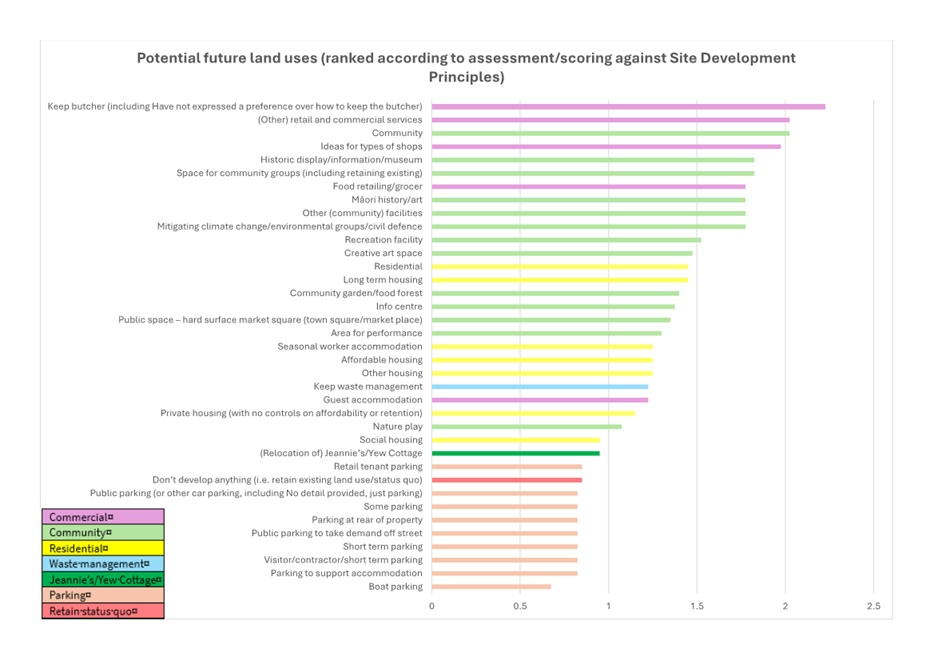
|
11. Akaroa
Recreation Ground - Akaroa Playcentre New Lease
|
|
Reference Te Tohutoro:
|
25/245789
|
|
Responsible Officer(s) Te Pou Matua:
|
Lisa
Barwood, Leasing Consultant
|
|
Accountable ELT Member Pouwhakarae:
|
Andrew
Rutledge, General Manager Citizens and Community
|
1. Purpose and Origin of the Report Te Pūtake Pūrongo
1.1 The
purpose of this report is to seek the approval of the Te Pataka o Rakaihautu
Banks Peninsula Community Board to grant a new lease for Te Whānau Tupu Ngātahi O Aotearoa - Playcentre Aotearoa Akaroa branch at the Akaroa
Sports Pavilion located at the Akaroa Recreation Grounds.
1.2 The
Community Board on 10 June 2024 approved the reclassification of part of the
Akaroa Recreation Ground to Local Purpose (Community Building) Reserve
foreshadowing a lease for Te Whānau Tupu Ngātahi O Aotearoa - Playcentre Aotearoa Akaroa; this process has been
completed.
1.3 The report is staff generated to address the issue of the Te Whānau Tupu Ngātahi O Aotearoa - Playcentre Aotearoa Akaroa known as ‘Akaroa
Playcentre’ having a sublease that is rolling over with a community
organisation that is no longer registered or operating.
2. Officer
Recommendations Ngā Tūtohu
That Te Pātaka
o Rākaihautū Banks Peninsula Community Board:
1. Receive the information in the Akaroa
Recreation Ground - Akaroa Playcentre New Lease Report.
2. Grant a lease to Te Whānau Tupu Ngātahi O Aotearoa - Playcentre Aotearoa Akaroa branch pursuant to
section 61(2A) of the Reserves Act 1977, for a lease period of thirty-three
years less a day, including renewals for an area approximately 532 square
meters of land and approximately 75 square meters of the Akaroa Sports Pavilion
being part of Akaroa Recreation Ground described as Lot 1 Deposited Plan 79110.
3. Notes that the decision in this report is assessed as low significance
based on the Christchurch City Council’s Significance and Engagement
Policy.
4. Delegates authority to the Manager Property Consultancy to do all
things necessary and make any decisions at his sole discretion that are
consistent with the intent of this report to implement the resolutions above
including but not limited to finalising the lease negotiations including the
setting of the annual rental.
3. Executive Summary Te Whakarāpopoto Matua
3.1 Akaroa
Playcentre has been a vital part of the community since its establishment in
1946. In 1993, the Playcentre relocated to the Akaroa Sports Pavilion,
contributing $67,250 towards its construction and an additional $20,000 to
develop the playground.
3.2 Initially,
Akaroa Playcentre operated under a sublease agreement with The Akaroa Sports
Complex Incorporated. However, following the dissolution of the Sports Complex
in 1999, ownership and management of the facility was transferred to the Banks
Peninsula Council. The Christchurch City Council has continued to roll over the
Playcentre’s lease, maintaining its occupancy.
3.3 To
ensure long-term stability and security for Akaroa Playcentre, staff are
seeking to formalize the existing lease arrangement. Establishing a formal
lease agreement will provide clarity and certainty, allowing the Playcentre to
continue serving the community effectively.
4. Background/Context Te Horopaki
4.1 Akaroa
Playcentre has been an integral part of the Akaroa community since 1946. In
1993, the Playcentre contributed funding towards the construction of the Akaroa
Sports Pavilion and subsequently entered into a sublease agreement with The
Akaroa Sports Complex Incorporated. This arrangement allowed the Playcentre to
operate within the park under the Reserves
Act 1977, with the land designated as a recreation reserve
under a head lease granted by the Banks Peninsula District Council in 1995.
4.2 Following
the dissolution of The Akaroa Sports Complex Incorporated, ownership of the
building was transferred to the Banks Peninsula District Council. Since the
expiration of the Playcentre’s sublease in 2014, the lease has been
renewed on a rolling basis.
4.3 The
Akaroa Domain,
where the Playcentre is located, also accommodates other recreational
facilities, including the Akaroa
Croquet Club and a mini-golf
course. Additionally, lease negotiations are currently underway
with Banks
Peninsula Sports and Recreation Incorporated for part of
another building on the domain.
4.4 Akaroa
Playcentre has exclusive access to approximately 120 square meters
within the building, which is used for equipment storage and operations. The
Playcentre currently operates two
days per week, during which they utilize the entire building.
On non-session days, the building is available for public hire, excluding the
Playcentre’s secured storage area and designated outdoor space.
4.5 The
Playcentre also maintains a dedicated
outdoor area of approximately 532 square meters, which they
have fully funded and maintained. This includes fencing, gardening, equipment,
and storage sheds. The proposed lease agreement will formalize the
Playcentre’s exclusive
use of Areas A and B, as outlined in the plan below.
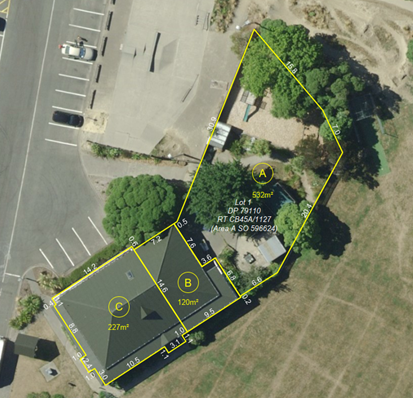
4.6 A
new lease could not be granted until a reclassification of part of the reserve
was completed. This process was finalized in 2024, allowing the Council to
proceed with granting a new lease for Akaroa Playcentre. The reclassified area
is highlighted in yellow on the map below, ensuring compliance with regulatory
requirements and securing long-term tenure for the Playcentre.
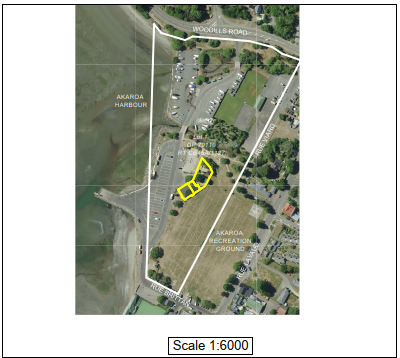
4.7 The
annual rent will be set in accordance with the Council’s policy for
setting rentals to community and sports groups. The annual rent will be
set at $211 plus GST per annum, with three yearly rent reviews to be set in
accordance with the Council’s policy for setting rents to community and
not-for-profit groups.
Options Considered Ngā
Kōwhiringa Whaiwhakaaro
4.8 The
following reasonably practicable options were considered and are assessed in
this report:
4.8.1 To deal unilaterally
and grant a lease to Playcentre for the area they occupy.
4.8.2 To advertise and run
an expression of interest for all local groups to see who else would like to
lease the area.
4.9 The
following options were considered but ruled out:
4.9.1 Relocating the
Playcentre (a charitable trust) to an alternative site. This is impractical and
a costly option with limited suitable facilities available in the area.
Options Descriptions Ngā
Kōwhiringa
4.10 Preferred
Option: to deal unilaterally and grant a lease to playcentre for the area
they occupy.
4.10.1 Option Description: This
option involves granting a formal lease agreement to Playcentre for the
specific area they currently occupy. The lease would provide long-term security
of tenure, allowing Playcentre to continue delivering early childhood education
and community services. The terms of the lease would be negotiated to align
with council policies and community expectations
4.10.2 Option Advantages
· Ensures Playcentre has stability and security to continue
operations.
· Supports early childhood education and community engagement.
· Recognizes the long-standing presence and contribution of Playcentre
to the community and building of the facility.
4.10.3 Option Disadvantages
· Limits opportunities for alternative community groups to access the
space when playcentre is in session.
· Could be perceived as lacking transparency if no wider consultation
is undertaken.
4.11 To advertise and
run an expression of interest for all local groups to see who else would like
to lease the area.
4.11.1 Option
Description: This option involves publicly
advertising the availability of the site and running an Expression of Interest
(EOI) process. Local community groups, including Playcentre and other
interested organizations, would be invited to submit proposals for leasing the
area. The selection process would be based on criteria such as community
benefit, financial viability, and alignment with council priorities.
4.11.2 Option Advantages
· Ensures a fair and transparent process by allowing multiple
community groups to express interest.
· Provides an opportunity to identify the best use of the space based
on community needs.
· Encourages broader community engagement and participation.
4.11.3 Option Disadvantages
· Could create uncertainty for Playcentre and disrupt their operations
if they are not selected.
· Involves additional administrative time and costs to run the EOI
process.
· May lead to disputes or dissatisfaction among applicants who are not
successful.
Analysis Criteria Ngā Paearu
Wetekina
4.12 Community
Benefit
· Playcentre provides a well-established, trusted service benefiting
young children and families in the community.
· Playcentre’s cooperative model encourages parental engagement,
strengthening social bonds and community participation.
· Compared to some private providers, Playcentre offers an affordable
early childhood education option, increasing accessibility for families from
diverse economic backgrounds.
4.13 Playcentres Financial
Contribution to the Facility
· Playcentre has financially contributed to the construction or
development of the facility, so granting them a lease acknowledges and respects
their investment.
· Playcentre’s financial contribution means the facility was
partly built through community investment, reinforcing local ownership and
involvement.
· Encourages future community partnerships in public infrastructure
development.
5. Financial Implications Ngā Hīraunga Rauemi
Capex/Opex Ngā Utu Whakahaere
|
|
Recommended Option
|
Option 2 - EOI
|
|
|
Cost to Implement
|
Staff time absorbed in operating budgets
|
Advertising in the local papers and EOI
documents to be created – approximately $500
|
|
|
Maintenance/Ongoing Costs
|
No change
|
No change
|
|
|
Funding Source
|
Not applicable
|
Parks Unit budget
|
|
|
Funding Availability
|
Not applicable
|
Parks planning operational budget
|
|
|
Impact on Rates
|
No impact
|
n/a
|
|
6. Considerations Ngā Whai Whakaaro
Risks and Mitigations Ngā
Mōrearea me ngā Whakamātautau
6.1 The
risk in granting a lease to Akaroa Playcentre is that they may discontinue
their activities due to membership or funding from their parent
organisation. The lease would need to be terminated and the space would
be advertised for lease to other community groups. Additionally, the building
remains available for bookings by other groups, ensuring continued use of the
facility. If no other community group expresses interest in leasing the area,
bookings could be expanded to encompass the entire site, maximizing its
utilization.
Legal
Considerations Ngā Hīraunga ā-Ture
6.2 Statutory
and/or delegated authority to undertake proposals in the report:
6.2.1 Community Boards have the delegated authority (Part D – Sub
Part 1) to grant leases of local purpose reserves in accordance with this
section.
6.3 Other Legal Implications:
6.3.1 The legal
consideration is the terms and conditions of the
lease between the Council and the Tenant.
Strategy and Policy Considerations Te Whai
Kaupapa here
6.4 The
required decision:
6.4.1 Align with the Christchurch
City Council’s Strategic Framework. A collaborative
confident city – residents have an opportunity to participate in
community life.
6.4.2 Is assessed as low significance based on the Christchurch City
Council’s Significance and Engagement Policy. The level of
significance was determined by the number of
people affected and the use of the local purpose community reserve is in
keeping with that purpose.
6.4.3 Is consistent with Council’s Plans and
Policies.
6.5 This
report supports the Council's
Long Term Plan (2024 - 2034):
6.6 Parks, Heritage and Coastal Environment
6.6.1 Activity: Parks and Foreshore
· Level of Service: 6.8.5 Resident satisfaction
with the overall availability of recreation facilities within the City’s
parks and foreshore network - >= 70%
6.7 Communities & Citizens
6.7.1 Activity: Community Development and Facilities
· Level of Service: 2.0.1.1 Provide a sustainable
network of community facilities to empower resilient, active, and connected
communities owning their own future - 78 - 82 Facilities
Community Impacts and Views Ngā Mariu
ā-Hāpori
6.8 A public notice identifying the land to be reclassified did not
receive any submissions for or against; the reclassification allows the
building to be better utilised as it will allow other groups to use the
facility that may not have been able to under the Reserves Act 1977.
6.9 The decision affects the following wards/Community Board areas:
6.9.1 Te Pataka o
Rakaihautu Banks Peninsula Community Board.
6.10 The Community Board approved the change in classification and were made aware
that a report would be forthcoming seeking their approval to grant a lease for
the Akaroa Playcentre.
Impact on Mana Whenua Ngā Whai Take
Mana Whenua
6.11 The decision does not involve a significant decision in relation to
ancestral land, a body of water or other elements of intrinsic value, therefore
this decision does not specifically impact Mana Whenua,
their culture, and traditions.
6.12 The decision is
not a matter of interest to Mana Whenua and will not
impact on our agreed partnership priorities with Ngā
Papatipu Rūnanga.
6.13 MKT were
approached when reclassifying the reserve and at that point they had no issues
with the reclassifying to allow Playcentre to enter a lease. MKT advised they
didn’t require further engagement on the matter.
Climate Change Impact Considerations Ngā
Whai Whakaaro mā te Āhuarangi
6.15 The
proposals in this report are unlikely to contribute significantly to adaptation
to the impacts of climate change or emissions reductions.
6.16 There will be no
change to the general use of the facilities and the reserve.
7. Next Steps Ngā Mahinga ā-muri
7.1 Preparation
and execution of the lease documentation.
Attachments Ngā Tāpirihanga
There are no
attachments to this report.
In addition to the attached documents, the following background
information is available:
|
Document
Name – Location / File Link
|
|
Not
applicable
|
Signatories Ngā Kaiwaitohu
|
Author
|
Lisa Barwood -
Leasing Consultant
|
|
Approved By
|
Kathy Jarden -
Team Leader Leasing Consultancy
Angus Smith -
Manager Property Consultancy
Kelly Hansen -
Manager Parks Planning & Asset Management
Rupert Bool -
Acting Head of Parks
|
|
12. Te Oka Reserve - Pine plantation conversion to
native forest
|
|
Reference Te Tohutoro:
|
25/74231
|
|
Responsible Officer(s) Te Pou Matua:
|
Alison
Evans
|
|
Accountable ELT Member Pouwhakarae:
|
Andrew
Rutledge, General Manager Citizens and Community
|
1. Purpose and Origin of the Report Te Pūtake Pūrongo
1.1 The
purpose of this report is to seek the Community Board’s approval for the
transition of a pine plantation on Te Oka Reserve to native forest.
1.2 The
report follows an assessment of the pine forests by Regional Parks rangers and
researchers from Manaaki Whenua Landcare Research into the merits of developing
a restoration plan and research project to transition the pine plantation to
native forest.
1.3 The
block of pines is approximately 13ha in size and has not been maintained for
production purposes.
1.4 The
block of pines was also excluded from the Emissions Trading Scheme when Te Oka
was registered in late 2022.
2. Officer Recommendations Ngā Tūtohu
That Te Pātaka
o Rākaihautū Banks Peninsula Community Board:
1. Receive the information regarding the rationale for transitioning a
pine plantation on Te Oka Reserve to native forest in the form of a proposal.
2. Approve the recommendation to adopt Option One of the report
to use passive restoration to transition the plantation to native forest.
3. Background/Context Te Horopaki
3.1 Christchurch
City Council (CCC) manages Te Oka Reserve Reserve on the Banks Peninsula. The
reserve supports a small (13 ha) stand of Pinus radiata which were
present when the land was purchased by CCC.
3.2 This
legacy forest is unmanaged (the trees haven’t been pruned or thinned) and
have minimal commercial value. The forest is not part of the Emissions
Trading Scheme and is not being used to offset CCC’s carbon footprint.
3.3 The
trees are now reaching an age where their future management will become
challenging. As they continue to age they will become more susceptible to
windthrow events and also pose an increased fire risk to the area.
3.4 The
forest is also a seed source for wilding pines which given their proximity to
the nearby naturally regenerating native forest is a particular concern.
3.5 
It is CCC’s view that these exotic trees would provide
more benefits to the reserve as a whole if they were gradually transitioned to
native forest that support biodiversity and contribute to the resilience of the
wider landscape.
3.6 Options
that consider the ecological, social and a te ao Māori values are outlined
below (Section 4).
4. Considerations Ngā Whai Whakaaro
Options Considered Ngā Kōwhiringa Whaiwhakaaro
4.1 Option
One: Passive tree establishment (preferred option).
This technique
involves gradual removal of the pine forest canopy allowing passive
regeneration of native trees. Small groups of pine trees are gradually treated
with herbicide using a proven drilling and filling technique which kills the
pine trees in situ.
Advantages:
· cost-effective as no requirement to remediate land or replant
· reduced weed invasion
· rapid rates of native tree regeneration
· natural succession patterns which improve long-term ecological
benefits
· low visual impact
· allows research opportunities to study the benefits of this
technique for other plantations around Aotearoa New Zealand.
· reflects the management of pine plantations being undertaken by
other councils
· no disturbance to soil, so less erosion and run off into waterways
· gradual decay of trees providing habitat for native birds, insects
and fungi
· minimal added fire risk as understory is replaced by native trees
· likely to meet the aspirations of mana whenua and the community
Disadvantages:
· it is a gradual process meaning some residual pine trees will remain
for 10 years and continue to provide seed source for wilding pines
· residual trees can become vulnerable to windthrow
4.2 Option
Two: Clear-felling
Advantages:
· tree extraction is completed quickly
· potential for some financial return
Disadvantages:
· site remediation will be required following timber extraction
· compaction of soil and damage to the adjacent native biodiversity
· requires development of tracks and a skid site to process timber
· may require consents as it is adjacent to a Site of Ecological
Significance.
· risk of sediment run-off into catchment and neighbouring
Rūnanga land
· costly replanting required following tree removal
· intensive weed control will be required following tree removal for
10 years
· visually high impact
· social considerations regarding negative connotations with pine tree
harvesting
· potential for economic loss
4.3 Option
Three: Do nothing
Advantages:
· cost-effective as no requirement to remediate land or input from CCC
staff
Disadvantages:
· ongoing fire risk
· risk of damage to perimeter fencing as trees get older and fall over
uncontrolled
· ongoing visual considerations in the landscape
· the pine plantation will continue to act as a seed source for
wilding pines
· the pine plantation does not contribute to the native ecology
· the pine plantation will continue to deteriorate causing structural
damage and make it dangerous to access for weed and animal pest
control
4.4 After
considering the advice of scientists from Manaaki Whenua Landcare Research,
internal expertise (Dr Alison Evans and Nicholas Head) and the advice of
independent consultant Dr Adam Forbes, the preference of CCC is to implement
Option One – passive tree establishment.
5. Financial Implications Ngā Hīraunga Rauemi
|
|
Recommended Option
|
Costs
|
|
Cost to Implement
|
Option One
|
|
|
Maintenance/Ongoing Costs
|
Botanical Survey
Drill and filling of pine trees
Insect survey and identification
Bird survey
Animal and plant pest control
|
$12,000
$8000
$3000
(to be done in house by CCC rangers)
(to be done in house by CCC rangers)
|
|
Funding Source
|
Capex/Opex and CCC ranger staff
|
Parks Operational
|
|
Funding Availability
|
Existing capex – Ecological
Recovery Fund & Habitat and Restoration fund.
|
Parks
|
6. Considerations Ngā Whai Whakaaro
Risks and Mitigations
Ngā Mōrearea me ngā Whakamātautau
6.1 There
are no significant risks associated with this decision.
6.2 There
are minor risks such as public opposition to using herbicide to ‘drill
and fill’ trees but these are likely to be outweighed by the alternative
control techniques such as widespread aerial application of herbicide or
clear-felling.
6.3 The
successful outcome is complimentary to the aspirations of Wairewa Rūnanga
to ‘recloak’ the land in the southern bays.
Community Impacts and Views Ngā Mariu
ā-Hāpori
6.4 The decision affects the following wards/Community Board areas:
Te Pātaka o Rākaihautū
Banks Peninsula Community Board.
Impact on Mana Whenua Ngā Whai Take
Mana Whenua
The options do
not involve a significant decision in relation to ancestral land, a body of
water or other elements of intrinsic value, therefore this decision does not
specifically impact mana whenua, their culture, and traditions. The successful
outcome is complimentary to the aspirations of Wairewa Rūnanga who are
currently managing the neighbouring farm (Te Kete o Wairewa) and have an
extensive native tree planting program underway.
Attachments Ngā Tāpirihanga
|
No.
|
Title
|
Reference
|
Page
|
|
a ⇩
|
Pine forest transition
proposal.docx
|
25/98287
|
118
|
In addition to the attached documents, the following background
information is available:
Signatories Ngā Kaiwaitohu
|
Author
|
Alison Evans -
Team Leader Regional Parks
|
|
Approved By
|
Toby Chapman -
Manager Urban Forest
Paul Devlin -
Manager Regional Parks
Rupert Bool -
Acting Head of Parks
|
|
13. Leading
Light Lane - Transition of Pine Block to Native Forest
|
|
Reference Te Tohutoro:
|
25/524024
|
|
Responsible Officer(s) Te Pou Matua:
|
Toby
Chapman, Manager Urban Forest
|
|
Accountable ELT Member Pouwhakarae:
|
Andrew
Rutledge, General Manager Citizens and Community
|
1. Purpose and Origin of the Report Te Pūtake Pūrongo
1.1 This report relates to the proposed removal of a block of pine trees
located at the top of Leading Light Lane in Governors Bay.
1.2 This report has originated due to concerns regarding the condition
of a portion of the pine trees on the edge of the stand and their long-term
viability.
1.3 Given the current size of the trees and their location, staff feel
that a transition to native forest would be more appropriate for the area.
1.4 While removal of the stand is not required immediately for health
and safety reasons, it is acknowledged that the trees are not the best choice
for the long term and removal will become more costly and complicated as the
trees increase in size.
2. Officer
Recommendations Ngā Tūtohu
That Te Pātaka
o Rākaihautū Banks Peninsula Community Board:
1. Receives the information in the Leading
Light Lane - Transition of Pine Block to Native Forest Report.
2. Notes that the decision in this report is assessed as low significance
based on the Christchurch City Council’s Significance and Engagement
Policy.
3. Approve the removal of the block of pine trees and replacement with
appropriate native species.
3. Executive Summary Te Whakarāpopoto Matua
3.1 The
block of pines located above Leading Light Lane, Governors Bay is made up of a
stand of Radiata Pine which are semi-mature in age. The trees have the
potential to grow much larger. The stand is approximately 1650m2 and is
estimated to have approximately 100 trees.
3.2 Directly
below the stand is a drainage channel and a stone retaining wall. There
is also a new house build below the pines which is currently outside of fall
distance.
3.3 The
site has been identified as an opportunity to improve the area for the long
term. Staff are seeking approval from the Community Board to remove the
pine block and plant the site with native trees and shrubs.
4. Background/Context Te Horopaki
|
4.1 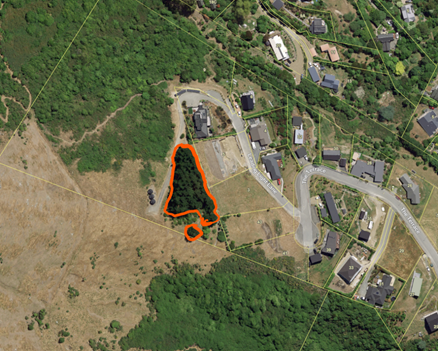
4.2
|
|
4.3 Image 1: Showing the location of the pine block circled in orange.
New house build in section circled in green.
|
4.4 The
block of pines located above Leading Light Lane, Governors Bay is made up of a
stand of radiata pine which are semi-mature in age. The trees have the
potential to grow much larger. The stand is approximately 1650m2 and is
estimated to have approximately 100 trees.
4.5 The
block of pines should be treated as a single group as they have become
interdependent on each other. This means that the removal of some of the
trees will have an impact on the others.
4.6 Directly
below the stand is a drainage channel and a stone retaining wall. There
is also a new house build below the pines which is currently outside of fall
distance.
4.7 A
portion of the trees on the northern end of the block are showing signs of
decline. Staff have not attempted to ascertain what is causing this
decline of these trees and are instead looking at the stand and its long-term
viability regardless of the declining trees.
4.8 Due
to the topography of the site (being located on a steep slope) the removal of
these trees will be challenging. This will become more challenging
overtime as the trees increase in size. It is therefore staff’s
recommendation that the trees be considered for removal while they are still
relatively small.
4.9 Staff
feel that the site would lend itself better to a native forest type
planting. One of the key reasons for this is that a native forest could
be retained permanently unlike the pine block which will likely require removal
in the next 15-20 years. Removal in 15-20 years will be significantly more
expensive, as the trees will be larger.
4.10 The replacement
of the pine block with native species will also improve the biodiversity of the
area. A landscape plan will be developed and include the species that are
appropriate for the area.
|
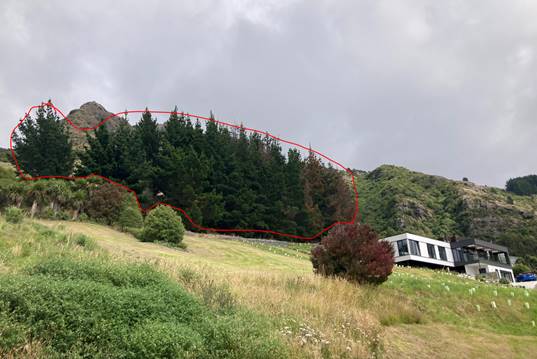
|
|
Image 2: Photo of the block of trees. Note the discolouration of
foliage.
|
Options Considered Ngā
Kōwhiringa Whaiwhakaaro
4.11 The following
reasonably practicable options were considered and are assessed in this report:
4.11.1 Remove the pine trees and plant
the area with native species.
4.11.2 Only remove the pine trees that
are in declining health
4.11.3 Retain the pine trees.
Options Descriptions Ngā
Kōwhiringa
4.12 Preferred
Option: Option 1 Remove the pine block and replace with native species-
4.12.1 Option Advantages
· Removes the risk of the pine trees declining and ongoing
maintenance.
· Improves the biodiversity of the area.
4.12.2 Option Disadvantages
· Bank side is exposed until native vegetation can establish.
4.13 Option 2:
Only remove the pine trees that are in declining health.
4.13.1 Option Advantages
· Retain the health portion of the block.
4.13.2 Option Disadvantages
· Exposes the retained trees to wind loading, increasing likelihood of
failure.
· Future safety concerns with adjacent property.
· Retained trees to continue growing, making extraction more difficult
and costly in the future.
4.14 Option 3:
Retain the trees – do nothing.
4.14.1 Option Advantages
· No upfront cost now.
4.14.2 Option Disadvantages
· Trees continue to grow making extraction more difficult and costly
in the future.
· Future safety concerns with adjacent property.
· Loss of time for establishment of more appropriate native species
5. Financial Implications Ngā Hīraunga Rauemi
Capex/Opex Ngā Utu Whakahaere
|
|
Recommended Option
|
Option 2 – Partial removal
|
Option 3 – Do Nothing
|
|
Cost to Implement
|
$80,000 (removal and replanting)
|
$20,000 (removal only)
|
$0
|
|
Maintenance/Ongoing Costs
|
Maintenance of planting during
establishment covered under planting contract
|
|
|
|
Funding Source
|
Urban Forest Capital Fund + Red Zone Eco
Restoration (Ex OARC)
|
Urban Forest Capital Fund + Red Zone Eco
Restoration (Ex OARC)
|
|
|
Funding Availability
|
Existing
|
Existing
|
|
|
Impact on Rates
|
Nil
|
Nil
|
Future CAPEX allocation required when
removal becomes unavoidable
|
5.1 The
cost will be shared by CAPEX budgets and the replacement planting will be
undertaken by the Urban Forest Team.
6. Considerations Ngā Whai Whakaaro
Risks and Mitigations Ngā
Mōrearea me ngā Whakamātautau
6.1 Staff
have received quotes for the tree removal which provides a level of certainty
around the current price. Any delays in gaining approval could result in
a price increase.
Legal Considerations Ngā
Hīraunga ā-Ture
6.2 Statutory
and/or delegated authority to undertake proposals in the report:
6.2.1 Part D (Section 42)
of Council’s delegations register delegates Community Boards the powers
to “determine to plant, maintain and remove trees on
reserves within the policy set by the Council.”
6.2.2 Global Consent
RMA/2021/2059 can be used to remove the trees.
6.3 Other Legal Implications:
Strategy and Policy Considerations Te Whai
Kaupapa here
6.4 The
required decision
6.4.1 Align with the Christchurch
City Council’s Strategic Framework. with
a particular focus on a green, liveable city through the planting of a native
forest and improvements in biodiversity.
6.4.2 Is assessed as low significance based on the Christchurch City
Council’s Significance and Engagement Policy. The level of
significance was determined by the level of
impact these removals will have and the number of properties that will be
affected.
6.4.3 Is consistent with Council’s Plans and
Policies.
6.5 This
report supports the Council's
Long Term Plan (2024 - 2034):
6.6 Parks, Heritage and Coastal Environment
6.6.1 Activity: Parks and Foreshore
· Level of Service: 6.3.2.1 Comply with Canterbury
Regional Pest Management Plan - Annual compliance 100% (nil notices of
direction served by ECan)
6.7 The
decision is consistent with Council’s Plans and
Policies. Section 4.7 of Council tree policy where approval for the removal
of trees to facilitate projects on council land will take into account the
value of the project to the community, including public health and/or the local
environment and considerations taken for retaining existing trees compared with
the loss of the benefits provided by the trees.
6.8 If the preferred option is approved, Tree Policy 1.9 will be met as
the area will be planted with native species to replace the canopy which is
lost within 20 years
Community Impacts and Views Ngā Mariu
ā-Hāpori
6.9 The decision affects the following wards/Community Board areas:
6.9.1 Te Pātaka o Rākaihautū – Banks Peninsula
Impact on Mana Whenua Ngā Whai Take
Mana Whenua
6.10 The decision
does not involve a significant decision in relation to ancestral land, a
body of water or other elements of intrinsic value, therefore this decision
does not specifically impact Mana Whenua, their culture, and traditions.
6.11 The decision does
not involve a matter of interest to Mana Whenua and will
not impact on our agreed partnership priorities with
Ngā Papatipu Rūnanga.
6.12 The report
relates to the removal of exotic species with no cultural significance, these
would be replaced by native species.
Climate Change Impact Considerations Ngā
Whai Whakaaro mā te Āhuarangi
6.13 The decisions in
this report are likely to:
6.13.1 Be neutral relative to
adaptation to the impacts of climate change.
6.13.2 Contribute positively to
emissions reductions in the long term. While removal of these trees will
return their stored carbon to the atmosphere in the short term, replacement
with permanent native species will sequester more carbon over time (in addition
to the biodiversity benefits that such planting offers).
7. Next Steps Ngā Mahinga ā-muri
7.1 If
the removals are approved a contractor will be engaged to undertake the works.
7.2 Replanting
will be planned to be completed in the 2025 planting season.
Attachments Ngā Tāpirihanga
There are no
attachments to this report.
In addition to the attached documents, the following background
information is available:
|
Document
Name – Location / File Link
|
|
Not
applicable
|
Signatories Ngā Kaiwaitohu
|
Authors
|
Toby Chapman -
Manager Urban Forest
James McDuff -
Arborist
|
|
Approved By
|
Rupert Bool -
Acting Head of Parks
|
|
14. 2024/25 Discretionary Response Fund
Applications - Akaroa Resource Collective Trust, Te Whare Tapere O Te Mata
Hapuku Society Incorporated
|
|
Reference Te Tohutoro:
|
25/534897
|
|
Responsible Officer(s) Te Pou Matua:
|
Steffi
Brightwell, Community Development Advisor
Jane Harrison, Community Development Advisor
|
|
Accountable ELT Member Pouwhakarae:
|
Andrew
Rutledge, General Manager Citizens and Community
|
1. Purpose and Origin of the Report Te Pūtake Pūrongo
1.1 The
purpose of this report is for the Te Pātaka o Rākaihautū Banks
Peninsula Community Board to consider an application for funding from its 2024/25 Discretionary Response Fund from the organisation(s) listed below.
|
Funding Request Number
|
Organisation
|
Project Name
|
Amount Requested
|
Amount Recommended
|
|
DRF24-25_018
|
Akaroa Resource Collective Trust
|
Akaroa Information Centre
|
$3,456
|
$1,000
|
|
DRF24-25_015
|
Te Whare Tapere O Te Mata Hapuku Society
Incorporated
|
Recover chairs & Repair Heatpump at Birdlings Flat Community
Hall
|
$1,940
|
$1,940
|
1.2 There
is currently a balance of $16,707 remaining in the fund.
2. Officer Recommendations Ngā Tūtohu
That Te Pātaka
o Rākaihautū Banks Peninsula Community Board:
1. Receives the information in the 2024/25
Discretionary Response Fund Applications - Akaroa Resource Collective Trust, Te
Whare Tapere O Te Mata Hapuku Society Incorporated Report.
2. Notes that the decisions in this report are assessed as low
significance based on the Christchurch City Council’s Significance and
Engagement Policy.
3. Approves a grant of $1,000 from its 2024/25 Discretionary Response
Fund to Akaroa Resource Collective Trust towards the Coordinator wages for
Akaroa Information Centre Trial.
4. Approves a grant of $1,940 from its 2024/25 Discretionary Response
Fund to Te Whare Tapere O Te Mata Hapuku Society
Incorporated towards Recovering chairs & Repair
Heatpump at Birdlings Flat Community Hall.
3. Key Points Ngā Take Matua
Strategic Alignment Te Rautaki
Tīaroaro
3.1 The
recommendations above are aligned with the Council's Strategic Framework and in
particular the strategic priority to be an inclusive
and equitable city. The
project also aligns with the Strengthening Communities Strategy.
3.2 The
recommendations are consistent with the Strengthening Communities Together
Strategy.
Decision Making Authority Te Mana
Whakatau
3.3 The
Community Board has the delegated authority to determine the allocation of the
Discretionary Response Fund for each community.
3.3.1 Allocations must be
consistent with any Council-adopted policies, standards or criteria.
3.3.2 The Fund does not
cover:
· Legal or environmental court challenges
against the Council, Council Controlled Organisations, or Community Board
decisions.
· Projects or initiatives that change the scope of a Council project
or lead to ongoing operational costs to the Council
(though Community Boards can recommend to the Council that it consider a grant
for this purpose).
Assessment of Significance and Engagement Te
Aromatawai Whakahirahira
3.4 The decisions in this report are assessed as
low significance based on the Christchurch City Council’s Significance
and Engagement Policy.
3.5 The significance level was determined by the number of people
affected and/or with an interest.
3.6 Due to the assessment of low significance, no further community
engagement and consultation is required.
Discussion Kōrerorero
3.7 At the time of writing, the balance of the 2024/25 Discretionary
Response Fund is:
|
Total Budget 2024/25
|
Granted To Date
|
Available for allocation
|
Balance If Staff Recommendation adopted
|
|
$47,588
|
$29,588
|
$16,707
|
$13,767
|
3.8 Based
on the current Discretionary Response Fund criteria, the applications above are
eligible for funding.
3.9 The
attached Decision Matrix provides detailed information for the
applications. This includes organisational details, project details,
financial information, and a staff assessment.
Attachments Ngā Tāpirihanga
|
No.
|
Title
|
Reference
|
Page
|
|
a ⇩
|
Te Pātaka o Rākaihautū Banks Peninsula Community
Board - Akaroa Resource Collective Trust - Decision Matrix
|
25/538118
|
138
|
|
b ⇩
|
Te Pātaka o Rākaihautū Banks Peninsula Community
Board - Te Whare Tapere O Te Mata Hapuku Society Incorporated - Decision
Matrix
|
25/476159
|
139
|
Signatories Ngā Kaiwaitohu
|
Authors
|
Steffi
Brightwell - Community Development Advisor
Jane Harrison
- Community Development Advisor
|
|
Approved By
|
Penelope
Goldstone - Manager Community Governance, Banks Peninsula
|
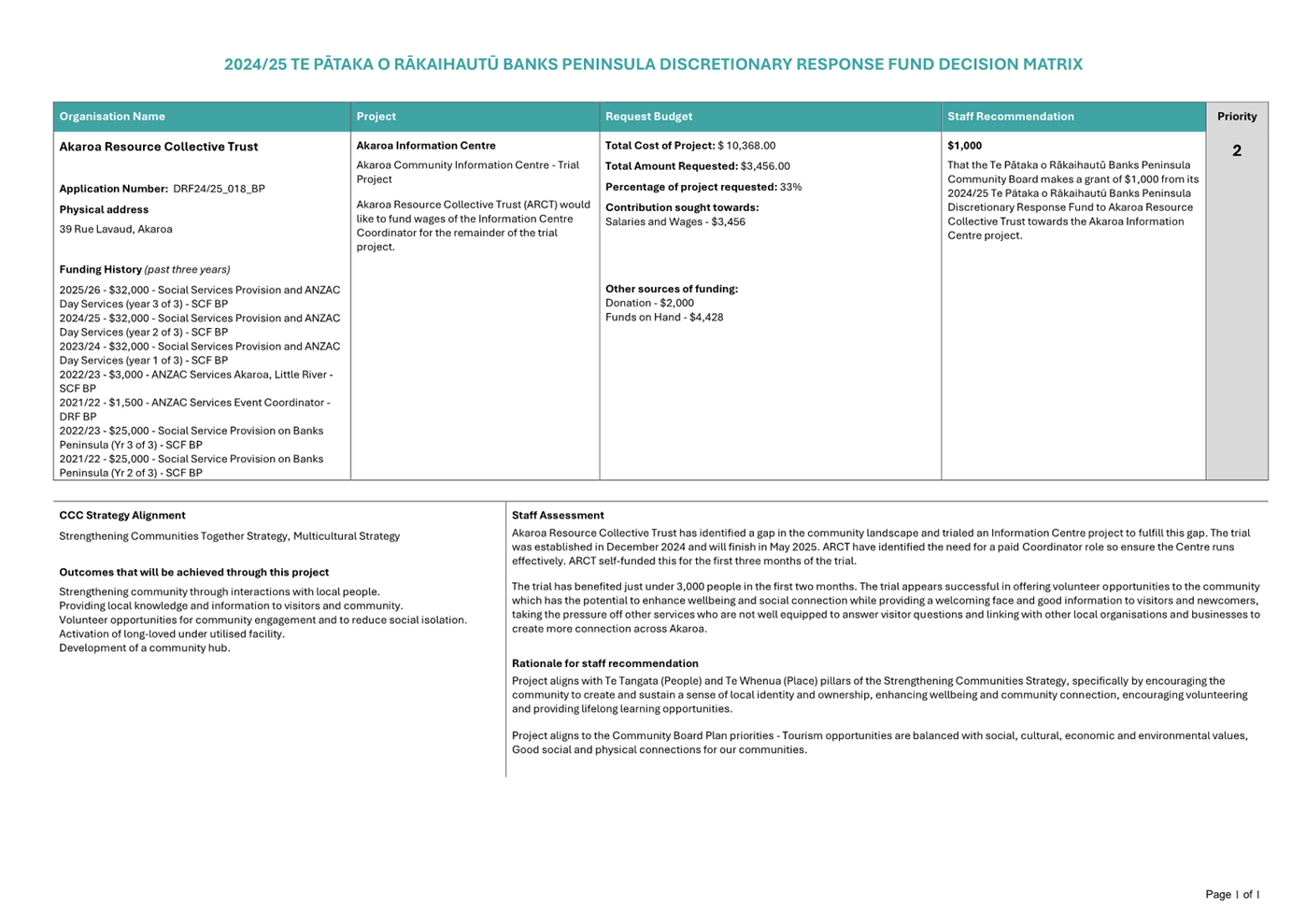
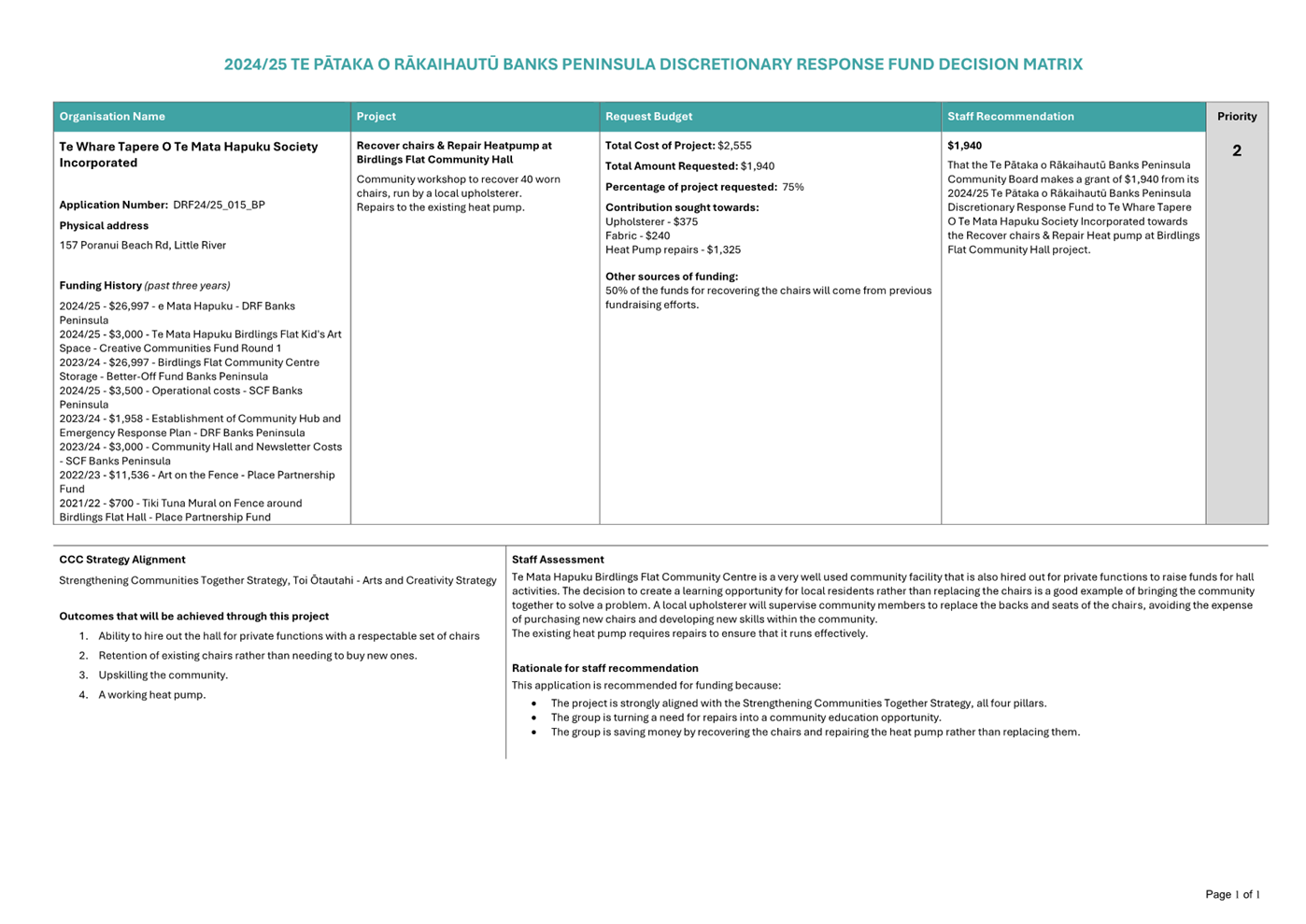
|
15. Te Pātaka o Rākaihautū Banks
Peninsula Community Board Area Report - April 2025
|
|
Reference Te Tohutoro:
|
24/2207271
|
|
Responsible Officer(s) Te Pou Matua:
|
Penelope
Goldstone, Community Governance Manager
|
|
Accountable ELT Member Pouwhakarae:
|
Andrew
Rutledge, General Manager Citizens and Community
|
1. Purpose of Origin of the Report Te Pūtake Pūrongo
1.1 This
report provides the Board with an overview of initiatives and
issues current within the Community Board area.
1.2 This report is staff-generated monthly.
2. Officer Recommendations Ngā Tūtohu
That Te Pātaka
o Rākaihautū Banks Peninsula Community Board:
1. Receives the information in the Te
Pātaka o Rākaihautū Banks Peninsula Community Board Area Report
- April 2025.
3. Community Support, Governance and Partnership Activity
3.1 Community Governance Projects
|
Activity
|
Detail
|
Timeline
|
Strategic Alignment
|
|
Allandale Hall
|
The repairs to the floor, installation of mechanical
sub-floor ventilation and installation of skylight flashings have been
completed.
Hall maintenance plans are now being reactivated.
Apex Water have been consulted on re-instating a potable
water supply compliant with the Water Services Act 2021 and we now await
their proposal and costs.
|
Ongoing
|
Good social and physical community connections
|
|
Destination Management Plan (DMP) Implementation
|
Staff worked with ChristchurchNZ to identify ways in which
progress could be shared widely including:
• Developing
a Banks Peninsula DMP Dashboard.
• Producing
regular DMP update newsletters.
• Holding
regular Public Reporting Workshops or forums where community members can hear
about progress, voice any opinions, share ideas and contribute to the
implementation of the plan.
|
Ongoing
|
Tourism opportunities are balanced with social,
cultural, economic and environmental values
|
|
Whakaraupō Emergency Hubs Collective
|
All Emergency Hubs joined a “test” of the
walkie talkies, funded by the Community Board, to learn which communities
could communicate well with each other. Lyttelton Hub will map these links
and connections out so that everyone around the harbour understands the
clearest and best hub to communicate any needs/situation updates with.
|
Ongoing
|
Proactive planning for climate change
|
|
Whakaraupō Community Network Youth Hui
|
A Youth Hui was held in Diamond Harbour, hosted by Diamond
Harbour Youth & Community Trust and Diamond Harbour School. The purpose
of the hui was to identify key issues faced by local youth (recognising that
this was from a broader community perspective, rather than from young people
themselves), and explore potential opportunities for youth development. The
hui included presentations from guest speakers and then a workshop format for
participants to identify issues and service gaps and explore opportunities to
address these locally.
|
Completed
|
Good social and physical community connections
|
|
Le Bons Bay Flooding
|
Staff held a community meeting in Le Bons to gather
information and look to progress flooding working party and to progress a Le
Bons Bay resilience hub. Both of these are currently being worked on with
more meetings to follow.
|
Ongoing
|
Proactive planning for climate change
|
|
Responding to community identified issues
|
Staff have been providing support to
community members from around Akaroa Harbour who were looking for next steps
to make progress on issues they have identified in their communities. These
requests mostly relate to parking safety.
|
Ongoing
|
Good social and physical community connections
|
|
Lyttelton Farmers Market
|
Staff are supporting Project Lyttelton
who manage the Lyttelton Farmers Market to identify ways to reduce the
current high costs of traffic management. A funding application will be
considered by Council to provide interim support to the Market while a more
financially sustainable approach to traffic management is developed.
|
Ongoing
|
Good social and physical community connections
|
|
Lyttelton Children’s Community
Garden
|
Lyttelton Community Garden has a developed a
Children’s Garden, which has been designed by children for children to
experience the outdoors, to play and grow a sense of connection and of
belonging to both their community and the wider environment of Whakaraupō. The garden enables children to engage with
their environment in a way that is age and stage appropriate, to increase
their positive health and knowledge outcomes around food and food choices,
and develop decision making ability to influence their own environment, which
builds a sense of guardianship. In March 2025, the Children’s
Garden was awarded funding from the Place Partnership Fund to enable a
coordinator to support the development of the garden and increase
participation of local tamariki.
|
Ongoing
|
Good social and physical community connections
|
|
Coastguard Search and Rescue Centre at
Naval Point
|
Coastguard Canterbury opened its new
Search and Rescue Centre base for Whakaraupō at Naval Point on 15 March 2025. A carving by Caine Tauwhare and
funded by the Council is a taonga that surrounds the front door of the
main entrance to the building.
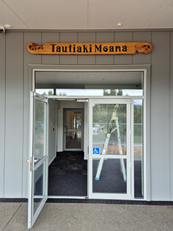
|
Ongoing
|
Good social and physical community connections
|
|
Community Research / Feasibility for Mānawa
Kāwhiu Lyttelton Recreation Centre
|
A feasibility study is being initiated for Mānawa Kāwhiu Lyttelton Recreation Centre. The
feasibility study will look at how the Recreation Centre can be activated to
best meet the needs of the community.
|
Ongoing
|
Good social and physical community connections
|
|
Funding Advice to Community Groups
|
Staff have provided funding advice at the request of
community groups who are in the process of expanding what they are offering
to the community.
|
Ongoing
|
Good social and physical community connections
|
|
Birdlings Flat Storage Sheds
|
The sheds are now completed, and the community is in the
process of moving items stored in the hall into one and community emergency
hub equipment into the other.
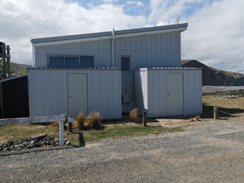
|
Completed
|
Proactive planning for climate change
Good social and physical community connections
|
|
Kaituna Hall – Return to Community
Management
|
A survey of residents has resulted in 100% of respondents
saying they are happy to attend events in the hall, a list of suggested
activities and nine residents volunteering to be part of a committee to
manage the hall.
|
Ongoing
|
Good social and physical community connections
|
|
Awa Iti Reserve toilets
|
A new standalone water tank has been ordered to avoid the
toilets running out of water during large events at the reserve.
|
Ongoing
|
Good social and physical community connections
|
|
Little River Village Planning (phase 3)
|
Staff are working with the Little River Wairewa Community
Trust, local business owners and other community organisations to plan
improvements to the area adjacent to the dog exercise area and at the end of
the Little River Rail Trail
|
Ongoing
|
Good social and physical community connections
|
|
Little River Coronation Library Storage
|
A container has been placed on Awa Iti Reserve to provide
storage for furniture and other equipment while the Little River Wairewa
Community Trust awaits repairs to Coronation Library. The Trust has been
acquiring the necessary furniture etc. in preparation for the opening
of the building and had nowhere to store it.
|
Completed
|
Good social and physical community connections
|
3.2 Community
Funding Summary
3.2.1 As at 18 March 2025
the Discretionary Response Fund unallocated balance for 2024/25 is $16,707. The Discretionary Response Fund summary as at 18 March 2025 is
attached. (Attachment A).
3.3 Participation
in and Contribution to Decision Making
3.3.1 Report back on
other Activities contributing to Community Board Plan [for items not
included in the above table but are included in Community Board Plan]
· Te Pātaka o Rākaihautū Banks Peninsula Community
Board 2023-25 Community Board Plan was adopted by the Board at their
meeting in 8 May 2023 and can be found online here.
· The Board received a report on the progress made towards achieving
the objectives of Te Pātaka o Rākaihautū
Banks Peninsula Community Board Plan 2022-2025 during the period of
September 2024 to March 2025 at its 10 March 2025
meeting. Progress on the Community Board Plan can be found online here.
· Letter/s of Support - Te Pātaka o
Rākaihautū Banks Peninsula Community Board provided a letter of
support for the Friends of the Akaroa Museum external funding application. This
application seeks a grant for the design and printing of a photographic
history.
3.3.2 Council Engagement
and Consultation.
· Have your say – at the time of
writing the report there were no consultations open within Te Pātaka o
Rākaihautū Banks Peninsula.
· A full list
of open consultations can be found on the Council's Lets Talk website at https://letstalk.ccc.govt.nz/.
· Council’s Draft Annual Plan 2025-26 - the Board submitted on the
Council’s Draft Annual Plan 2025-26. The Board was heard on 3 April
2025. (Attachment B).
· Board Submissions – Board members
presented at the following hearings:
· Dog Control Bylaw and Policy Hearing – 12 March 2025
· Ōtautahi Christchurch Future Transport Strategy – 5 March
2025
3.3.3 Start Work Notices
- Various Start Work Notices have been sent to the Board throughout the
month. All Board area and city-wide start work notices can be found at: https://ccc.govt.nz/transport/works.
3.3.4 Planned road works
and closures - Planned road works and closures are indicated on the map at
the Traffic
Updates . Additionally, a Smartview of nearby road works and closures is
available at the following link: https://smartview.ccc.govt.nz/travel/roads.
3.4 Governance
Advice
3.4.1 Public Forum –
The Board received the following Public and Open Forum presentations in
March 2025:
· NIWA Canterbury Science Fair Application.
· Proposed Matariki Awards Event
· Lyttelton Harbour Business Association
· Proposed Youth and Multicultural Initiative
Attachments Ngā Tāpirihanga
|
No.
|
Title
|
Reference
|
Page
|
|
a ⇩
|
Banks Peninsula Discretionary Response Fund Summary - March 2025
|
25/539655
|
147
|
|
b ⇩
|
Christchurch City Council Draft Annual Plan 2025-26 - Board Submission
|
25/608473
|
148
|
Signatories Ngā Kaiwaitohu
|
Authors
|
Liz Beaven -
Community Board Advisor
Steffi
Brightwell - Community Development Advisor
Linda Burkes -
Banks Peninsula Governance Advisor
Jane Harrison
- Community Development Advisor
Dane Moir -
Community Development Advisor
Heather
Spreckley - Support Officer
Jo Wells -
Community Development Advisor
Andrea Wild -
Community Development Advisor
|
|
Approved By
|
Penelope
Goldstone - Manager Community Governance, Banks Peninsula
Matthew
McLintock - Manager Community Governance Team
John Filsell -
Head of Community Support and Partnerships
|
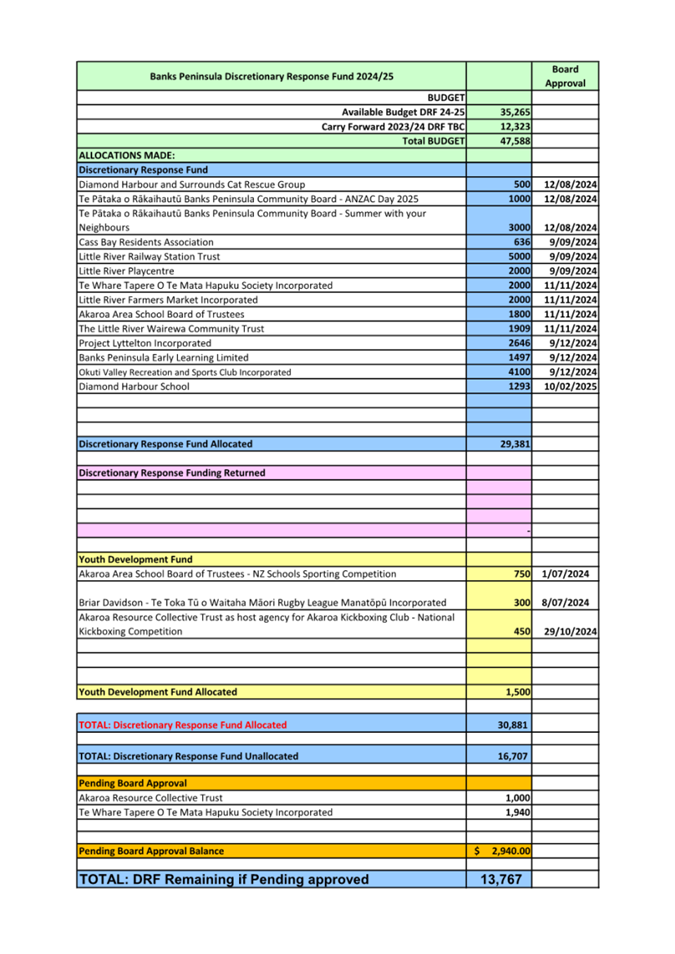
|
16. Elected
Members’ Information Exchange Te Whakawhiti Whakaaro o Te
Kāhui Amorangi
|
This item provides an opportunity for Board Members to
update each other on recent events and/or issues of relevance and interest to
the Board.
Karakia Whakamutunga
|
Unuhia, unuhia
Unuhia ki te uru tapu nui
Kia wātea, kia māmā, te ngākau,
Te tinana te wairua i te ara takatā
Koia rā e Rongo, whakairia ake ki runga
Kia tina! TINA! Hui e! TĀIKI E!
|
Draw on, draw on,
Draw on the supreme sacredness
To clear, to free the heart, the body and the spirit of mankind
Rongo, suspended high above us (i.e. in ‘heaven’)
Draw together! Affirm!
|



































